PULSE
The Art of Brewing
Laurie Porter of Smog City Brewery gives back while creating a community of craft beer lovers
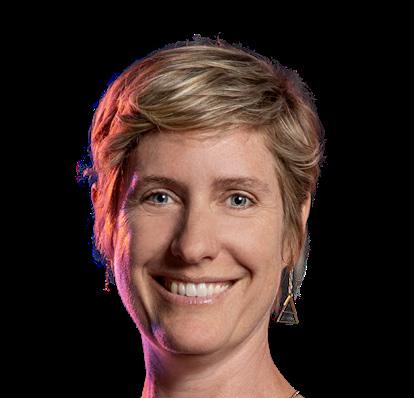
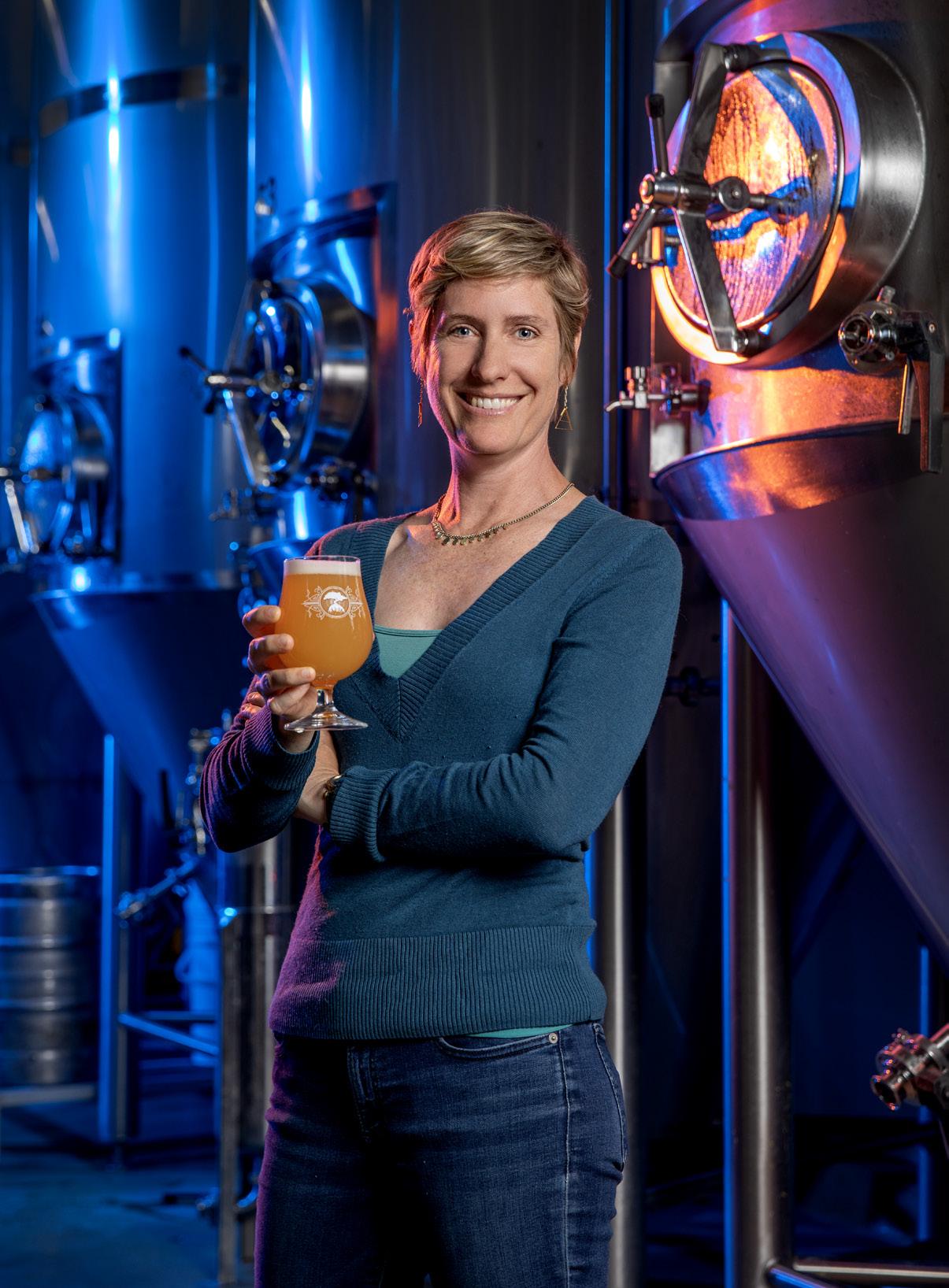
Inside:
2023
Summer
magazine
The AI evolution in hospital health care
Torrance Memorial CEO Craig Leach to retire
OUR EXPERT TEAM HAS ONCE AGAIN RANKED FIRST AMONG SOUTH BAY HOSPITALS BY U.S. NEWS & WORLD REPORT. Combined with Newsweek rankings, Torrance Memorial places in the top 1% in the nation, further solidifying our position as the number ONE hospital in the South Bay. Torrance Memorial’s quality results and rankings far exceed any other hospital in the community. Learn more at TMGetTheFacts.org
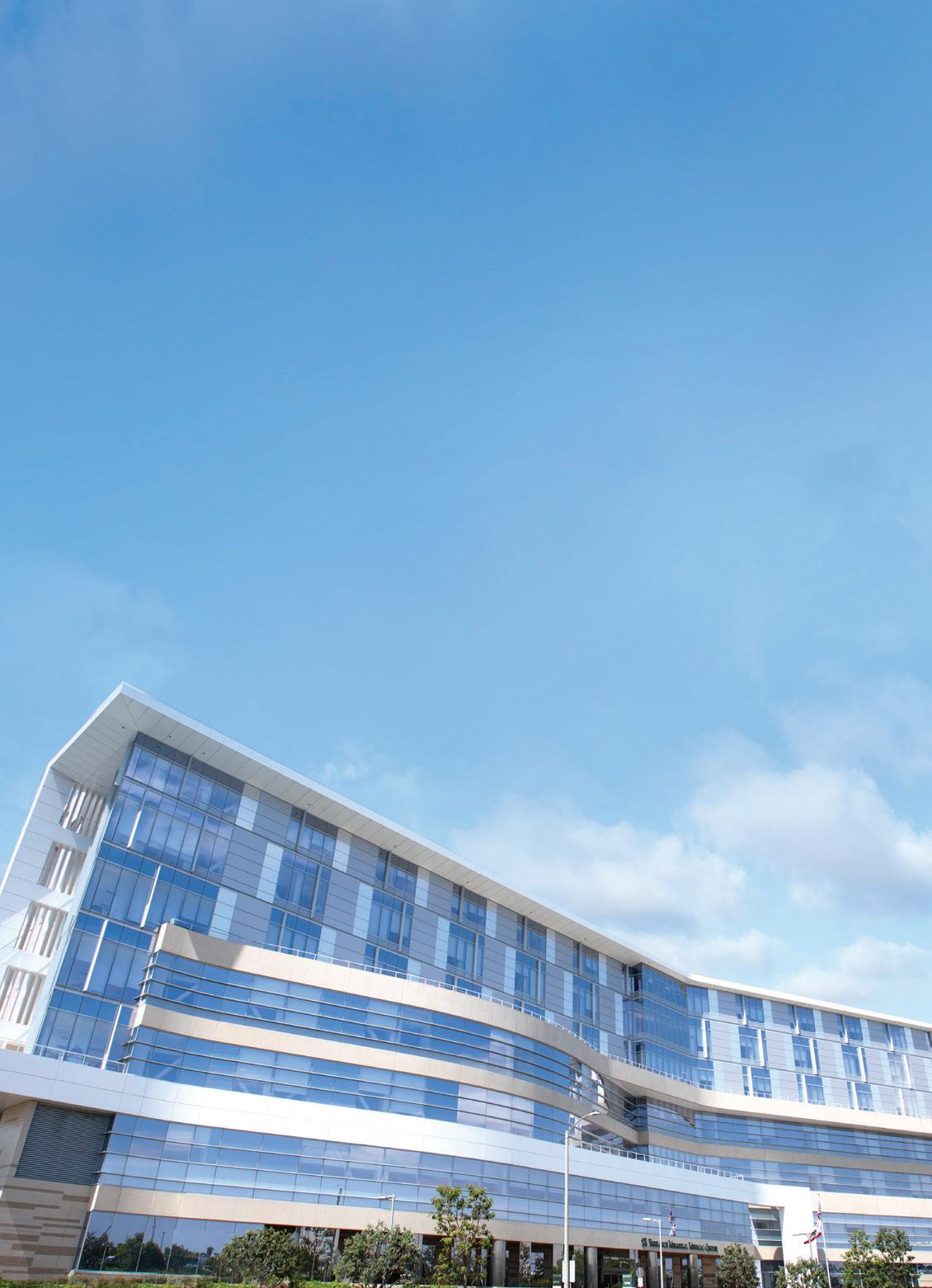
#1 Ranked Hospital in the South Bay
Ranked #4 in the L.A./O.C. Region
- U.S. News & World Report
Ranked #9 in California
- U.S. News & World Report
PULSE
A Publication of the Torrance Memorial Health System
3330 Lomita Blvd., Torrance, CA 90505 310-325-9110
EDITOR
Jill Biggins Gerbracht
EXECUTIVE DIRECTOR MARKETING
Erin Fiorito
PUBLISHER CREATIVE DIRECTOR
Vincent Rios
COPY EDITOR
Laura Watts
CONTRIBUTORS
Hannah Bodenhamer, MS, RDN
Lisa Buffington
John Ferrari
Moe Gelbart, PhD
Diane Krieger
Laura Roe Stevens
Melissa Bean Sterzick
Nancy Sokoler Steiner
PHOTOGRAPHERS
Siri Berting
Peter Cooper
JP Cordero
Deidre Davidson
Philicia Endelman
Michael Neveux
Vincent Rios
from the President

It has been my honor to convey an opening message to the Pulse readership since the magazine’s inception many years ago. I plan to retire next month after nearly 40 years with Torrance Memorial Medical Center— the last 18 years as the hospital’s president and CEO. I would like to take this opportunity to express my sincere gratitude to our incredible South Bay community.
I have long believed a hospital’s success is directly tied to its relationship with the community it serves. With Pulse it has always been our goal to weave the two together—to include news of the latest breakthroughs in health care and technology with the outstanding people and places that highlight our community. I hope you will enjoy and learn from this magazine for many years to come.
There is no question that Torrance Memorial enjoys a strong and mutually beneficial relationship with the people of the South Bay. We are so fortunate to serve a patient base that has been generous, appreciative and so committed to its local health care organization.
I would like to acknowledge and thank the fantastic physicians, community leaders, hospital staff and leadership who have worked together to create one of the premier health organizations in the state. It would be impossible for me to overstate how rewarding it has been to work with these selfless people during the past four decades.
A huge thank you to the South Bay community!
With much appreciation
Craig Leach President, CEO Torrance Memorial Medical Center
If you do not wish to receive future issues of this publication, please email publications@tmmc.com with your name and complete address as it appears on the mailing panel.
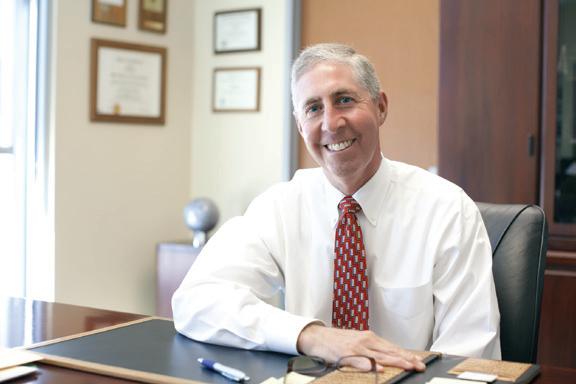
TorranceMemorial.org | 3
Published by Vincent Rios Creative, Inc. VincentRiosCreative.com ©2023 Torrance Memorial Medical Center. All rights reserved. Reproduction or use in whole or in part without written permission is prohibited. This publication is for informational purposes only and should not be relied upon as medical advice. It has not been designed to replace a physician's medical assessment and medical judgment. Always consult first with your physician regarding anything related to your personal health.
magazine
Letter
36 ZEST FOR LIFE: Allen Sanford
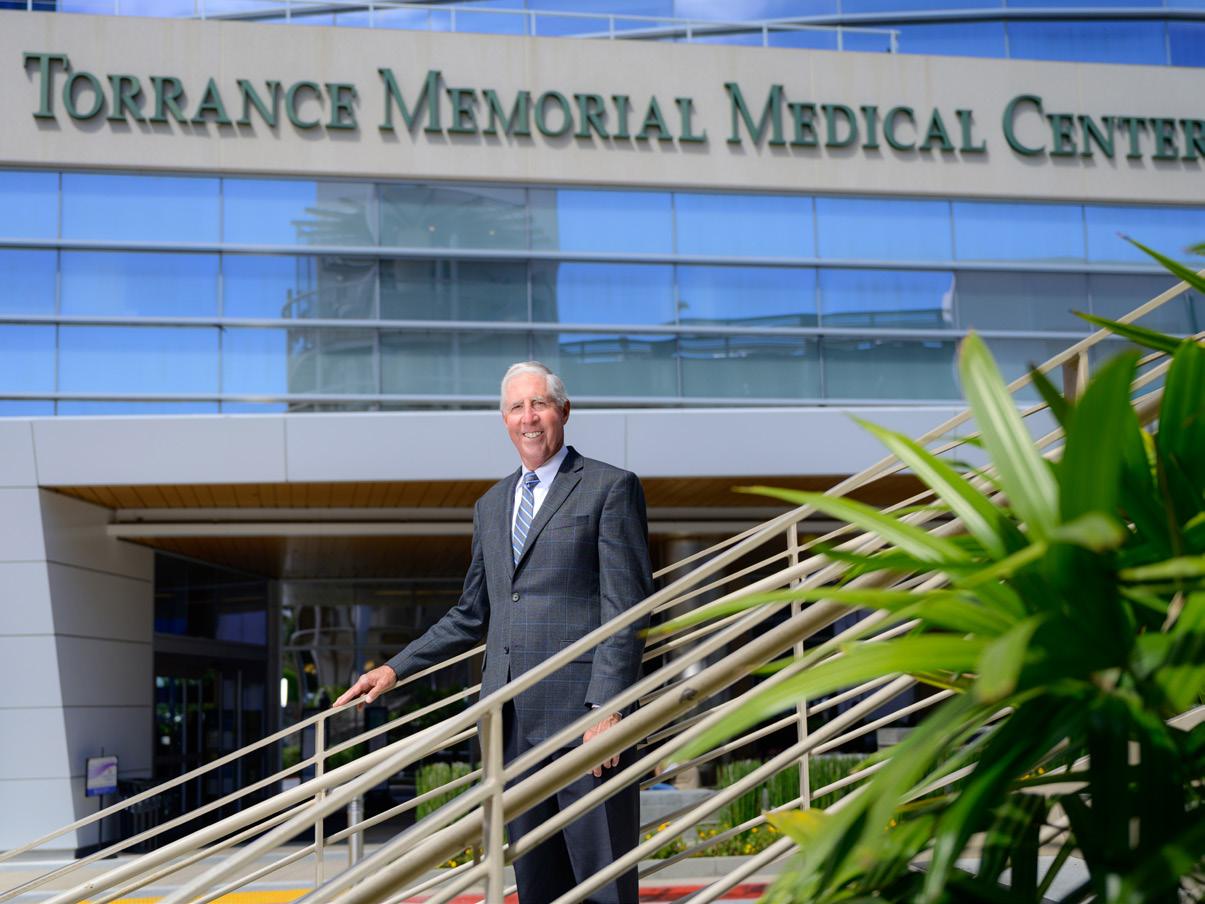
Meet the surfer-philosopher behind the South Bay's BeachLife Festival.
40 COMMUNITY BENEFIT: South Bay Food Initiative
Local teens tackle hunger in Los Angeles.
42 HELPING HANDS: Marine Mammal Care Center
Local center is a champion for abandoned and sick marine mammals.
46 COMMUNITY VIP
A South Bay Realtor's foundation supports education and other causes; Carson's first Black female mayor's work reflects a love of her community; a beer brewer mixes craft beer-making with community involvement.
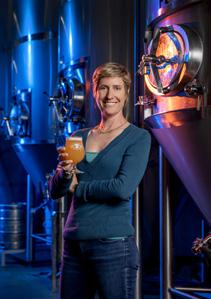
4 | Pulse Magazine Summer 2023 Contents
THE COVER
COVER PHOTO: MICHAEL NEVEUX
ON
FEATURES 24 THE AI EVOLUTION IN HEALTH CARE Hospitals are using AI to increase efficiency and decrease time to diagnose conditions. 26 SAVING LIVES FROM LUNG CANCER New ION technology lets surgeons diagnose lung cancer earlier, enabling timely treatment and quick recovery.
TWIST & SHOUT
injuries don't have to keep you down for the count.
Laurie Porter mixes craft beer-making, community involvement and industry leadership to create the perfect life blend while giving back to the community and the planet.
32
Knee
10


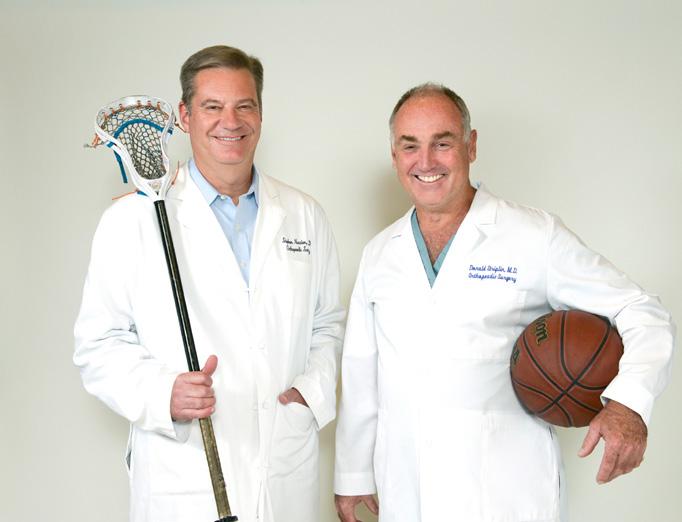
TorranceMemorial.org | 5 ON PACE 8 HEALTHY BITES Seasonal produce guide + two great recipes rich in nutrientpacked summer ingredients. 10 OUR INDISPENSABLE MAN Torrance Memorial CEO Craig Leach has led with a cool head, warm heart and a steady hand. 14 MEDICARE OPEN ENROLLMENT It's on the way. Do you need changes? 16 HEALING FROM WITHIN Torrance Memorial transforms lives through a comprehensive eating disorders treatment program. 18 DELIVERING MORE THAN EXCEPTIONAL CARE Labor and delivery—and maternal mother care—built around you. 20 GAME-CHANGING CARE Sportscaster Colin Cowherd shares his lifesaving story. 22 A FAMILY STORY Dan Pryor tells of the miraculous work of the Torrance Memorial emergency department. IN EVERY ISSUE 3 LETTER FROM THE PRESIDENT/CEO 6 AWARDS & ACCOLADES 29 MENTAL HEALTH CORNER 30 ASK THE DOCTOR Vitamin B12 supports mood, memory, energy. 44 FAMILY FOCUS: Telling Your Story 52 CALENDAR 54 MD LOCAL: Deren Sinkowitz, MD 56 FLASH EVENTS 62 A LOOK BACK: A timeline of CEO Craig Leach's nearly four decades with Torrance Memorial. 32 36 8
Awards and Accolades
U.S.News&WorldReport2023
Torrance Memorial Medical Center has been recognized as a Best Hospital for 2023–2024 for the 12th year by U.S. News & World Report This year Torrance Memorial moved up the rankings to the ninth-highest ranking hospital for overall hospital quality in California and to fourth in the Los Angeles/Orange County regions. This year, Torrance Memorial is nationally ranked in diabetes and endocrinology and high performing in seven specialties including urology and in 15 of 21 conditions and procedures areas. Ranking in the top 3% in the state affirms that Torrance Memorial is delivering on our vision to provide patient-centered care with the highest level of quality and service to the community. It means we are honoring our promise to deliver our core values of Service, Excellence, Knowledge, Stability and Community.
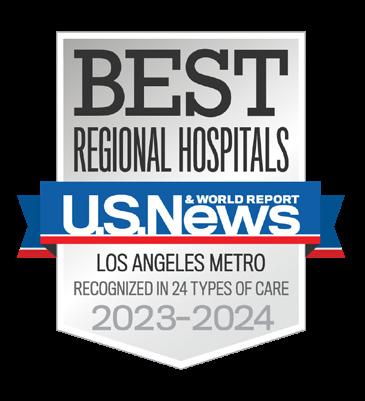
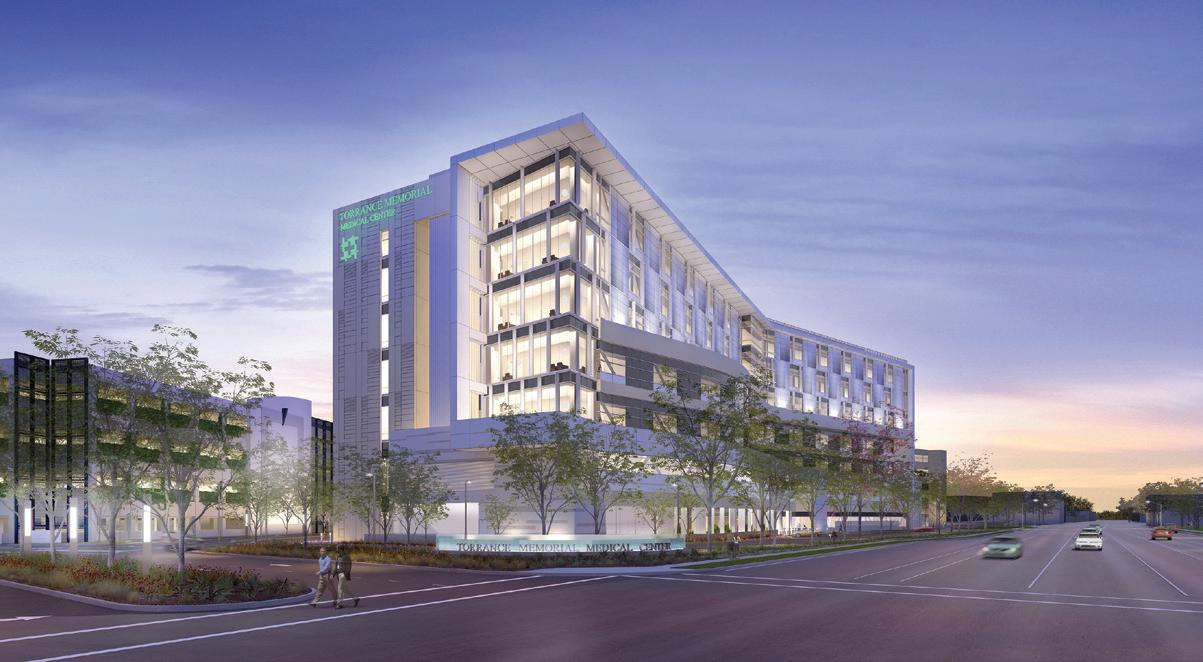
American Heart Association Get With the Guidelines Awards 2023
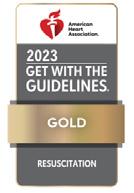

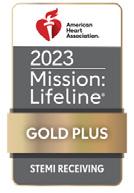
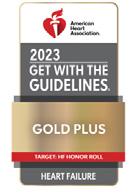
Torrance Memorial has received five American Heart Association Get With The Guidelines and Mission: Lifeline achievement awards for demonstrating commitment to following up-to-date, research-based guidelines for the treatment of heart disease and stroke—ultimately leading to more lives saved, shorter recovery times and fewer readmissions to the hospital. Our physicians, nurses and staff have worked to close the gaps separating patients from timely access to appropriate treatments. Our commitment to quality patient care is our #1 priority, and we are proud to be recognized for Gold Plus performance in Heart Failure, Stroke and STEMI receiving, and Gold in Resuscitation and NSTEMI.
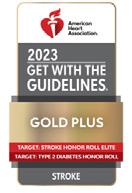
6 | Pulse Magazine Summer 2023
Newsweek
Recognized by Newsweek as part of its World’s Best Hospitals 2023 list, Torrance Memorial Medical Center ranked 223rd in the world, 40th best hospital in the nation and 10th best in California.
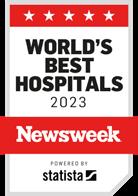
Newsweek’s America’s Best Cancer Center Hospitals 2023
Torrance Memorial Medical Center has been recognized as part of Newsweek’s inaugural list of America’s Best Cancer Hospitals 2023. This award provides patients and family members with comprehensive resources for making informed decisions about cancer care. Newsweek and Statista provided underlying data analysis based on three data sources including a nationwide survey, hospital quality metrics and patient survey results. Based on the results, Torrance Memorial is pleased to be recognized as America's Best Cancer Hospitals 2023— reinforcing our reputation of expert care and excellence in providing benchmark-leading care services for cancer patients. We are honored and proud of this accomplishment.
Academic Consortium Global Integrated Health Network
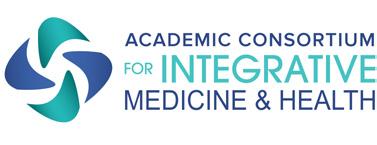
Torrance Memorial Medical Center has joined over 75 of the world's most recognized academic medical centers and health systems as a new Academic Consortium for Integrative Medicine and Health member. For integrative medicine professionals and students, the Academic Consortium is the world's most comprehensive community for advancing the practice of whole health care, with leading expertise in research, clinical care and education. This affiliation will help Torrance Memorial continue to expand our integrative medicine program. It will also connect us with other institutions working toward the same goal and encourage knowledge-sharing, networking and best practices.
4-Star Ratings from Centers for Medicare and Medicaid Services
Torrance Memorial has achieved a dual 4-star overall quality rating from the Centers for Medicare and Medicaid Services (CMS). We achieved both a 4-star HCAHPS/Patient Experience rating and a 4-star Overall Quality rating, ranking in the top 13% for LA/OC and the state of California! Achieving a 4-star rating is a testament to our teams’ dedication to providing the highest quality of care to our patients. The Overall Hospital Quality Star Rating (Overall Star Rating) summarizes a variety of measures across five areas of quality into a single star rating for each hospital.
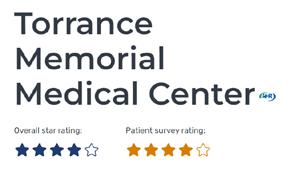
Torrance Memorial Voted the South Bay’s Best Hospital
We are honored our community has once again voted Torrance Memorial Medical Center as the BEST hospital in the South Bay—for the 14th time. Readers also voted us BEST: Cancer Treatment Center, Urgent Care, Knee Center, Physical Therapy Center, Nutrition Services, Workplace and Medical and Hospital Groups. We were also voted FAVORITE: Local Outpatient Pharmacy, Gift/ Boutique Shop and Medical Supply Store.
TorranceMemorial.org | 7
32ND ANNUAL READERS’ CHOICE AWARDS 32ND ANNUAL READERS’ CHOICE
Seasonal Produce Guide
Written by Hannah Bodenhamer, MS, RDN, Torrance Memorial Clinical Dietitian

Following a diet rich in fresh produce is known to improve health by reducing one’s risk for chronic disease, maintaining a healthy body weight, contributing to gut health and increasing one’s life expectancy. Although dietary needs vary from person to person, a general recommendation is to eat 2½ cups of vegetables and 2 cups of fruit per day (American Heart Association, 2017). Fruits and vegetables contain many nutrients such as vitamins, minerals and fiber essential to our body’s daily functions. One can maximize the flavor and nutrient content of meals at home by choosing seasonal fruits and vegetables. Here are three ways to find in-season produce:
1. Shop your local farmers market
You may see more seasonal produce offered at farmers markets. Local growers tend to rotate crops according to the season when they flourish in order to increase harvest. Shopping at your city’s farmers market is also a sustainable practice that helps boosts the local economy.
2. Look at center-aisle produce
Many grocers will market in-season produce by placing it in the center aisle. Products displayed in this fashion are more eye-catching and likely to sell. Some grocers may display signs and advertisements to promote these items. Pay attention to these marketing cues to find your seasonal produce.
3. Choose produce lower in cost
In-season produce is often harvested in abundance due to ideal growing conditions and ease. For this reason, the selling price of these products may be deflated or marked on sale. Choosing in-season produce is not only better for nutrition quality but for your wallet too.
Check out the following recipes with nutrientpacked summer ingredients you will love! →
8 | Pulse Magazine Summer 2023 On Pace
Healthy Bites
SEASONAL CHARCUTERIE
Serves 4–6
Charcuterie boards have become a token appetizer to include at social gatherings or to pair with your favorite glass of wine. Charcuterie is a French term used to describe cured meats. These boards traditionally include a variety of deli meats and cheeses. This spin on the classic charcuterie board swaps the highly processed ingredients for fresh, seasonal fruits and vegetables.
Ingredients
• ½ cup blackberries
• ½ cup blueberries
• ½ cup raspberries
• 3 apricots, sliced
• 1 cup cantaloupe, cubed
• 1 cup honeydew melon, cubed
• 1 cup watermelon, cubed
• ½ cucumber, sliced
• ½ red bell pepper, sliced
• ½ green bell pepper, sliced
• ½ cup cherry tomato
• ¼ cup hummus
• ¼ cup Greek yogurt ranch
• Whole grain crackers, spreads and garnishes of your choice
Directions
Prepare on a food-grade platter or flat base.
Tip: If using a wooden cutting board, cut a piece of parchment paper to cover the surface of the board to prevent staining. Arrange ingredients from center of board, working your way to the edge. Get creative by making patterns and designs among the different colored ingredients. Nutrition may vary depending on the portions consumed.
SHRIMP SALAD
Serves 3–5
Salad is a fan-favorite dish that acts as a convenient vessel for in-season produce and decadent toppings. This zesty recipe serves a heaping portion of summertime flavors and fresh ingredients your guests are bound to love. Rich in nutrients, fiber and protein, this dish is a heart-healthy summer staple.
Ingredients
• 2 limes, juiced, plus 1 lime wedge
• 2 Tablespoons olive oil
• 2 Tablespoons cilantro, chopped, packed
• 1 Tablespoon sugar
• Spring mix lettuce
Directions
• 1 large mango, cubed
• 1 large avocado, cubed
• 1 cup cherry tomatoes, halved
• ½ cucumber, julienned
• ¾ pound shrimp, cooked and peeled

In a medium bowl, whisk lime juice, olive oil, cilantro and sugar until sugar dissolves. Set aside. Place your preferred amount of spring mix in a large bowl. Add remaining ingredients. Toss salad until combined. When ready to serve, add cilantro lime dressing to the salad and garnish with a lime wedge. Nutrition may vary depending on the portions consumed. •
If you have questions or are interested in learning more techniques to help build a healthy and nutritious lifestyle, contact one of our registered dietitian nutritionists at the Outpatient Medical Nutrition Therapy office or our Diabetes Self-Management Program located in the Torrance Memorial Specialty Center, 2841 Lomita Blvd., Suite 335, Torrance. Call 310-891-6707. Visit TorranceMemorial. org/nutrition for upcoming classes and programs.
TorranceMemorial.org | 9
Our Indispensable Man
Craig Leach has led with a cool head, a warm heart and a steady hand.
Written by Diane Krieger
Photographed by Peter Cooper
After more than 39 years, Craig Leach is finally being discharged from the hospital. There’s a spring in his step as he heads for the exit, but there’s also mist in his eyes.
A “company man” in the best sense of the term, the retiring CEO of Torrance Memorial Medical Center has given his all to this institution. He was only 28 when he was first “admitted.”
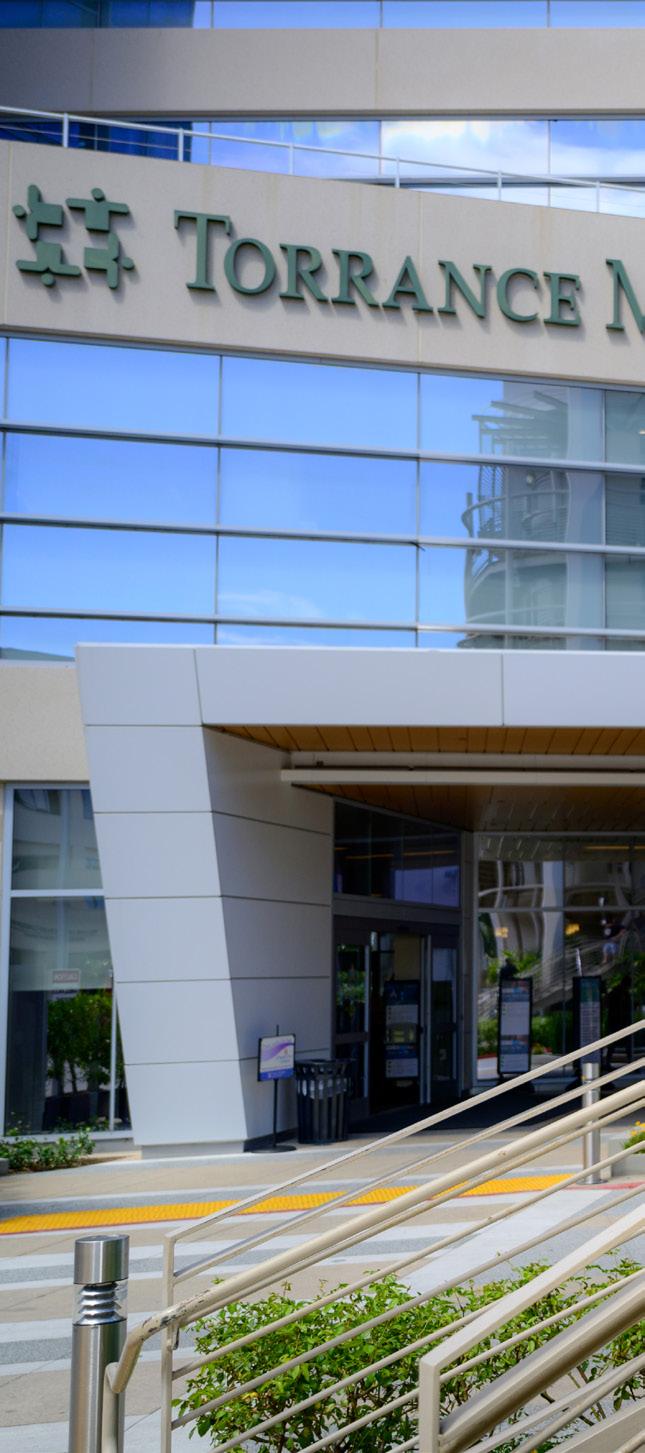
Leach hadn’t planned on spending a lifetime in health care administration—let alone at a single hospital. In hindsight, though, it’s clear he was tailor-made for the job.
His cool head, warm heart and steady hand steered Torrance Memorial—now the city’s largest employer, with almost 5,000 people on payroll— through transformative changes and hard times. The digital revolution in health care, the 2008 financial crisis, the advent of the Affordable Care Act and a once-in-a-century pandemic all happened on his watch. Remarkably, Leach leaves behind a record of enormous expansion and surging excellence.
The data points are eye-popping: a five-fold increase in staff; a 100% increase in hospital-owned land; two new patient towers on the main campus and several community-based ambulatory care centers sprinkled across the South Bay; $350 million in philanthropy; and a trailblazing partnership with Cedars-Sinai Medical Center that will help ensure Torrance Memorial will be around 100 years from now—still thriving and serving the South Bay’s evolving needs.
10 | Pulse Magazine Summer 2023 On Pace
As CEO of Torrance Memorial, Craig Leach has guided the hospital through the digital revolution in health care, the 2008 financial crisis, the advent of the Affordable Care Act, an historic affiliation with CedarsSinai and a once-in-a-century pandemic—all while continuing to grow the hospital's footprint and expertise.
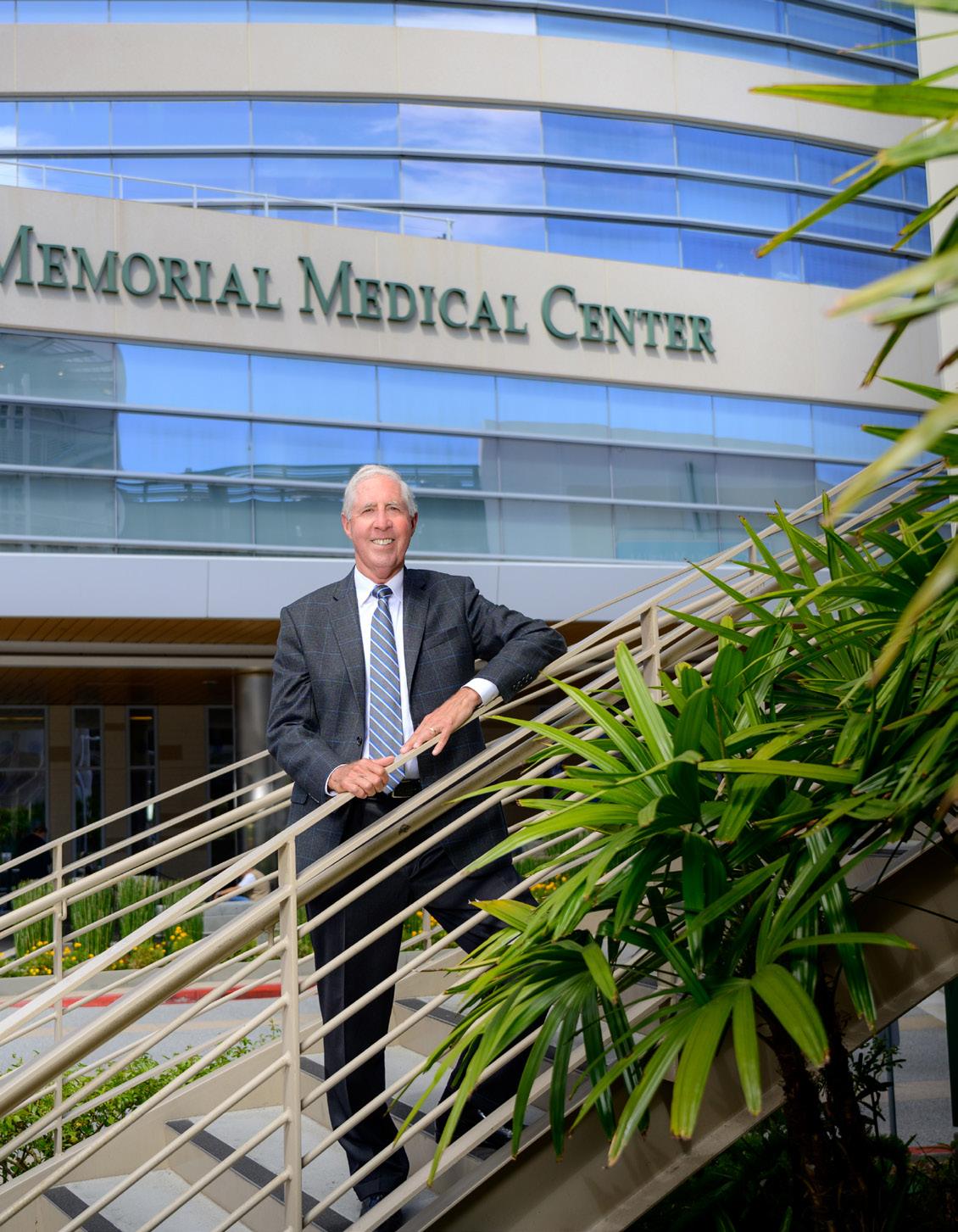
TorranceMemorial.org | 11
Exit Strategy
Leach officially retires on Halloween. (Asked what he’ll do the morning after, he says, “I’ll probably go for a swim after sleeping in late, then come home and have my toast and peanut butter with a glass of milk”—his breakfast routine since early childhood.
He’ll stay involved with Torrance Memorial, continuing to serve on the board of trustees, which should bring him on campus regularly. His newfound leisure time will be spent “goofing around and playing some golf” with high school friends, now all retired.
He wants to see more of his grandkids. There are now seven, with two more on the way—to be delivered at Torrance Memorial, of course.
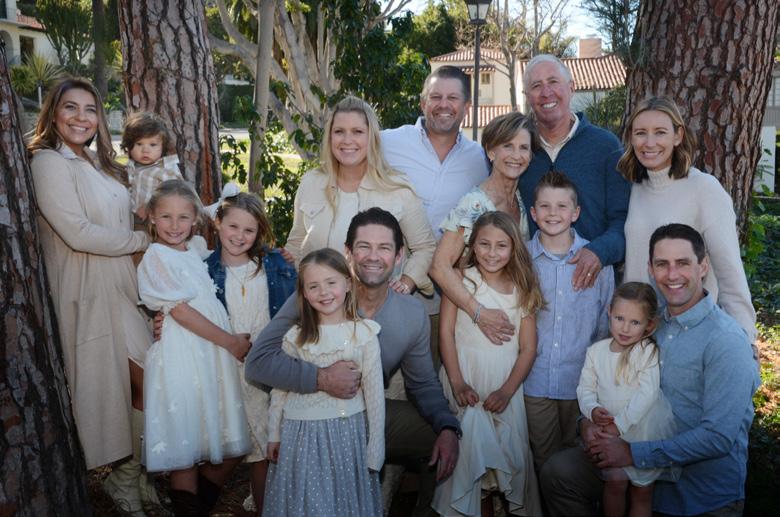
“I would love to pick them up at school or take them to the beach while they’re still young enough to like having me around,” says Leach, smiling. He wants time to travel with his wife, Judy, a retired nurse who worked for Torrance Memorial cardiology director Ben Rosin, MD, for many years.
Some may wonder how the hospital will go on without Leach, its rock-steady Gibraltar for nearly 40 years. Leach isn’t worried. He’s laid the groundwork, having groomed his senior leadership team including his handpicked successor, rising CEO Keith Hobbs.
His departing advice to Hobbs: “Build on Torrance Memorial’s culture of being compassionate, like family. Keep up the positive relationship with doctors, and stay engaged with your exceptional management team and staff. I know Keith can do that, and I think he’ll be very successful.”
Native Son
A native son of the South Bay, Leach grew up in the Hollywood Riviera, went to St. Lawrence Martyr through grade school, then Bishop Montgomery High School. His dad, Dave, was a Redondo Beach High School science teacher for 30 years. His mom, June, stayed home with their five kids.
When Leach joined Torrance Memorial in 1984, he was seven years out of college. A CPA with an accounting degree from Loyola Marymount University, he’d gone to work for Deloitte in Downtown L.A. By good fortune, he was asked to audit several hospital clients. Intrigued and wanting to dig deeper, he accepted a comptroller job with Centinela Hospital in Inglewood.
Three years later, he moved to Torrance Memorial as director of finance. And never left.
Mentored by his boss, Ray Rahn, Leach quickly learned the ropes. At the time, Torrance Memorial had roughly 1,000 employees. The campus was just three buildings. After skating on thin ice in the 1970s, the hospital’s books were balanced by the ’80s. They looked shaky again when the California legislature mandated costly seismic upgrades for hospitals following the 1994 Northridge earthquake.
The whole medical marketplace was reinventing itself. Private physicians—overwhelmed by computerized billing, insurance complexity and government regulations—were running for cover under big-tent health care systems and physician networks. Struggling small hospitals were being snapped up by large ones. The South Bay population was growing, and a new generation of patients wanted ambulato-
12 | Pulse Magazine Summer 2023 On Pace
The Leach family (front row, l to r): Mackenzie, Ashlyn, Emmy, Paul, Sophia, Ryder, Brynnlee, Daniel; (back row, l to r): Nina, Tyler, Taryn, David, Judy, Craig and Kristen.
PHOTO: DEIDRE DAVIDSON
ry services in their local communities.
Leach advocated for bold moves—land purchases, massive infrastructure investments, a new physician network—laying the foundation for Torrance Memorial’s present-day stability and excellence. He was promoted to senior vice president in 1996, then to chief operating officer in 2001. Everyone recognized how indispensable he was.
A Man of Contradictions
“He’s absolutely brilliant—and I mean brilliant!” says Laura Schenasi, now in her 22nd year as executive vice president of the Torrance Memorial Foundation. “He is also fair and thoughtful. He truly cares about you as a person.”
“Craig is a rare combination,” says Greg Geiger, chair of the hospital’s board of trustees. “He’s a big-picture, forward-looking, strategic thinker. At the same time, he’s detail-oriented, focused on financial performance and expense controls. And he has the highest character, the highest integrity.”
Other admirers point to a grab bag of seemingly incompatible traits. A master strategist with great communication skills. A visionary who is deeply humble. How many CEOs of large organizations get accused of being “trustworthy” and “sincere”?
“He’s got a heart of gold, but boy, does he know his numbers,” says Torrance YMCA president Steve McAller. Leach has served on the nonprofit’s board and finance committee for eight years. Many partnerships grew out of their friendship, notably a diabetes prevention and youth weight management program. When schools shut down during the pandemic, McAller and Leach cobbled together a hospital-based childcare program so Torrance Memorial essential staff could keep coming to work.
Back in 2006, when outgoing CEO George Graham tapped Leach as his successor, people who knew him well, like David Chan, MD, had worried Leach was “too genuinely nice” for the job. “The amazing thing is that Craig’s personality never changed,” says the respected oncologist, who worked alongside Leach in developing a first-class cancer program and was part of the team that negotiated the landmark Cedars-Sinai affiliation deal.
Leach is the kind of CEO who shuns executive parking privileges, preferring to walk from the farthest lot and chat with coworkers. He’s famous around Torrance Memorial for knowing everyone’s name—and their spouses’ and kids’ names too. He knows how far they commute to work, where they went on vacation and other odds-and-ends about their lives.
“When I first met Craig, our son was playing high
school basketball,” recalls Donna Duperron, president of the Torrance Chamber of Commerce and current member of Torrance Memorial’s board of trustees. Leach was on the business association’s board of directors from 2006 to 2012. “My son is now 35 years old,” says Duperron. “He’s married and has two kids. But every time I see Craig, he’ll ask about Luke.”
Duperron saw Leach a lot during the pandemic. Torrance Memorial was her go-to resource for the latest infectious disease advice and information, which she email-blasted to 5,000 South Bay businesses.
“It seemed like the rules were changing daily,” she recalls. “Some industries could work, others couldn’t. It would take L.A. County two or three days to get back to us with answers, but Craig was always there. I never asked a question he didn’t know the answer to.” The mayor of Torrance was also meeting every week with Leach during that time.
People Power
It isn’t just VIPs, however, who have his ear. Few CEOs welcome drop-in visitors, but Leach’s door is famously wide open to anyone who comes calling. He’ll stop what he’s doing and invite them in.
He also walks the corridors. Twice a week, often starting at 6 a.m., Leach makes his rounds building by building, floor by floor, checking in with hundreds of physicians, nurses, housekeepers and volunteers to ask if there’s anything they need.
From cafeteria workers to neurosurgeons to major donors, Leach is comfortable interacting with everyone in the Torrance Memorial community, says former senior vice president Sally Eberhard, who worked shoulder to shoulder with Leach from 1985 until her retirement in 2020.
His modest, warmhearted leadership style is deeply informed by a biblical quote. “To whom much is given, much will be required.” Leach is a committed Catholic, who still attends mass at St. Lawrence Martyr, the church he grew up in.
Though Leach poured his lifeblood into the hospital, kin always came first. “I never felt I was married to Torrance Memorial,” says Judy, his wife of 45 years. When their boys were growing up, Leach coached their baseball and soccer teams for many years.
“He never came home in a bad mood, never talked about work,” she says. “He was able to separate the two so beautifully. But his identity is wrapped up in Torrance Memorial. He has given his heart and soul to this place and the people who work there. I think it’s going to be hard for him to let go.” •
TorranceMemorial.org | 13
Open Enrollment is Coming
The more you understand about your needs ahead of time, the better prepared you will be when making decisions.
Written By John Ferrari
Every fall it’s important to review your Medicare coverage options. The Open Enrollment period runs from October 15 to December 7. During this time you can join, switch or drop a Medicare health plan or Medicare Advantage plan. You can change from Original Medicare (Parts A and B) to a Medicare Advantage plan (Part C), or switch from Medicare Advantage back to Original Medicare. You can also join, switch or drop Medicare drug coverage plans (Part D). Any changes you make take effect January 1, 2024.
There is a separate enrollment period just for Medicare Advantage, from January 1 through
March 31. During this period, you can switch between Advantage plans or end your Advantage coverage and return to Original Medicare. However, during this period you cannot switch from Original Medicare to a Medicare Advantage plan.

Additionally, some life changes trigger Special Enrollment Periods. Examples include when you lose your current coverage or become eligible for Medi-Cal, move to a new coverage area, or move into or out of a skilled nursing facility, long-term care hospital or similar facility.
If you are already enrolled in Medicare, you should receive the 2024 Medicare and You handbook
Open Enrollment is coming, and the more you understand about your needs ahead of time, the better prepared you will be to make important decisions about your Medicare benefits.
in late September or early October. It’s also available online at medicare.gov/medicare-and-you. Additionally, in late September you should receive a separate notice from your health plan detailing how your plans will change in the upcoming year. This is called the Annual Notice of Change.
Will this be a complicated exercise requiring hours of research? Not necessarily, says licensed health insurance agent Vince Kelly. “A lot can change in five years, but year to year? Not so much. You should go over your Medicare options every few years, or when your medical or financial circumstances change.”
Open Enrollment is a good
14 | Pulse Magazine Summer 2023 On Pace
time to consider switching from a Medicare supplement plan, or Medigap, to an HMO, especially as you age, Kelly says, because Medigap premiums increase each year. “At age 65,” he explains, “a really good supplement plan may cost $130 per month, but by the time you reach 75, that premium has risen to $250 each month.”
One way to help lower Medicare costs is to consider insurance companies offering a Medicare Part B premium reduction. “These are incentives companies offer to entice people to sign up with them,” Kelly says. “A Part B reduction gives consumers, say, a $125 monthly credit toward the $165 monthly cost of Part B. That reduction may be offset by
higher deductibles or fees on some items, but they’re often a good deal if the higher deductibles or fees apply only to medications you don’t need, or procedures you won’t have.”
And there are a few things you should check every year, like your Medicare insurance card. “You should ensure your insurance ID card has your name—with no misspellings— and lists both your primary care physician and correct medical group name, for example, Torrance Memorial IPA,” Kelly says. “Primary care physicians can move or retire. If that happens, listing your medical group on your insurance card will make it easier for you to continue receiving care from the same group.” •
For more information, go to medicare.gov, call the Torrance Memorial IPA Resource Center at 310-2577239, call licensed health insurance agent Vince Kelly at 310-625-1837, call Health Insurance Counseling and Advocacy expert Doris Herzog at 310-517-4666, or attend Torrance Memorial IPA’s Medicare Advantage Benefits Fair, TorranceMemorialipa.org/mabenefits.

Friday, October 20th 7:30 AM - 3:00 PM Carson Event Center 801 E. Carson Street, Carson, CA 90745
For more general, event or registration information, please call Human Services at (310) 835 - 0212 ext 1480.
Department
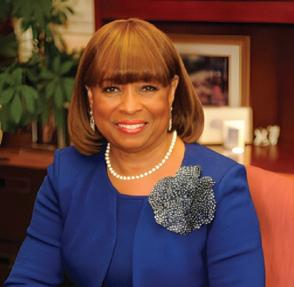
TorranceMemorial.org | 15
"A lot can change in five years, but year to year? Not so much. You should go over your Medicare options every few years, or when your medical or financial circumstances change.”
It’s All About Me Women’s Women’s Health Conference & BUSINESS EXPO CITY OF CARSON PRESENTED BY
City of Carson & the Carson Citizens Cultural Arts Foundation
For vendor information, please call (310)233-4850. DATE SAVE THE City of Carson Community Services/ Parks and Recreation
Healing from Within
Torrance Memorial transforms lives through a comprehensive eating disorders treatment program.
Written by Lisa Buffington
Since pediatric and adolescent medicine specialist Linda Schack, MD, began practicing in 1994, she has seen the number of patients with eating disorders steadily increase over the years—leading Torrance Memorial Medical Center to establish its unique Eating Disorders Medical Unit (EDMU) for patients ages 13 to 26 who are experiencing medical complications of a severe eating disorder.
“The program didn’t start so much as it evolved to meet the needs of a growing number of patients,” says
Dr. Schack, who specializes in treating teens and adolescents with eating disorders. “Through our program, we provide medical support to stabilize each patient so they can enter an outpatient or residential treatment program—including managing the refeeding process and offering psychological support.”
During the COVID-19 pandemic, Dr. Schack and her colleagues—including internist and adolescent medicine specialist Lindsey Brucker, MD, and Sarah Wohn, PsyD, who also specialize in treating eating disor-
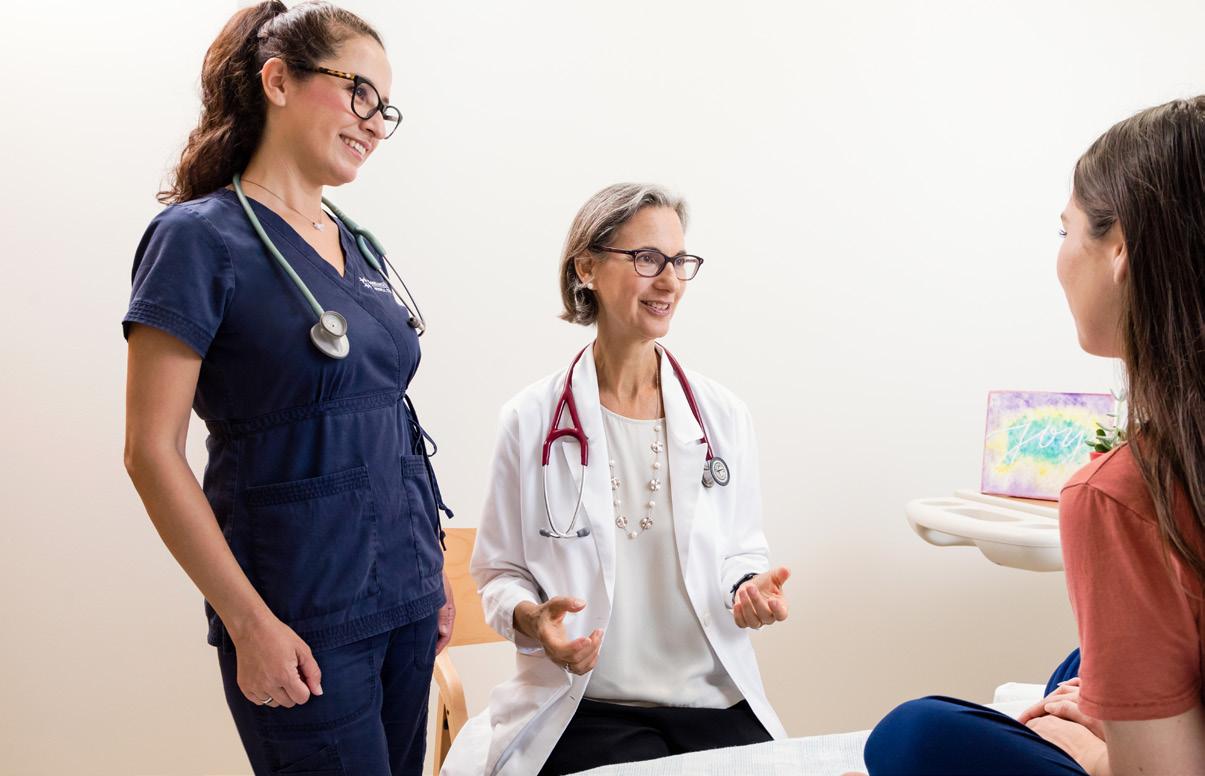
ders—saw a spike in eating disorders among young people.
“The term ‘eating disorders’ refers to any abnormal pattern of eating that can be detrimental to one’s health,” says Dr. Brucker. “Eating disorders are complicated because they can have many causes. Anxiety, depression, trauma, societal expectations and distorted body image, which can be fueled by social media, can all factor into the development of an eating disorder. The pandemic exacerbated many of these factors among young people.”
Comprehensive Help for Young People
Torrance Memorial’s EDMU provides the highest level of care for teens and young adults up to age 26 who are experiencing medical complications of an eating disorder, such as electrolyte imbalances, slow heart rate, unstable vital signs or gastrointestinal issues.
16 | Pulse Magazine Summer 2023 On Pace
“Eating disorders can be fatal if left untreated, and we take a comprehensive approach to caring for very sick patients using evidence-based protocols,” says Dr. Brucker. “In addition to our adolescent medicine and pediatric gastrointestinal specialists, our team includes a dietitian, psychiatrist, psychologists and nurses who are all specially trained in refeeding and caring for young people with eating disorders.”
Dr. Schack says the EDMU is the only program of its kind in the South Bay—and one of only a few similar programs in California and the U.S. “There really aren’t a lot of programs like ours in the country with fellowship-trained adolescent medicine specialists and pediatric GI specialists who are involved in every patient’s treatment.”
She notes Torrance Memorial has treated out-of-state and international patients. “And because we are treating teens and young adults, we work closely with the family and incorporate a child life specialist into our program to engage patients in art projects, activities and crafts.”
Spotting an Eating Disorder
According to Dr. Brucker, most eating disorders don’t develop overnight and can’t be attributed to only one cause. In fact, eating disorders often begin gradually, with teens developing habits such as skipping breakfast or lunch at school, adopting an entirely new diet or avoiding certain food groups altogether.
“Although these habits might initially seem harmless, they can sometimes get out of control—especially when combined with other challenges, such as the pandemic, mental health concerns, social considerations or other types of trauma,” says Dr. Brucker.
“Early in the pandemic, we saw a lot of elite athletes who were no longer training and were struggling to balance lower activity levels with their food intake,” says Dr. Schack.
“When kids started to return to school after the pandemic, we saw a lot of patients get sick or relapse due to social anxiety.”
• Use of laxatives, diet pills, teas or other products marketed for weight loss or energy
• Use of amphetamines, cocaine or other appetite suppressing stimulants
• Preoccupation with preparing food without eating the food
• Large quantities of food missing from the house without explanation
• Disappearance into the bathroom directly after eating
• Compulsive exercise
Parents can promote healthy behaviors for their teens by modeling a positive body image and relationship with food. Keeping the lines of communication open with teens and young adults can also encourage healthy, nonjudgmental discussions about body image, healthy eating, mental health and social media use.
In addition to skipping meals and changes in dietary habits, other signs of eating disorders to watch for include:
• Rapid or profound weight loss
• Preoccupation with body appearance
• Frequent stomachaches, reflux or heartburn
• Absence of menstrual periods
• Eating alone, or declining to eat in front of others or at family meals
• Strict elimination of food categories from the diet, such as “junk food,” sugar/sweets, carbohydrates, gluten or red meat
If parents notice any worrisome behaviors in their teens or young adults, scheduling an appointment with their primary care provider is a good place to start. However, Dr. Schack, Dr. Brucker and the rest of the team understand seeking treatment for an eating disorder may seem daunting— and they want patients and families to know they aren’t alone.
“It can take a while for some patients to want to recover because an eating disorder can become part of their identity and they worry about what will happen if they let it go,” says Dr. Brucker. “Eating disorders can affect anyone, and they are treatable. We can help patients and families get to the root of what’s going on.” •
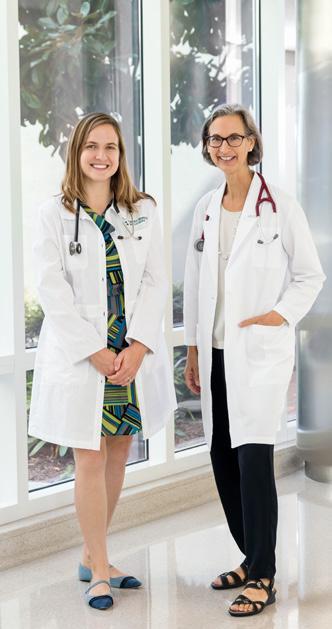 The Torrance Memorial Eating Disorders Unit is located in Torrance at 3330 Lomita Blvd 3rd Floor, Hunt Tower. They can be reached at 310-325-4353.
The Torrance Memorial Eating Disorders Unit is located in Torrance at 3330 Lomita Blvd 3rd Floor, Hunt Tower. They can be reached at 310-325-4353.
TorranceMemorial.org | 17
Lindsey Brucker, MD, and Linda Schack, MD
Delivering More Than Exceptional Care
Labor and delivery—and maternal mother care— built around you
 Written by Laura Roe Stevens
Written by Laura Roe Stevens
There has never been a better time to have a baby at Torrance Memorial Medical Center. The hospital is recognized for its state-of-the-art technology, highly trained physicians and dedicated nursing staff.

And Torrance Memorial has expanded to offer more choices in personalized care—both in labor and delivery services and maternal mother care. Torrance Memorial Physician Network’s OB-GYN program recently added six new OB-GYN physicians to work within its five locations. Expecting moms can rest easy knowing all physicians in the network are commit-
ted to honoring patients’ needs and collaborate closely with nurses, doulas and other physicians to personalize every delivery, recovery care plan and Neonatal Intensive Care (NICU) care.
“Our nurses will cater to your choices. I go over birth preferences in the office, so it’s clear how a patient wants pain management or whether she wants a doula in the room,” explains Meher Raza, DO, a Torrance Memorial OB-GYN. “Our labor and delivery nurses act as advocates and share various aspects pertaining to delivery preferences, and I will honor them as long as I deem them as safe.”
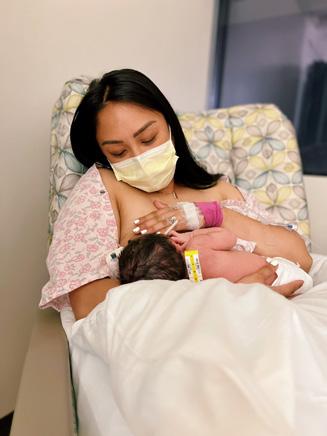
18 | Pulse Magazine Summer 2023 On Pace
Nikole Alexis Lina, RN, a Torrance Memorial labor and delivery nurse, gave birth to her son Noah in 2022 and learned firsthand the benefits of a Level III maternal care-verified hospital when complications arose with her delivery. Below, big sister Gianna welcomes Noah.
Mom & Baby’s Safety
“You will never be without a physician when delivering at Torrance Memorial,” says Dr. Meher Raza. “If you need an emergency C-section, it will never be delayed. We prioritize safe deliveries. There is always a laborist, anesthesiologist and neonatologist in the hospital at all times.”
Not only are physicians always at the hospital, all Torrance Memorial OB-GYNs excel at caring for complications that may arise. In January, the Joint Commission’s Maternal Levels of Care verification program (in collaboration with the American College of Obstetricians and Gynecologists) named Torrance Memorial a Level III maternal care verified facility for its expertise in caring for complex maternal medical conditions, obstetric complications and fetal conditions.
This eased the mind of Nikole Alexis Lina, RN, a Torrance Memorial labor and delivery nurse, who gave birth to her son Noah in September 2022. Lina was surprised by how nurses went “the extra mile” to calm her during stressful moments.
“At one point, the baby’s heartbeat was going down since the umbilical cord had wrapped around my son three times. A nurse saw my mom sitting anxiously and praying [in the room] and asked: “If it’s OK, can I pray with you?” says Lina. “This was so nice for my mom and me, and it brought peace within the whole room and helped me relax.”
Lina’s labor and delivery was fast— only three hours—but came with complications, including an infection of the placenta and amniotic fluid. Chorioamnionitis can happen if a woman is dilated before labor starts, as pressure can break the amniotic sac, making the placenta vulnerable to infection.
Since Lina had been 7 cm dilated upon arrival at 39 weeks into her pregnancy, this infection was deemed
a possibility. Her team—nurses, an anesthesiologist and a physician— sprang into action.
Given the urgency, Lina was pleasantly surprised by how the nurses calmly consulted with her in every decision, trying to honor her needs. “I had an amazing nurse tell me: ‘Hey, this is happening right now. This is the plan. How do you feel? Are you good with that?’ I loved that approach,” Lina adds. “Instead of telling me what had to be done, she explained with me, not to me. This collaboration helped me not panic or stress, which can complicate labor.”
Talented Physicians
Lina learned this firsthand. If a complication arises during labor or delivery, a patient can feel vulnerable, anxious and helpless. Having a capable and experienced physician can make all the difference in delivery outcomes and for mom’s recovery.
“I was having some bleeding issues, and Dr. Elledge worked quickly to get it controlled with medication so I didn’t need any other intervention,” explains Lina of her physician Kay Elledge, MD.
This approach aided her recovery, which was helpful because baby Noah went straight to the NICU for monitoring and antibiotics. For a week, Lina spent her days and nights there, which would not have been possible if she, too, needed to recuperate. While the birth didn’t go as she envisioned, Lina says she wouldn’t change a thing. In the end, she and her baby are healthy—and that’s the miracle.
Her words of advice to expecting moms? “Whatever your birth plan is, keep an open mind and be flexible. Nurses will strive to honor it, and physicians will keep you and your baby safe. Just remember, this magical moment will never happen again.”
•
TORRANCE MEMORIAL OFFERS MORE FOR YOU & BABY:
• Pregnancy Care: Personalized, obstetrical care focused on the unique needs at every stage of life
• Prenatal & Parenting Classes: Dedicated maternity team providing vital support and resources
• Labor & Delivery: Private L&D rooms for your family’s birthing experience
• Mother Baby Postpartum: 28 private rooms featuring lactation support and nursing couplet care to limit interruptions and exposure
• Neonatal Intensive Care Unit (NICU): Comprehensive Level III NICU delivering the highest level of care for the tiniest patients
• Breastfeeding Support: A safe place for new moms needing resources, support and education around breastfeeding and newborn nutrition
• Pediatrics: Offering a full range of medical services for pediatric to young adult patients
CHERISHED FUTURES
Torrance Memorial is proud to participate in Cherished Futures—a joint initiative to reduce Black maternal and infant health inequities and improve the Black patient experience in Los Angeles County. “One of our great accomplishments is the relationship we have been able to form with African American Infant and Maternal Mortality doulas in the community to improve our relations with the doula community. We believe this is sustainable and will lead to a decrease in mistrust for our Black families and increase positive mother and baby outcomes,” says Natalie Thorpe, RNC-OB, MSN, CLW, Torrance Memorial’s clinical nursing director for Maternal Child Health Services. To learn more visit cherishedfutures.org.
TorranceMemorial.org | 19
Torrance Memorial Team Delivers Game-Changing Care for Sportscaster Colin Cowherd
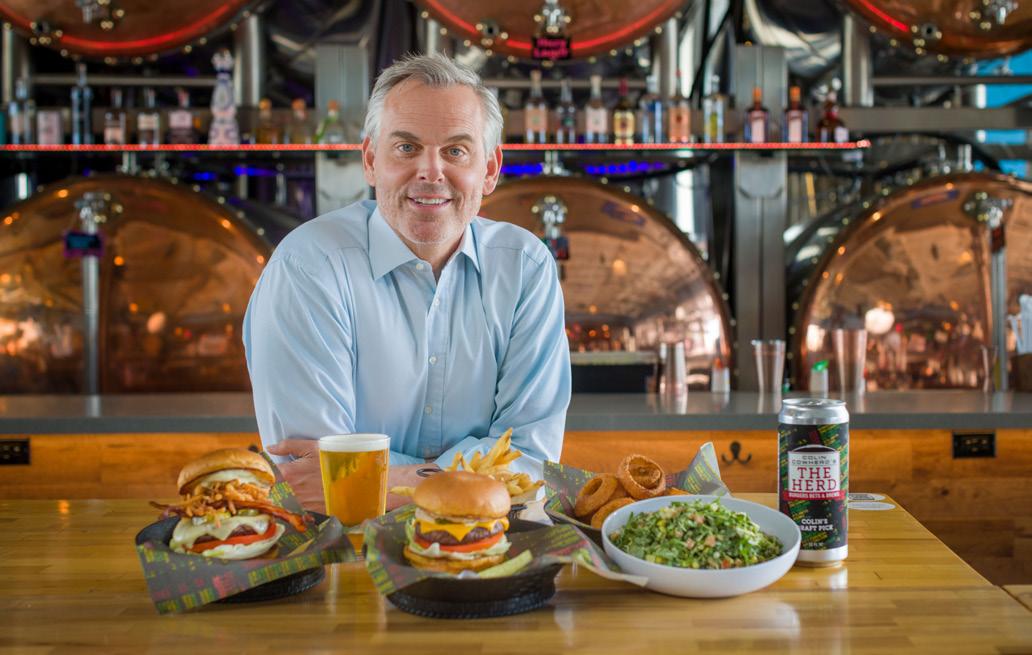 Written by Lisa Buffington
Written by Lisa Buffington
As host of The Herd, a national sports talk program on Fox Sports, Colin Cowherd interviews some of the biggest-name athletes in professional sports. His experience interviewing guests, watching games and working with his colleagues to produce the show has shown him the importance of teamwork.
But when Cowherd had a medical emergency on February 6, 2021—the night before the Super Bowl—he experienced the benefits
of teamwork in an entirely new way. Torrance Memorial Medical Center experts worked together to deliver the lifesaving care he needed that evening.
“My wife and I were at a restaurant, and I suddenly felt this sharp pain under my right pectoral muscle,” says Cowherd. “It felt like someone stuck a knife in me.”
He called his friend Mike Zislis, founder and owner of the Zislis Group, who is on the Torrance Memorial Medical Center Foundation board of directors. “Mike
showed up in his car within five minutes, and after running a few red lights, we got to Torrance Memorial 15 minutes later.”
A Team Approach to Care
When Cowherd arrived at the Torrance Memorial emergency department, his care team began treating his pain and running tests to find its source. “I thought I had COVID, but those tests came back negative,” says Cowherd. “After taking some X-rays, my doctors found a couple small blood clots
20 | Pulse Magazine Summer 2023 On Pace
“My wife and I were at a restaurant, and I suddenly felt this sharp pain under my right pectoral muscle,” says Cowherd. “It felt like someone stuck a knife in me.”
in my right lung.”
A blood clot in the lung, also known as a pulmonary embolism, is a potentially life-threatening condition that requires emergency treatment. After confirming the diagnosis, Torrance Memorial’s Pulmonary Embolism Response Team (PERT) jumped into action— giving Cowherd an injectable medication to treat the clot. Because Cowherd’s clots were small, he didn’t need surgical treatment to remove them.
“The medication Colin received helped activate his body’s natural clot-dissolving mechanisms so it could gradually break down the clot over the next several weeks,” says Valente Ramos, MD, the Torrance Memorial hospitalist and internal medicine specialist who coordinated Cowherd’s inpatient care. “Colin spent two nights in the hospital for observation, and we referred him to a pulmonologist, a hematologist and an infectious disease specialist to try to find the cause of the blood clot.”
Trusting Torrance Memorial for Life’s “Medical Moments”







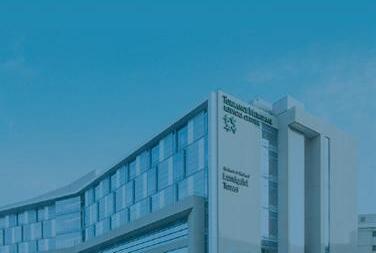
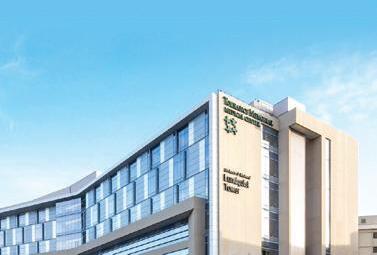
Thirty-six hours later, Cowherd was discharged from the hospital. Although he watched the Super Bowl from his hospital room, he was disappointed he couldn’t do his usual post-game broadcast for his fans. Fortunately, he was able to get back on the air two days later and returned to his normal exercise routine within a few weeks.
After numerous blood tests and several follow-up visits, Cowherd’s health care team determined he didn’t have any serious medical issues that would increase his risk of future blood clots. He hasn’t had any problems or symptoms since and is grateful for the successful treatment and aftercare he received.
“Having access to this level of care and expertise in the South Bay is critical to the health of our community,” says Eric Nakkim, MD, Torrance Memorial emergency medicine physician. “Our Pulmonary Embolism Response Team reviews each pulmonary embolism case and helps develop an evidence-based treatment plan based on each patient’s unique symptoms. As a result, our patients receive the care they need more quickly, which leads to better outcomes.”
Although Cowherd is healthy and describes himself as someone who “goes to the doctor reluctantly,” he trusts Torrance Memorial for all of life’s “medical moments”— from stitches to bloodwork to routine screenings.
“I do my best to stay fit and active and try to be self-reliant when it comes to my health. But when I needed help, many people at Torrance Memorial were there for me,” says Cowherd. “No one goes to the doctor or hospital without having some anxiety. When I was in a scary situation, I was really impressed by the quality of the doctors, their bedside manner and how much they cared.” •
Skypark Dr , Suite 100 Torrance 310-784-6300
TorranceMemorial.org | 21 Need to See a Doctor? O f f i c e s l o c a t e d i n : To rr a n c e , C a rs o n , M a n h a t t a n B e a c h , H e r m o s a B e a c h , P a l o s Ve rd e s a n d E l S e g u n d o A ppointments scheduled M - F , 8 a.m. to 5 p.m. C a l l O u r P h y s i c i a n Re fe rra l C o o rd i n a t o r t o S c h e d u l e A n A p p o i n t m e n t 3 1 0 - 8 9 1 - 6 7 1 7 TMPhysicianNetwork.org Catherine Lawson, MD Internal Medicine
Lomita Blvd , Suite 135
MD
Medicine
2841
Torrance 310-784-6954 Alya Torna,
Family
29409 S Western Ave Rancho Palos Verdes 310-891-6684
Medicine
Mona Madani, MD Family Medicine 2110 E El Segundo Bl , Suite 200 El Segundo 310-517-7030 Yusha Siddiqui, MD Internal
602 Deep Valley Dr., Suite 300 Rolling Hills Estates 310-517-4692 Sara Kanamori, DO Internal Medicine 3400 Lomita Blvd , Suite 104 Torrance 310-784-8000 Cho Rok Kim, MD Internal Medicine 3333
A Family Story
A day in the emergency department forever links the Pryor family and Torrance Memorial.
Written by Melissa Bean Sterzick
Every family has its folklore. It is the stories they share when they are together—remembering and retelling their most dramatic moments. These stories are what make a family a family: the day mom and dad met, the day you were born, the day we lost each other at the zoo, the day you broke your arm.
The Pryor family has a story about the day in 2016 when Dan Pryor survived an almost unsurvivable heart attack in Torrance Memorial’s emergency department (ED). It includes his daughter’s awareness and his wife’s responsiveness, which meant Dan was in the best place possible at the exact moment needed to save his life.
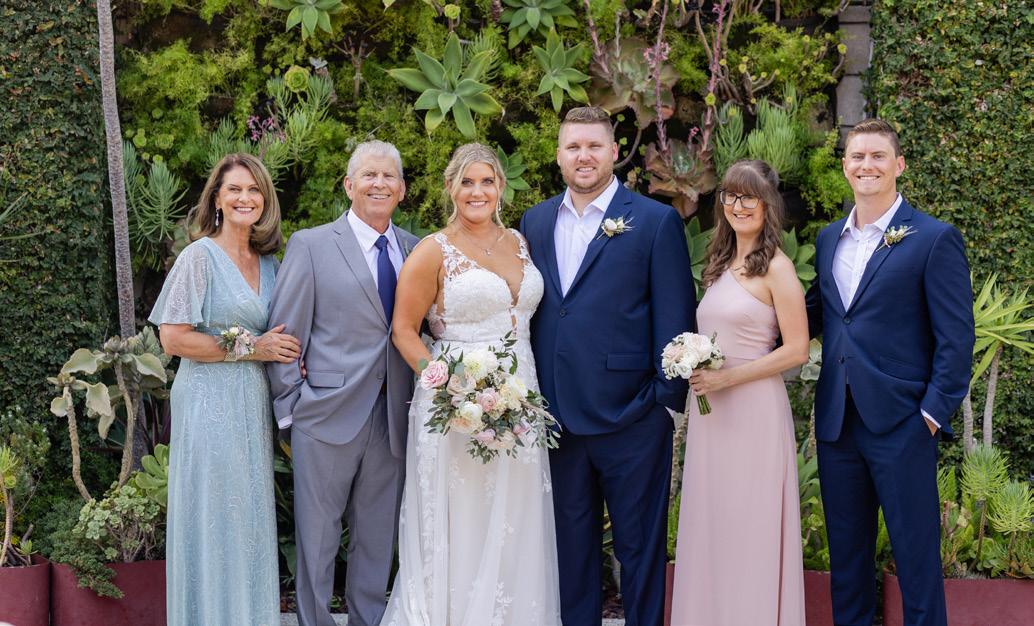
Karen Pryor and Emily Pryor Hardesty remember it as a day of a handful of conversations and decisions that meant the difference between life and
death. Dan remembers a quick drive to the ED and an even faster transfer to the cardiac catheterization laboratory. He didn’t feel too bad, but doctors told him, “You’re having a heart attack right now!” They all say he is lucky to be alive.
Dan had been sick for a couple of weeks with bronchitis and walking pneumonia. He felt pain in his upper body but attributed it to soreness from coughing. Karen was out running errands and stopped by Emily’s workplace. After talking, Emily felt concerned for her dad and called him to ask about his symptoms.
"I knew the different signs of a heart attack, and because he hadn't been feeling well and was a smoker, I was certain he was having a heart attack," she says. She hung up and told Karen to go home and immediately take Dan to Torrance Memorial.
22 | Pulse Magazine Summer 2023 On Pace
Dan Pryor proudly walked daughter Emily down the aisle at her wedding last fall.
“I dropped him off at the ED and parked my car, and by the time I came in, they had already taken him back. I hadn’t even been sitting for 30 seconds,” Karen says.
Torrance Memorial is a STEMI Receiving Center, designated by Los Angeles County as a facility prepared to accept patients who are having a heart attack and quickly treat them with primary angioplasty. Victoria Shin, MD, a Torrance Memorial Physician Network interventional cardiologist, treated Dan in the ED and is still his heart specialist today. She says in Dan’s case, the ED physician made the initial assessment and activated the STEMI team and protocol.
“Timing is crucial. We have a saying, ‘Time is myocardium,’ so every minute an artery is blocked, the more likely that heart muscle will die—resulting in worse outcomes for the patient,” Dr. Shin says. “We take pride in the fact most of our patients who present with a heart attack are brought to the cardiac cath lab, and their artery is opened in under 60 minutes, which is the ideal goal.”
Today Emily is a registered nurse at Torrance Memorial. Dan’s heart attack inspired her to return to school and earn her second degree: a Bachelor of Science in nursing. Her education and experience have confirmed Dan’s amazing outcome. “I’ve seen the EKG. It was bad,” Emily says. “He had a massive heart attack.”
Dan had a 100% blockage of the left anterior descending artery—a type of heart attack known as a “widow-maker.” Rapid treatment made all the difference. “That’s what saved him. We have state-of-theart technology, run the latest labs and have amazing physicians, nurses and technicians. Everyone who works here wants the best outcomes for the patients,” Emily says. “We are spoiled to have Torrance Memorial so close by.”
Karen has since joined the Professional Advisory Council for the Torrance Memorial Foundation and is participating in fundraising to expand the emergency department. “It was a happy accident I got involved with the hospital,” she says. “I wanted to be able to give back, though there’s no way we can repay what was done for our family.”
During his recovery, Dan lost 25 pounds, quit smoking and moved to a less stressful position at work. Now 65, he continues taking his meds, eating a balanced diet and walking daily.
Dan’s remarkable treatment and survival saved him for better things. He plays golf regularly with his two older brothers and his 94-year-old father. He enjoys playing cards, making jigsaw puzzles and watching sports with his adult kids. He happily walked Emily down the aisle at her wedding last fall.
Dan is grateful his wife and daughter got him to Torrance Memorial that day. "I know it was hard on them and the rest of the family, but I came through and changed many things. I'm very happy to still be here, that's for sure." •
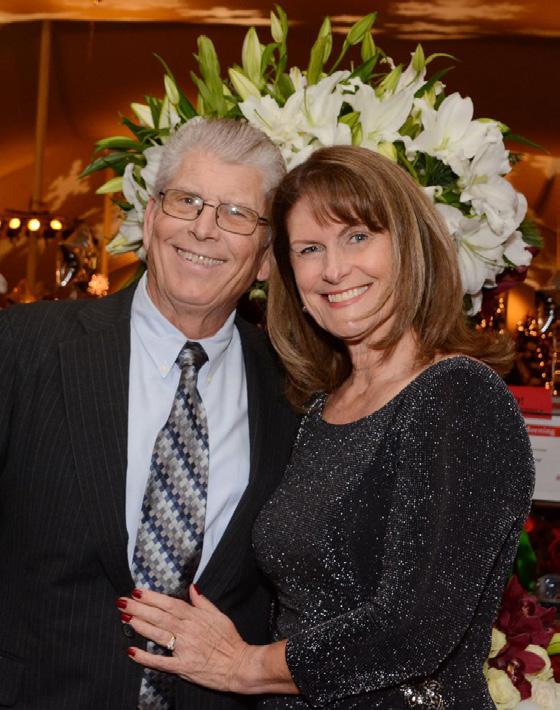
“That’s what saved him. We have state-of-the-art technology, run the latest labs and have amazing physicians, nurses and technicians. Everyone who works here wants the best outcomes for the patients.”
TorranceMemorial.org | 23
Dan and Karen Pryor are grateful to Torrance Memorial for the lifesaving care he received when he suffered a heart attack.
The AI Evolution in Hospital Health Care
Using AI to increase efficiency and decrease time to diagnose serious conditions.
Written by John Ferrari
Every day, Torrance Memorial physicians make diagnoses, recommend treatments and perform procedures. As the volume of medical data available to physicians increases, doctors are adopting a new set of tools to aid in managing and analyzing information. These automated tools—artificial intelligence (AI) systems—are helping physicians provide care more quickly and efficiently, leading to improved outcomes—that is, healthier patients.
Data drives much of modern medicine. Sorting and analyzing data are the back-end functions necessary to make diagnoses and treat patients, and they’re perfectly suited for
AI. “We’re a front-runner in using AI in California and the nation,” says Torrance Memorial interventional radiologist George So, MD. AI is used in almost every department, from emergency medicine to family practice, but nowhere more than in radiology.

Providing and interpreting medical imagery—from X-rays and ultrasounds to MRIs— radiology supports departments throughout the hospital. Its practices are a prime example of AI integration.
“For radiologists,” explains Dr. So, “everything consists of data. Pixels make up the images we use, and those can be processed by AI.”
24 | Pulse Magazine Summer 2023
With its ability to analzye vast amounts of medical data, AI has empowered health care professionals to make more accurate diagnoses and more personalized treatment plans and to pinpoint potential health risks. As AI continues to expand, there is promise for improved patient outcomes and more efficient systems across the health care industry.

By scanning databases of previously analyzed medical imagery, AI radiology programs learn to improve images and recognize potential trouble signs they reveal, making images easier for radiologists to read and interpret.
“For example, with AI assisting an MRI scan, we can speed up the scan and obtain high-resolution images,” Dr. So says. “AI can increase the resolution of the scan, making it sharper, or maximize the speed of the scan, or a combination of both.”
With CT scans, essentially a series of X-rays, AI’s ability to improve images means patients’ exposure to radiation can be reduced. Specialized AI programs also learn what tumors, blood clots, fractures and other features look like and can highlight suspicious features for radiologists.
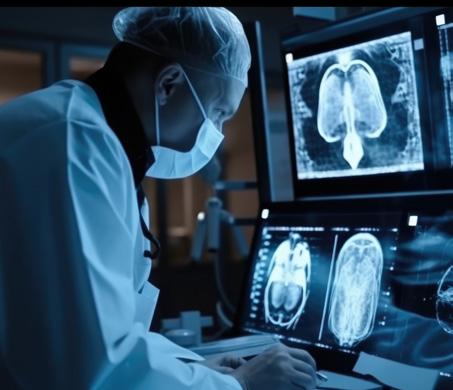
“We’re trained to look for these pathologies,” explains Torrance Memorial interventional radiologist Jonathan Park, MD. “Having AI accurately detect pathologies adds a level of confidence. AI can take on some of the busywork involved in processing the data, and it alerts radiologists to positive findings so we can prioritize that.”
“AI can make lesions stand out more, and that makes the radiologist more efficient in terms of interpreting a scan that can contain thousands of images,” adds Dr. So. “We use AI as a backseat driver. It screens images to prioritize them. That’s very important, especially in emergency cases. We use AI for emergency screening of patients suffering from a stroke or pulmonary embolism. If the AI detects a major occlusion of the brain, the stroke team will be alerted via cell phone alerts. Even before the patient gets off the CT scanner table, the team is alerted to start preparing. Having that rapid AI combined with a stroke team and the workflow to get them in place and ready can save hours. AI is only a small part of that, but it’s an important part.”
The use of AI in emergency medicine doesn’t end with radiology. “In the ED, an AI system starts monitoring for sepsis symptoms as soon as a patient arrives and has vitals taken,” says Torrance Memorial’s ED co-medical director and executive director of medical informatics, Gina Sulmeyer, MD. Across the hospital’s departments, AI works in the background, aiding physicians in piecing together medical information.
“Anytime I order or prescribe a medication, an AI system scans the patient’s records for allergies, any other medications that might interact with the new medication and duplicate prescriptions,” Dr. Sulmeyer says.
Then there’s the ubiquitous task of recording patient information. Torrance Memorial uses an AI program to transcribe physician notes into the patient records system. That’s a game changer, Dr. Sulmeyer says. It allows physicians to both input and review patient data in real time. AI can also highlight potential medical problems, for example by linking changes in a patient’s health with a family history of stomach cancer.
Dr. Sulmeyer notes that most cancers are asymptomatic early in their development. In the past, that led to late-stage diagnoses, but AI is helping radiologists and oncologists spot potential tumors that would’ve gone undetected previously. “They’re called incidental findings— somebody comes in for one thing, and the system notices something else as well,” she says.
For example, a patient undergoes an MRI or CT scan for a heart issue. AI detects a faint shadow in the lung and flags it as a feature that needs to be investigated. Or an AI review of lab work reveals bone abnormalities indicative of a potential autoimmune disease.
Still, adopting AI technology doesn’t change what physicians do, Dr. Park notes. “It’s like being a pilot in a cockpit. Advanced aids have automated a lot of the busywork, but the pilot is still flying. In a hospital setting, AI is not making decisions. It’s just one of the tools we have at our disposal. It’s been an amazing addition to our practice." •
Saving Lives From Lung Cancer
New Ion technology lets surgeons diagnose lung cancer earlier, enabling timely treatment and quick recovery.
 Written by John Ferrari
Written by John Ferrari
26 | Pulse Magazine Summer 2023
Imagine going to the hospital for a routine heart CT scan and being told you have lung cancer. Now imagine you’re also told it can be surgically removed with no need for follow-up chemotherapy. It’s a whiplash bad news/good news situation, says Greg Wong, who underwent surgery to remove lung cancer in April.
“Everything happened really fast,” he recalls. “I went from not knowing there was anything wrong to ‘We have to do a biopsy’ to confirming stage 1 lung cancer. Then I went from ‘I have cancer, I could die,’ to ‘I’m cancer-free.’ All in 60 days.”
Wong’s success story was made possible by a team of Torrance Memorial Medical Center physicians, aided by some remarkable technology. The first is an AI program that processes CT scans
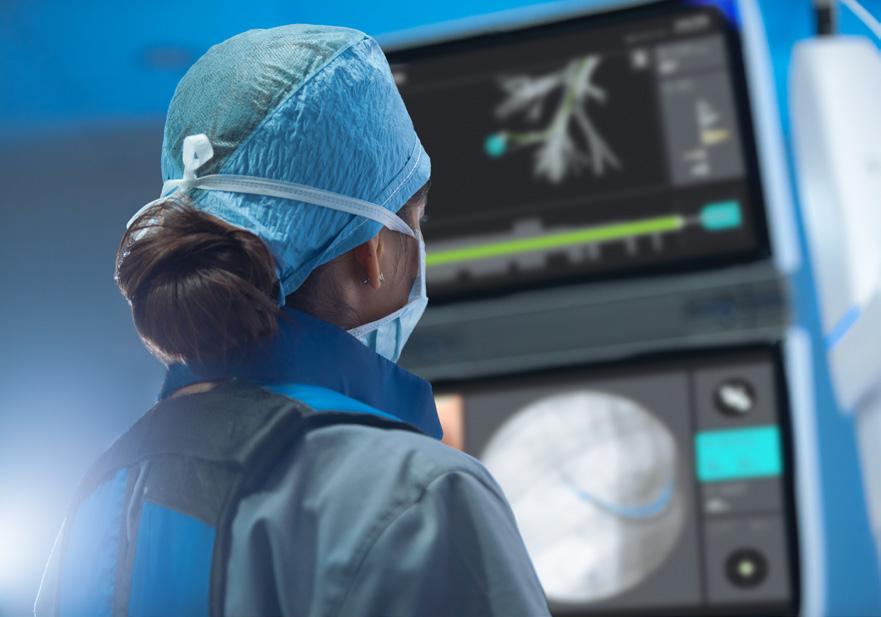
and other medical imagery, highlighting suspicious features for radiologists to examine. The program automatically scanned an image of Wong’s chest taken as a routine precautionary measure to check for cholesterol buildup in his arteries (high cholesterol and hypertension run in his family).
Although the scan wasn’t intended to check for lung cancer, the AI program processed the entire image of his chest. In what’s called an incidental finding, it highlighted a shadow in his left lung above his heart. Wong’s primary care physician, Anthony Chen, MD, ordered a second scan, which confirmed a small lesion.
The second is the Ion bronchoscopy platform, a robotic-assisted system for minimally invasive biopsies. “It’s essentially a navigation tool,” explains
TorranceMemorial.org | 27
Many patients require mulitiple biopsies prior to a lung cancer diagnosis. Ion technology offers patients a less invasive, more efficient path to diagnosis and best outcomes.
“I went from not knowing there was anything wrong to ‘We have to do a biopsy’ to confirming stage 1 lung cancer. Then I went from ‘I have cancer, I could die,’ to ‘I’m cancer-free.’ All in 60 days.”
Khalid Eltawil, MD, a Torrance Memorial Physician Network board-certified physician specializing in internal medicine and pulmonary disease. “For a lesion like that, which was small in size and located at the edge of the lung, in the past we would have ordered a PET scan. But the smaller the spot, the less accurate a PET scan is. So when we’d see such a spot on a PET scan, we’d often elect to just watch it. The problem is, that gives the potential tumor a chance to grow and spread.”
The Ion system changes that dynamic—giving surgeons the ability to operate with unparalleled precision, navigating through tiny airways in the lungs to take biopsies of even the smallest lesions. First, Ion uses a CT scan to create a 3D map of the patient’s airways.
Then, during the procedure, “we are able to navigate using a virtual image,” Dr. Eltawil says. “The robotic arm has a camera, and the system can match the live view with the virtual view populated from the scan. There are two screens side by side: the map and the live view. We use it just like you would a navigation system.”
Being able to diagnose lung cancer at an early stage saves lives. “The earlier the stage, the better the outcome,” says Dr. Eltawil, who performed the biopsy. “Stage 1 cancers can essentially be cured. Early intervention also decreases the amount of lung that needs to be removed.”
“The Ion is a game changer,” agrees Clark Fuller, MD, director of thoracic surgery at Torrance Memorial, who removed the lesion. “It’s what we’ve been looking for in the arena of lung cancer for a long time. It changes the whole management paradigm—early detection, facilitating an early diagnostic procedure, resulting in earlier, definitive treatment—that’s what happened in Greg Wong’s case. The biopsy confirmed cancer,
The Ion system features an ultra-thin catheter for precise navigation far into the peripheral lung, as compared to manual techniques.

which would have been very difficult to do with a traditional biopsy. Because the surgery was performed at an early stage, it was a less-involved procedure. We were able to use a minimally invasive approach and remove less than a full lobe of his lung. That means a quicker and more complete recovery.”
Torrance Memorial is the only medical center in the South Bay to have adopted the Ion technology, says senior vice president and chief operating officer Derek Berz. Bringing in advanced technology like the Ion biopsy platform “is about providing great care so patients don’t have to leave the South Bay. Patients, both locally and from further away, come to Torrance Memorial to access treatment from these new technologies and to benefit from the experience and expertise of our physicians and clinical teams. If I’m a patient and I’m looking for a surgeon or a physician, I want to be sure they know what they’re doing. At Torrance Memorial, we’ve been keeping up with new technologies, and a lot of other hospitals simply don’t have the resources to do that.”
The bottom line, says Dr. Eltawil, is by using Ion to collect biopsies, “we can save patients unnecessary surgery. We’re able to diagnose cancers really early, before they become advanced. Lung cancer is the third most common cancer and has the highest mortality rate. With Ion we can diagnose lung cancer much earlier, before it spreads, and keep patients healthy.”
To ensure his recovery is on track, Wong has seen everyone on the team who treated him since his surgery, including his primary care physician, oncologist, pulmonologist and cardiologist. “I’m very pleased with how everything went at Torrance Memorial,” Wong says. “For me, it was a one-time procedure and you’re done.” •
28 | Pulse Magazine Summer 2023
The Dangers Of Fentanyl
Written By Moe Gelbart, PhD, Director, Behavioral Health Torrance Memorial
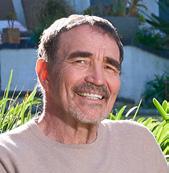
Ihope this column shocks you, because it should. There is a fentanyl crisis in this country, and the numbers are staggering. Fentanyl poisoning is responsible for nearly 100,000 deaths per year in the United States and is the leading cause of death among 18- to 45-year-olds. To put this in perspective, it is the equivalent of a major airliner crashing every day of the year.
We need a major paradigm shift in how we think and talk about drug use, especially among our youth and young adults. First, notice I said fentanyl poisoning and not fentanyl overdose. Most drugs—like opioids, heroin and benzodiazepines—are sought after by users. When users ingest more than expected or the dosage and strength is more than usual, their negative reaction—including death—can be considered an overdose.
Fentanyl is rarely sought out on its own. Instead, drug dealers looking to maximize profits will lace drugs with fentanyl due to how cheap it is to manufacture. A miniscule dose of fentanyl is lethal, and an unsuspecting user who has not built up any tolerance to the drug can quickly die.
We need to change our mindset about young people experimenting with drugs and step up conversations about these dangers with our kids. Fentanyl has changed the drug landscape and requires a new narrative. We must understand one pill can kill, and in no way can we justify or enable experimental use.
Sadly, I have worked with many families who have lost a child to fentanyl poisoning, and most of these young people were not addicts or abusers but casually experimenting or using to seek a certain feeling. They didn’t know the pill they purchased on the street or the internet was laced with deadly poisonous fentanyl.
The era of “harmless” experimentation is over, and we must implore our children to not take the chance of ingesting any pill or powder they obtain from an outside source. Although it sounds like a scare tactic, they need to understand the “one pill can kill” mentality. Please consider having a conversation with your child today.
I go through periods of sadness and emotional difficulty at times. How do I know if what I am experiencing is normal or more serious depression?
Sad and depressed feelings are normal reactions. When we have loss, suffer pain or go through unpleasant experiences, these feelings are healthy responses. These negative feelings are connected to some event in our lives and usually improve with the passing of time and have minimal to moderate impact on our daily activities. If you are experiencing such feelings due to an identified stressor or problem, do not judge yourself harshly. Allow yourself to process your feelings and emotions. If the feelings persist over time and you experience difficulty sleeping, getting out of bed or going to work and are not able to enjoy the things you used to enjoy, you may be suffering from a clinical depression. It is important to speak to a mental health professional and get the recommended assistance, which may be medication, talk therapy or a combination of the two. Proper treatment can help you avoid much of the pain of clinical depression.
The regular occurrence of mass shootings is making me feel anxious and worried. What can I do to deal with my anxiety, and how should I approach this topic with my children?
With nearly 300 mass shootings in the U.S. during the first half of 2023, many of us are experiencing what is known as “secondary trauma.” Even if we are not direct victims, the cumulative effect of so many horrific events has great impact on us. Feelings of anxiety, fear, insecurity, anger and shock are common. It is important to avoid projecting and catastrophizing into the future, and to remind ourselves not to focus on things out of our control. Respect your feelings and do not judge or shame yourself or keep everything bottled up. Open up to those you trust, who will listen without judgment. Ensure your life is well balanced and includes good nutrition, sleep, exercise and mindfulness. Talk to your kids openly, as they cannot be shielded from the news. It is best they communicate with a trusted and informed source like you, rather than friends or social media. •
If you have a mental health question for Dr. Gelbart, please submit it in an email to publications@tmmc.com.
TorranceMemorial.org | 29
Mental Health Corner
Vitamin B12 Supports Mood, Memory, Energy
Many people are deficient in this important nutrient.
Written By Melissa Bean Sterzick
practices at Torrance Memorial Physician Network Primary Care in El Segundo at 2110 E. El Segundo Blvd., Suite 200. She can be reached at 310-517-7030.
Of the health concerns that increase with age, vitamin deficiencies can be some of the easiest to resolve. Vitamin B12 supports the health of the central nervous system, the creation of red blood cells and the synthesis of DNA. Those functions might seem obscure, but they all point to several important aspects of good health: memory, energy and mood.

Torrance Memorial Physician Network’s Mona Madani, MD, is board-certified in family medicine with interests in preventive care, chronic disease management,
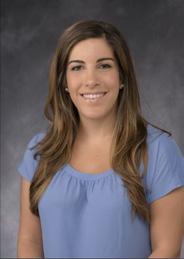
women’s health and functional medicine. She enjoys working in a primary care clinic environment and is devoted to forming relationships with her patients, which is one of the reasons she chose family medicine. She strives to provide high-quality care to patients of all ages and promotes patient-centered care in her practice.
Dr. Madani recommends patients keep track of their B12 levels with the help of their primary care physician. Pulse asked her to explain the benefits of this important supplement.
30 | Pulse Magazine Summer 2023 Ask the Doctor
Pulse: How is vitamin B12 important for good health?
Dr. Madani: Vitamin B12 supports some of the body’s most important functions. It helps with creating red blood cells, which support the transport of oxygen. It also prevents anemia. It is beneficial for increasing energy levels, as well as helping prevent memory loss. Vitamin B12 supports bone health—as we age, we have a greater risk of developing osteoporosis. And it’s good for mental health.
Why should people, especially seniors, pay close attention to their vitamin B12 levels?
Complications can arise if you are deficient. Seniors, in particular, should have normal B12 levels in order to help maintain cognition and prevent worsening mood and poor emotional health. It’s more common for seniors to have lower B12 levels. Changes in digestion that come with age decrease the body’s ability to absorb the vitamin. In addition, regular use of antacids and ulcer medications can inhibit B12 absorption.
What are the signs of a B12 deficiency?
Signs of a B12 deficiency include nerve pain, numbness or tingling in the extremities, fatigue and a decrease in energy. Cognitive decline, irritability and mood changes can also occur. Sometimes people experience weaker muscles and gait issues, which may include difficulty walking and problems with balance.
How is a B12 deficiency diagnosed?
The best option is a blood test—a CBC or a B12 level check. Your primary care physician can order this easily at your annual exam. Once a year is enough if you are not experiencing symptoms of deficiency. If you are starting treatment for B12 deficiency, we may check it more often.
What foods have a lot of this nutrient?
B12 is in foods such as meat and dairy, turkey, tuna and chicken. Breakfast cereals often have it, as well as spinach, eggs and bananas. Not many fruits and vegetables have B12. Vegans and vegetarians have a higher risk of deficiency. A history of irritable bowel syndrome can affect absorption. People who have had gastric surgeries may also have lower levels of B12.
Are supplements helpful?
Yes, typically B12 comes in oral tablets, liquid form and sublingual. Liquid and sublingual have higher efficacy. It’s very difficult to overdose because it’s a water-soluble vitamin. B12 shots (injection form) are very effective and may be administered once a month. We also look at vitamin D, calcium, magnesium and potassium. •
DIETITIAN-APPROVED TIPS
Provided by the Torrance Memorial Dietitian Team
Vitamin B12 is a water-soluble vitamin. Aside from playing a role in red blood cell formation, it is also required for the development and function of the central nervous system.
Sources of vitamin B12: B12 is found in all foods of animal origin, including meat, fish, poultry, eggs and dairy products, such as milk, yogurt, and cheese.
Vegetarian sources of B12 include:
• Vitamin B12-fortified foods include fortified nutritional yeast, soy milk, meat substitutes and ready-to-eat cereals (be sure to check the label, as not all products on the market are fortified with vitamin B12).
• Nutritional Yeast: A health supplement grown on molasses, sugar beets or wood pulp. May be used as a condiment or added to recipes to provide a cheese-like flavor.
• Taking a B12 supplement may also be needed, but check with a health care provider first.
Groups at risk for vitamin B12 deficiency:
• Older adults, individuals with pernicious anemia, gastrointestinal disorders or gastrointestinal surgery, vegetarians or vegans, or infants of women who are vegan.
• Intake recommendations for vitamin B12 and other nutrients are provided in the Dietary Reference Intakes developed by the Food and Nutrition Board. Visit with a registered dietitian nutritionist today to learn more about your exact needs and how to follow a general, healthful diet.
If you have questions or are interested in learning more techniques to help build a healthy and nutritious lifestyle, contact one of our registered dietitian nutritionists at the Outpatient Medical Nutrition Therapy Office or our Diabetes SelfManagement Program located in the Torrance Memorial Specialty Center, 2841 Lomita Blvd., Suite 335, Torrance. Call 310-891-6707. Visit TorranceMemorial.org/nutrition for upcoming classes and programs!
TorranceMemorial.org | 31
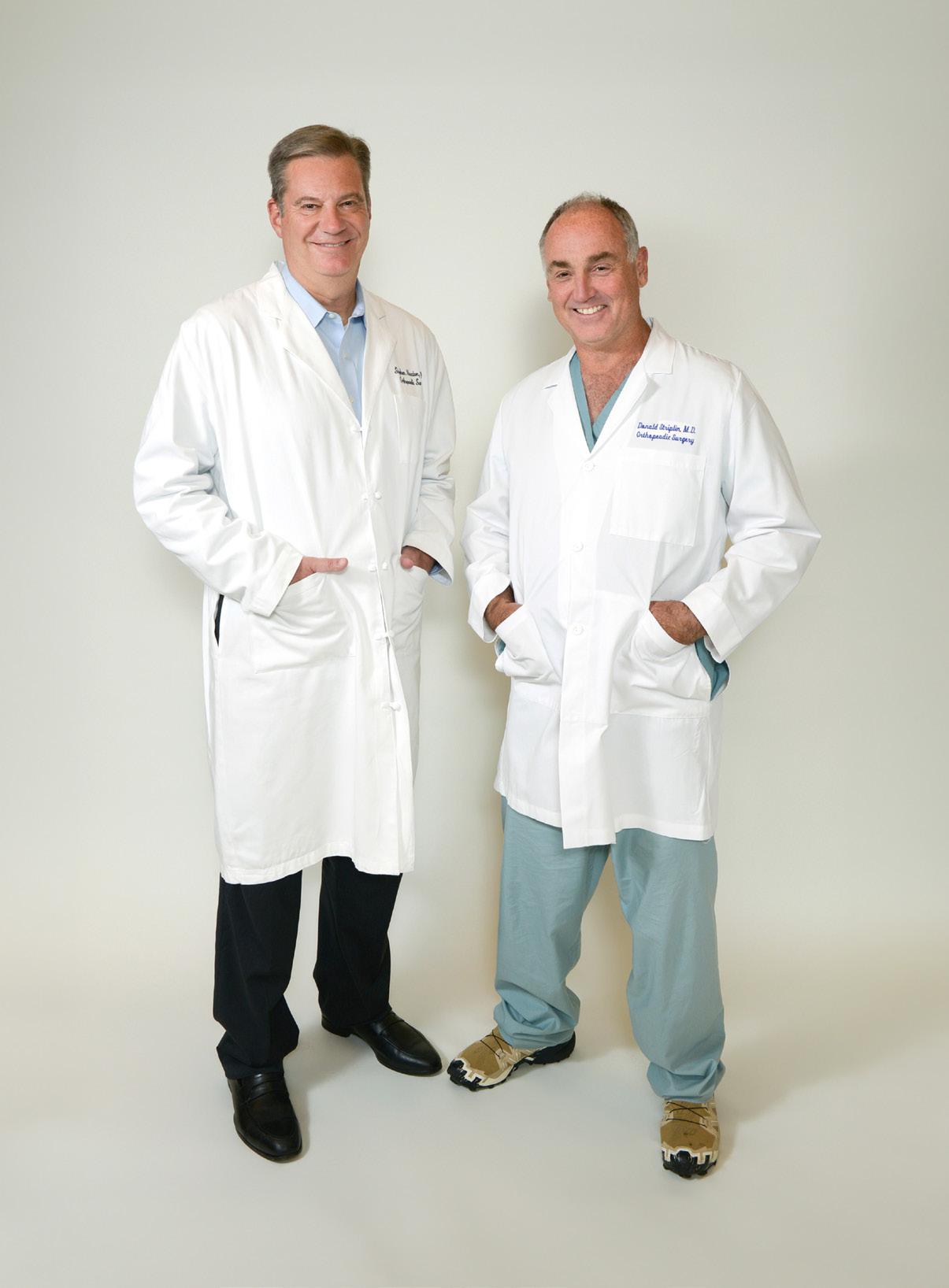
32 | Pulse Magazine Summer 2023
Torrance Memorial Physician Network orthopedic surgeons Stephen Nuccion, MD, (left) and Donald Striplin, MD.
Written


Ouch! You landed hard on one leg while you pivoted to return a tennis serve … or you twisted coming down from a layup in your pickup basketball game … or your daughter cut to the side to avoid a defender in her playoff soccer game.
Whatever the action, the result was the same: a sudden, sharp pain in the knee. Uh-oh, you think, that could be a meniscus tear. Or an ACL injury. That’s what happens to professional athletes, anyway. But what does that mean? How do you tear your meniscus? And just what is your ACL?
The knee is a complex joint, and it works well. Take a wrong turn though, and it can be stretched to the breaking point. The good news? There are options—from rest and physical therapy to surgery—to get you (or your daughter) back in the game.
Meniscus tears are the most common sports-related knee injury, says Donald Striplin, MD, a Torrance Memorial Physician Network orthopedic surgeon and sports medicine specialist. The menisci are two C-shaped pieces of cartilage cushioning your knee, between your shinbone and your thighbone. As you walk—and even more so as you run or jump—the shock of your foot hitting the ground travels up your
shinbone. The menisci act as shock absorbers.

Meniscus tears occur when the knee twists under strain—a movement common in many sports. Menisci lose flexibility with age, putting older adults at risk of a meniscus tear, Dr. Striplin says. But at the same time, younger athletes may play harder, which also raises the risk of meniscus tears and other knee injuries.
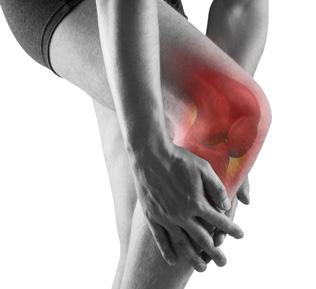
Meniscus tears cause localized pain, swelling and stiffness in the joint. “We don’t always jump to surgery, though,” Dr. Striplin says. “Some tears heal on their own with anti-inflammatories and physical therapy.” Other meniscus tears don’t fully heal but become asymptomatic.
“Younger, more active individuals are more likely to opt for surgery,” notes Torrance Memorial Physician Network orthopedic surgeon Stephen Nuccion, MD. Typically, orthopedic surgeons give a torn meniscus about six weeks to improve. If there are still symptoms—if movement is impaired or if the knee remains painful or swollen—arthroscopic surgery is an option.
Some meniscus tears can be sewn together, while others are just cleaned up. Platelet-rich plasma injections, which stimulate healing in the area

TorranceMemorial.org | 33
by John Ferrari | Photographed by Philicia Endelman
Knee injuries don’t have to keep you down for the count.
Once an injury occurs, an accurate diagnosis is key and gives you information about initial management of the injury and how to best proceed with your recovery.
of the injury, are another treatment option. While less invasive than surgery, the injections do take more time to have an effect.
Like meniscus tears, ACL injuries are common among athletes and are caused by a sudden change in movement or direction that twists the knee. The anterior cruciate ligament (ACL) connects the shin and the thigh bones, providing stability by keeping the two bones positioned correctly.
ACL injuries can be strains or tears. Either way, the initial symptoms are pain, swelling, and a loss of stability in the knee and leg. While ACL strains can be treated with rest, ice and anti-inflammatories, surgery may be the best treatment for tears.
“Ligament tears present a difficult set of problems,” explains Dr. Nuccion. “They don’t heal and can’t be sewn together. They’re like a rope that’s been ripped.”
Untreated ACL tears can cause a cascade of other problems too. The instability caused by a torn ACL can lead to meniscus tears and, over time, arthritis. So for both shortand long-term recovery, surgery is often the preferred option.
ACL reconstruction involves removing the torn ligament and replacing it with a section of ligament taken from somewhere else (the quadriceps tendon, for example). The ligament is attached to the femur and tibia and effectively becomes a new ACL.
It’s a procedure Dr. Striplin knows well. He’s had both of his ACLs reconstructed after tearing them, a year apart, skiing down the same double black diamond run. In both instances, the binding on a ski didn’t come loose when he fell, causing his knee to twist.
An audible pop is the hallmark of an ACL

tear, Dr. Striplin says. “When I heard that pop, there was no question what my injury was. Nine times out of 10, when a skier hears a pop and twists a knee, it’s a complete ACL tear.” He advises getting an evaluation if you hear or feel that pop. “It may not be an emergency needing to be seen that day—unless there’s also a fracture and the patient is unable to bear weight—but it can lead to continuing or secondary injuries.”
Not everyone needs surgery for an ACL tear, though. “Some people have tight ligaments that can hold everything in place,” Dr. Striplin explains. “Surgery is more common in younger, more aggressive athletes, where the injury is more common—less so in older athletes.”
He recalls when he tore his ACLs in the late 1980s, reconstructions were a fairly new thing. “The standard after surgery was to keep the knee immobile. Now we emphasize getting a person back to normal activities as soon as possible. ACL reconstruction is an outpatient surgery. Patients can bear their full weight the day the procedure is done and return immediately to many daily activities. The return to sports depends on how hard you work to rebuild strength through physical therapy.”
Patella dislocations are another common type of knee injury. You know the patella as your kneecap. More precisely, it’s a bony fulcrum at the front of your knee, inside the quadriceps tendon, held in place in a groove in your thighbone. A sudden twist can cause your patella to pop out of that groove (like an ACL tear, it can be accompanied by an audible pop).
A dislocated patella usually can be relocated. The initial treatment, as with so many injuries, is rest, ice and compression. Brac-
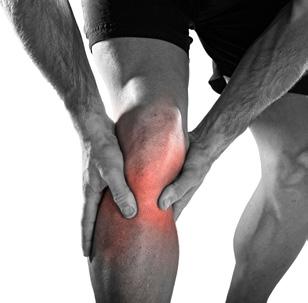
Stephen Nuccion, MD is a Torrance Memorial Physician Network orthopedic surgeon and is located at 23550 Hawthorne Blvd., Suite 120. To schedule an appointment, call 310-517-1216.
Donald Striplin, MD, is a Torrance Memorial Physician Network orthopedic surgeon and is located at 23560 Crenshaw Blvd., Suite 102. To schedule an appointment, call 310-784-2355.
34 | Pulse Magazine Summer 2023
“The return to sports depends on how hard you work to rebuild strength through physical therapy.”
ing and physical therapy are often all that are needed for a full recovery. In some instances—successive patella dislocations, for example—patella stabilization may be the best option. An outpatient procedure to reconstruct the ligament holding the patella in place, stabilization involves local anesthesia only—minimizing pain and anesthesia effects and allowing the patient to begin postoperative physical therapy quickly.
While there are options to treat sports-related knee injuries, prevention is even better. Dr. Nuccion recommends preparticipation conditioning: preparing yourself to take on a new activity (or return to an activity you’ve been away from) for at least six weeks before
hitting the field, court or slope. “Work on your strength and agility before entering the sport,” Dr. Striplin agrees.
If you do find yourself with a knee injury, the first step to recovery is an accurate diagnosis. “That’s the key,” Dr. Nuccion says. “An accurate diagnosis gives you information about initial management of the injury and how to best proceed with your recovery. We start with a physical exam and X-ray or MRI imaging, and together with the patient we assess where we are and where we want to end in terms of recovery. This allows us to individualize treatment options for the specific patient. It isn’t a one-size-fits-all scenario.” •
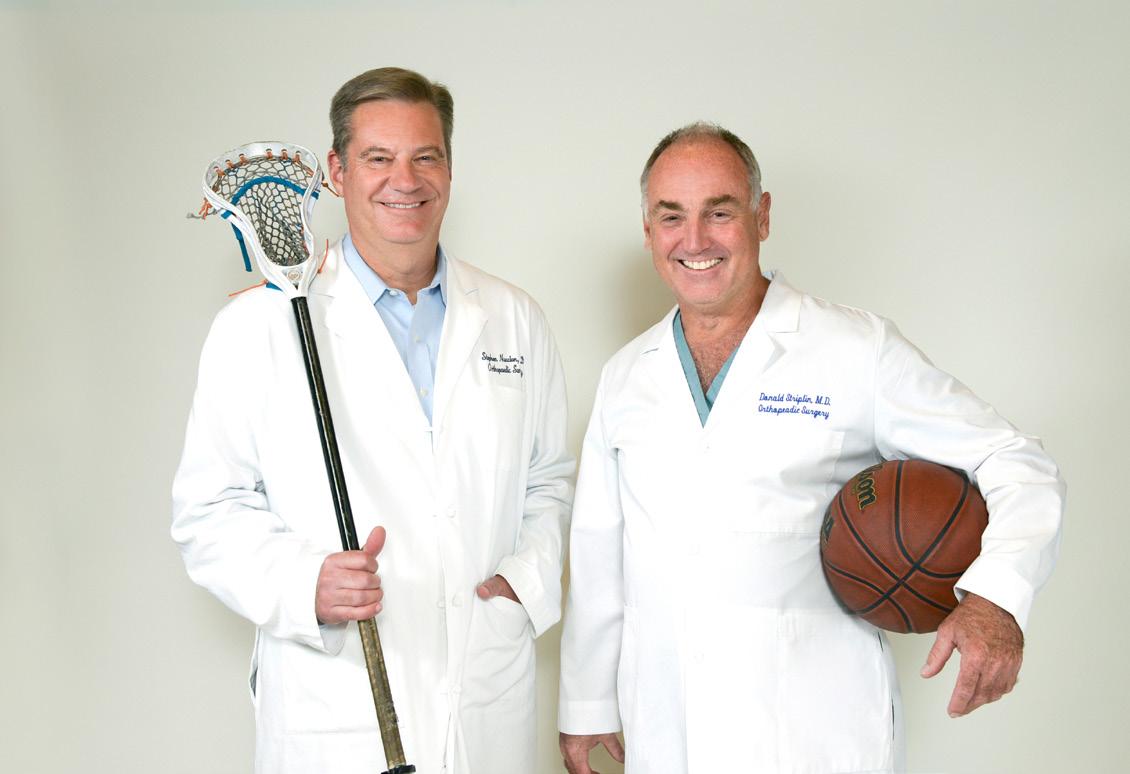
TorranceMemorial.org | 35
“Ligament tears present a difficult set of problems,” explains Dr. Nuccion. “They don’t heal and can’t be sewn together. They’re like a rope that’s been ripped.”
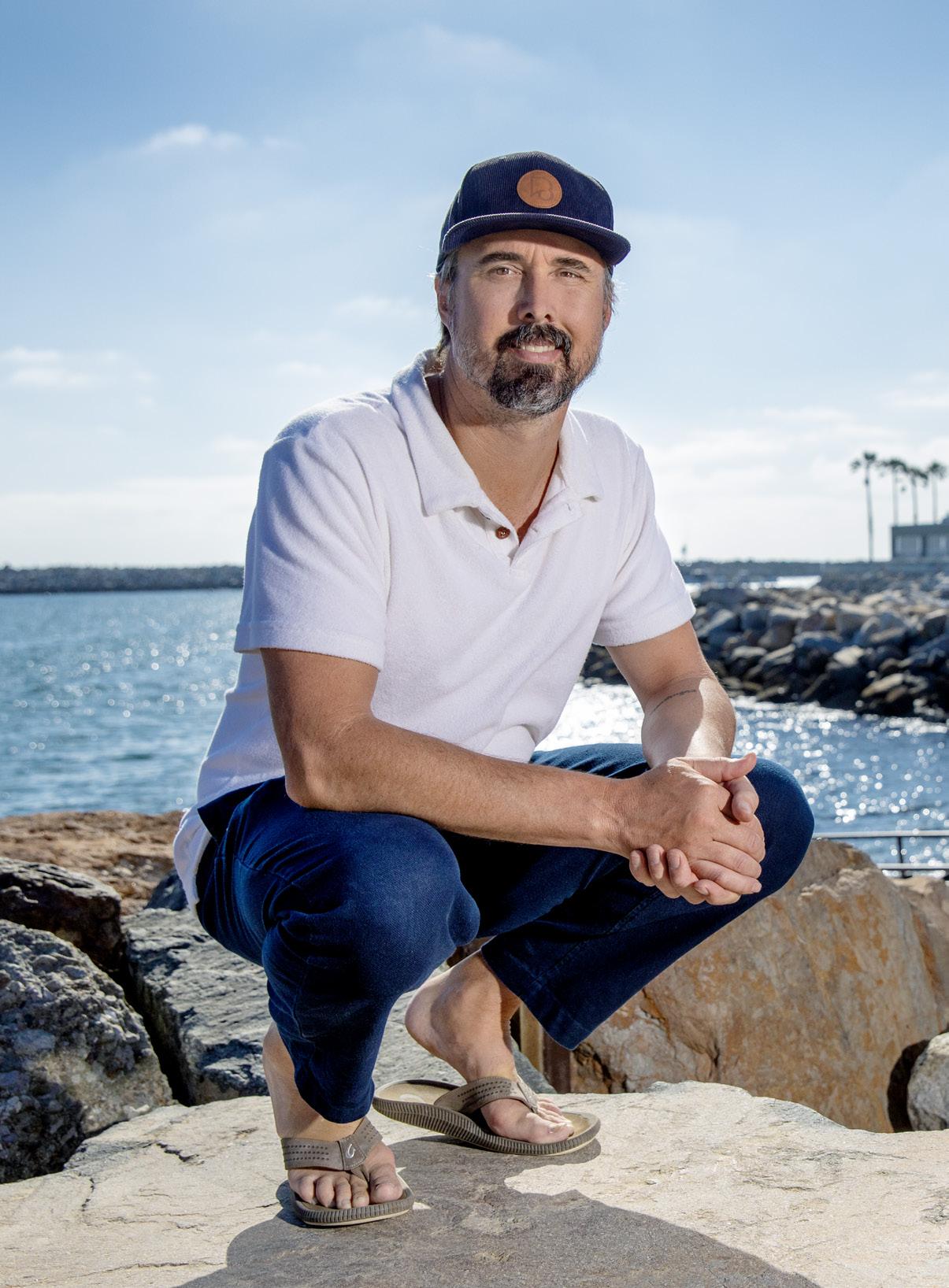
36 | Pulse Magazine Summer 2023
Founder of the BeachLife Festival, Allen Sanford is a devoted husband and father, and a true Renaissance man.
Meet the SurferPhilosopher Behind BeachLife
Entrepreneur, restaurateur and founder of BeachLife Festival Allen Sanford has thought long and hard about what it means to live the good life.
Written By Diane Krieger
Photographed By Michael Neveux
Allen Sanford remembers exactly when the seed was planted: June 1, 2016. He was crawling up the Harbor Freeway to hear Paul Simon in concert at the Hollywood Bowl.
“I was late, I was stuck in traffic and I was upset,” he recalls. The evening felt ruined before it had even started. “And I thought, why am I here? The whole goal was to enjoy myself.”
Then a crazy idea popped into his head: Why not bring Paul Simon to Redondo Beach? Instead of freeway hassles, concertgoers could walk up from the sand in flip-flops. And BeachLife Festival was born.
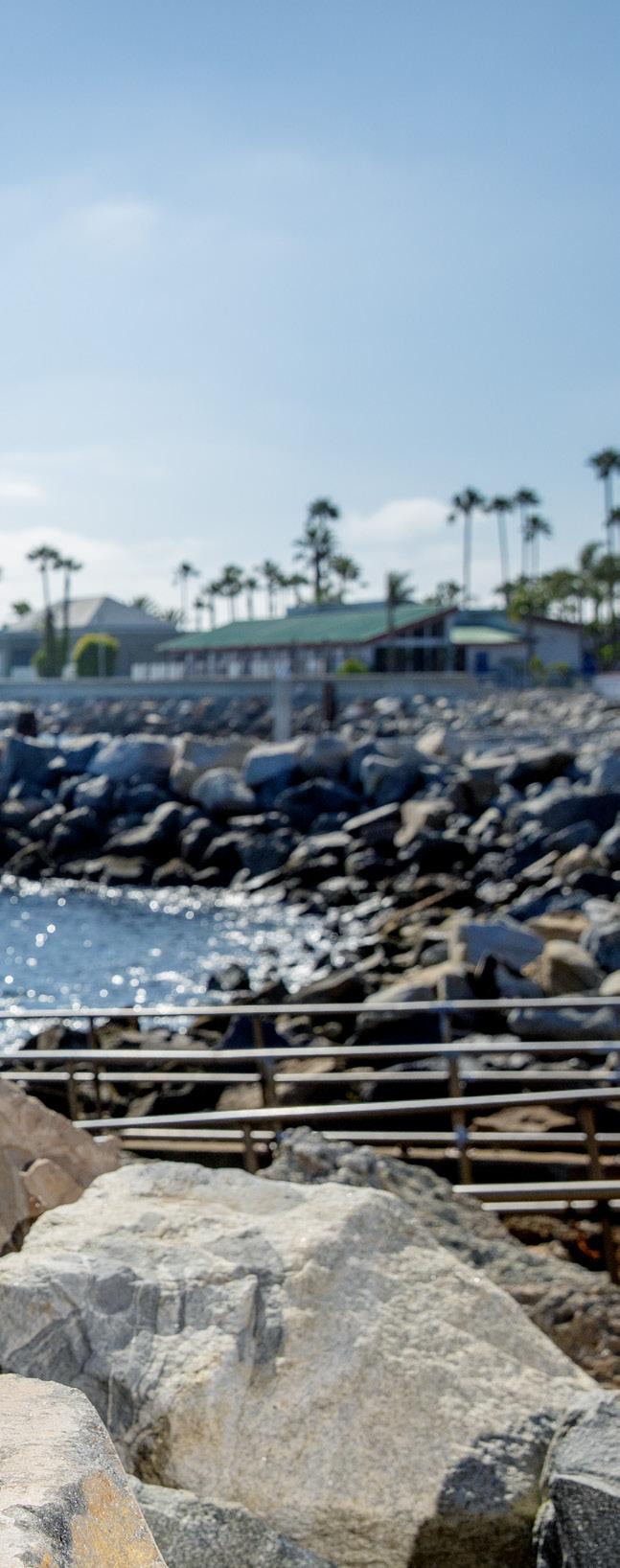
Sanford hasn’t booked Paul Simon yet, but he’s brought Willie Nelson, Brian Wilson and Hall & Oates to Redondo Beach. In May, the fourth installment of the three-day music fest featured John Fogerty and The Black Crowes. Last year Sanford launched a country-Americana spinoff: BeachLife Ranch. The second installment brings The Doobie Brothers, Jack Johnson and Brad Paisley to King Harbor this month.
Sanford is a man of many parts. Successful entrepreneur, civic leader, devoted husband and father. But he is also a world surfer with sand
TorranceMemorial.org | 37 Zest for Life
between his toes and “eudaemonia” tattooed on his arm. (That’s ancient Greek for “human flourishing” or “a life well-lived”—the highest good, according to Aristotle.)
Sanford is passionately committed to this philosophy—not just for himself but for the entire South Bay community. During the pandemic, when indoor dining was off the table, he spearheaded the construction of curbside parklets outside local restaurants. A member of the Riviera Village Association, he lobbied the group to use its business improvement funds to front the $30,000 cost per unit. Then he
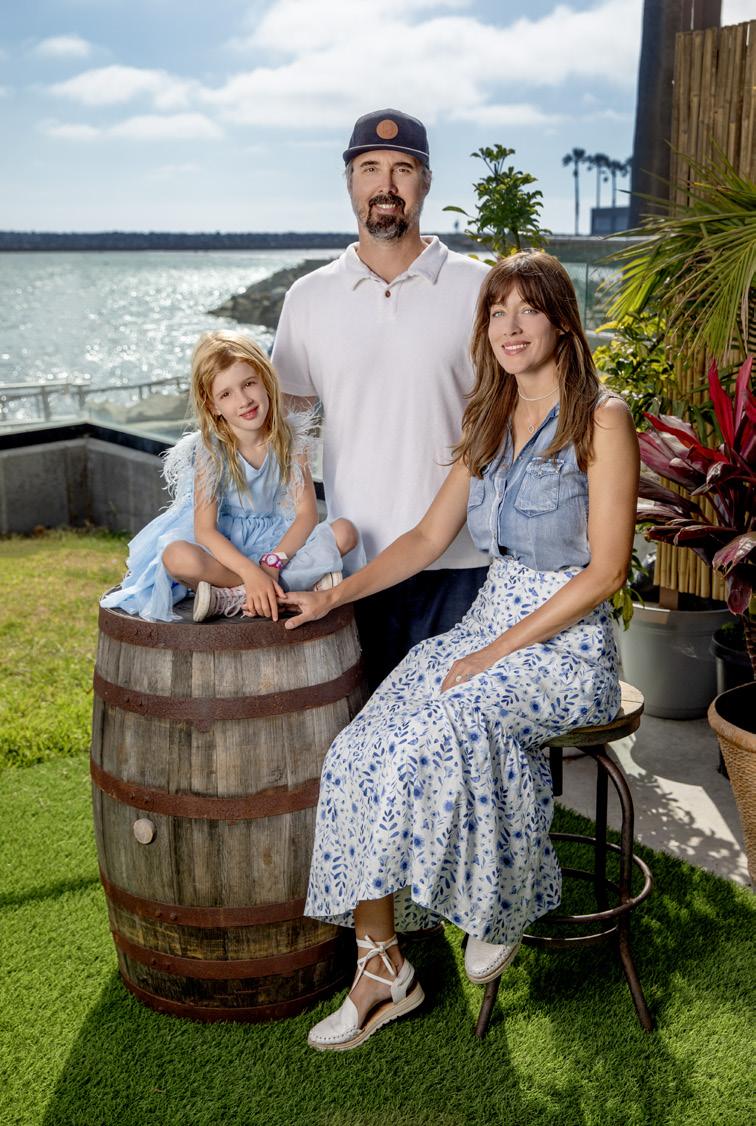
strapped on a toolbelt and joined the crew that built more than 20 parklets.
Sanford grew up surfing and skateboarding all over the South Bay. His laid-back parents lived in Malaga Cove but let their three boys run loose all summer. “We’d wake up and get thrown outside,” he recalls. “There were no limits really—just how far we could get on our bikes and be back before sunset.”
The rest of the year, Sanford concentrated on baseball. He dreamed of an MLB career, but at 17 his peripheral vision changed. “I went from being an all-star homerun leader at Peninsula High to where I could barely see the ball.”
He played in the Division I baseball program for two years at Santa Clara University before quitting in frustration. With baseball off his plate, Sanford got serious about his philosophy major. “I’m fascinated by all these words: fairness, justice, right, wrong,” he says. “I like studying how people make decisions and what John Locke called the social contract.”
Sanford also loves music—all kinds—and has played in multiple bands. He taught himself guitar at 14, picking out his favorite licks while stuck at home for six months. His parents had grounded young Allen after he was “busted for something inconsequential,” he explains. “But my dad felt bad for me, so he rented me a guitar.”
Now 46, Sanford still noodles around on acoustic guitar and piano. His favorite artists are jazz greats Chet Baker and Dave Brubeck. “I also love old Jamaican reggae, like Don Carlos. And I’m starting to like country a lot,” he adds.
After college, Sanford came back to Redondo Beach and took a job busing tables at Patrick Molloy’s to pay rent. The Irish pub on Hermosa Pier was struggling at the time. Sanford offered to manage the place for free. The owner had laughed at first, but Sanford was dead serious and proved himself by working crazy hours without pay.
“I gave it my whole life. I was 21. It was fun,”
38 | Pulse Magazine Summer 2023
A South Bay native, Allen Sanford and his wife, Colleen, are raising their daughter Annika with the beachlife ethos.
Zest for Life
he says. Business really picked up, and “I ended up making them a lot of money.”
Soon Sanford opened a restaurant with his brother and childhood friends: The Union Cattle Company in Hermosa Beach. Thirteen more eateries followed over a long and prosperous career. Sanford also involved himself in the South Bay live-music scene, founding the popular Saint Rocke nightclub and running the Hermosa Beach Summer Concert Series for many years.
Before the pandemic, he had stakes in nine establishments. Today, it’s down to six—but only in a hands-off capacity as an investor. Running BeachLife Festival is Sanford’s fulltime job now.
It takes 1,200 people working around the clock over 14 days to build out the 8-acre festival venue at Seaside Lagoon. “It’s a magical transformation, like a little town,” he says. “It’s beautiful. The festival goes for three days and three nights. And then it gets taken down in four days.”
While comparable in scale to Ohana Festival in Dana Point and BottleRock in Napa Valley, BeachLife is an anomaly. Sanford calls it “a festival for non-festival-goers.”

It very deliberately celebrates beach living with carefully curated music, food, vendors, art installations and activities. There’s a multigen-
erational vibe—families walking hand in hand, a sense of hometown safety. “Hundreds of kids running around, and people watching after each other’s kids,” Sanford adds.
Following his epiphany at the Paul Simon concert, Sanford had successfully pitched his brainchild to Redondo Beach Mayor Bill Brand. That night, Sanford came home and asked his wife, Colleen, what he should call the festival. A German native, she talked about watching overdubbed episodes of Baywatch in her youth, fantasizing about living that beach life. The name stuck.
Sanford had met his wife on the sand in Manhattan Beach. They were good friends first, then became a couple. Formerly an on-air personality with Fuel TV, Colleen now stays at home with 5-year-old Annika, whom they’re raising steeped in the beach-life ethos.
Sanford takes his daughter out on his surfboard every chance he gets. “I push her into the waves, and she’s standing up now,” he says. “I’ve got fingers crossed that she’ll love the ocean as much as I do.”
In a throwback to Sanford’s own carefree childhood, during BeachLife Festival weekends he lets Annika run loose with the other sand-dusted kids. •
TorranceMemorial.org | 39
Concert-goers enjoy the views of the Lowtide Stage, which sits in the sand along the waterfront of King Harbor.
PHOTO BY JP CORDERO
South Bay Food Initiative
Where teenagers tackle hunger in Los Angeles
Written by Laura Roe Stevens
What started in 2017 as a high school club by three Manhattan Beach students has grown into a nonprofit with hundreds of teenage volunteers on a quest to eradicate hunger in Los Angeles County. The South Bay Food Initiative (SBFI) hosts yearly food drives and organizes volunteer events to raise funds, assisting food banks and pantries. It is run by student volunteers from Mira Costa High School and Palos Verdes High School and

enjoys growing assistance from Loyola Marymount High School students and South Bay middle school students.
Founders Ryan Rossow, Andrew Cormack and Max Karambles were sophomores at Mira Costa High School when they created the SBFI “to assist people in the community who didn’t have enough to eat.” As the three volunteered with food pantries and organizations to distribute food, they learned firsthand about the growing food insecurity in Los Angeles County.

40 | Pulse Magazine Summer 2023 Community Benefit
CEO Ryan Rossow (center) is one of the founders of the South Bay Food Initiative and credits donations and student volunteerism as the two biggest factors in the organization's success.
A recent study by the University of Southern California reported 1 in 4 residents in Los Angeles County goes hungry. The researchers linked L.A. food insecurity to job losses, illness and lingering debt accrued during the pandemic, and systemic poverty within minority communities.
“Food bank donations are needed now more than ever,” says Rossow, who has continued as CEO of the SBFI and has studied the effects of food insecurity on American families as a student at Vanderbilt University. While the SBFI is run completely by student leaders, Rossow’s mother, Susan, volunteers and assists with operational duties. She has seen the need within Los Angeles County grow and estimates the SBFI has helped “well over 250,000 families, raised $15,000 in donations [for local food banks] and donated more than three tons of food.”
“The need is not going down. It’s grown incredibly. And with the recent cutback with CalFresh, we’re seeing more need for food,” Susan explains.
In starting their venture, the student leaders of the SBFI outlined three missions: education, eradication of food insecurity and volunteerism. These are the principles the organization continues to successfully incorporate today.
To meet these goals, the SBFI creat-
ed a website (southbayfoodinitiative. com) offering multiple resources for food assistance. The SBFI also hosts two yearly food drives and coordinates monthly “hands-on events” for volunteers.
“These kids want to volunteer. Each month we have kids volunteering at soup kitchens, outdoor events and assisting the Los Angeles Regional Food Bank and Food for Kids,” says Susan. “It never ceases to amaze me, the heart space these kids have.”
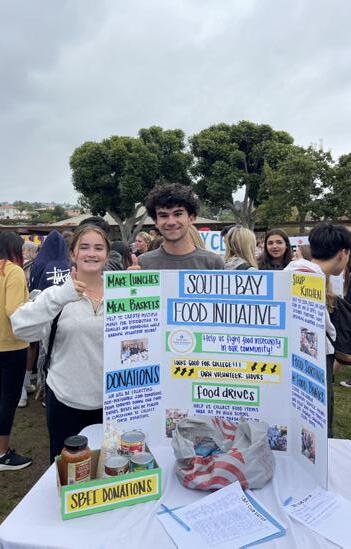
The SBFI is growing “exponentially,” and funds raised go directly to food banks. Since the SBFI’s food drives are held at multiple schools, Susan says it currently needs a brick-andmortar space to store, organize and hand out food.
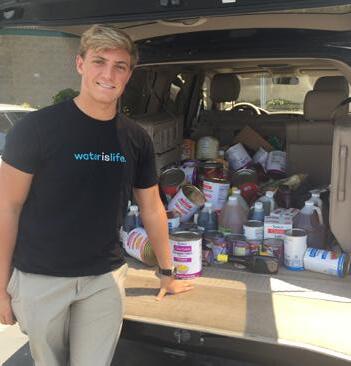
More students sign up to volunteer each year, according to Ryan, who says it reflects student leaders’ successful educational efforts. “The success of our organization is our high school clubs. Our student leaders, who run the SBFI clubs at high schools, empower their peers to educate, volunteer and motivate others to end food insecurity. Seeing the organization now makes me overjoyed—not only because of how far it has come, but the potential for how far it can go!” •
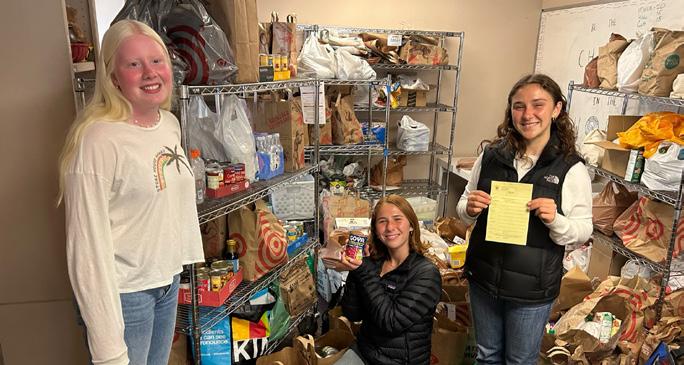
TorranceMemorial.org | 41
The South Bay Food Initiative hosts two yearly food drives and coordinates monthly events for student volunteers to serve.
Marine Mammal Care Center
A champion for abandoned and sick marine mammals
Written by Laura Roe Stevens | Photographed by Siri Berting
San Pedro-based Marine Mammal Care Center (MMCC)—the only urgent care facility treating Los Angeles County marine mammals 365 days a year—is needed now more than ever. The 31-year-old organization has grown exponentially to provide critical care to growing numbers of sick or abandoned marine mammals.
To date, 10,000 animals have been given crucial veterinary care, food and shelter by its dedicated team of staff and volunteers. According to John Warner, the CEO of MMCC, 300 to 400 marine mammals are rescued each year and rehabilitated at the hospital facility.
While those numbers are impressive, they have been rising dramatically this year. Why? In the first six months of 2023, there was an influx of abandoned baby elephant seals on beaches throughout Los Angeles County. This required massive amounts of fish and manpower, exhausting MMCC reserves and volunteers.
“This is the year of elephant seal pups,” says Warner. “We have had over 280 total patients come through the hospital already this year (January through July).”
Experts point to storms as a factor, as they can separate pups from their moms. Whatever the reason, they are here and they need care—and lots of fish.
“We have gone through more fish this year than we budgeted for because elephant seal pups eat much more than sea lions,” explains Warner. “A baby elephant seal needs to be chunky, so when they are emaciated, it takes a lot of fish to get them back on track. We have already gone through 150,000 pounds of fish and need more.”
Adding to this emergency, an influx of sick mammals began appearing in June along Southern California shores with red tide poisoning. A type of algae blooms in warmer waters, causing red tide. It was at high levels, sickening dolphins, sea lions and elephant seals with domoic acid toxicity.
By the end of June, MMCC was striving to assist with the red tide crisis while also juggling lengthy care for hundreds of elephant seal pups. Luckily, the seal pups have “no known underlying health issues, other than being separated from moms prematurely,” Warner says.
MMCC volunteers “mother” the pups in a makeshift “fish school” as pups learn to forage for
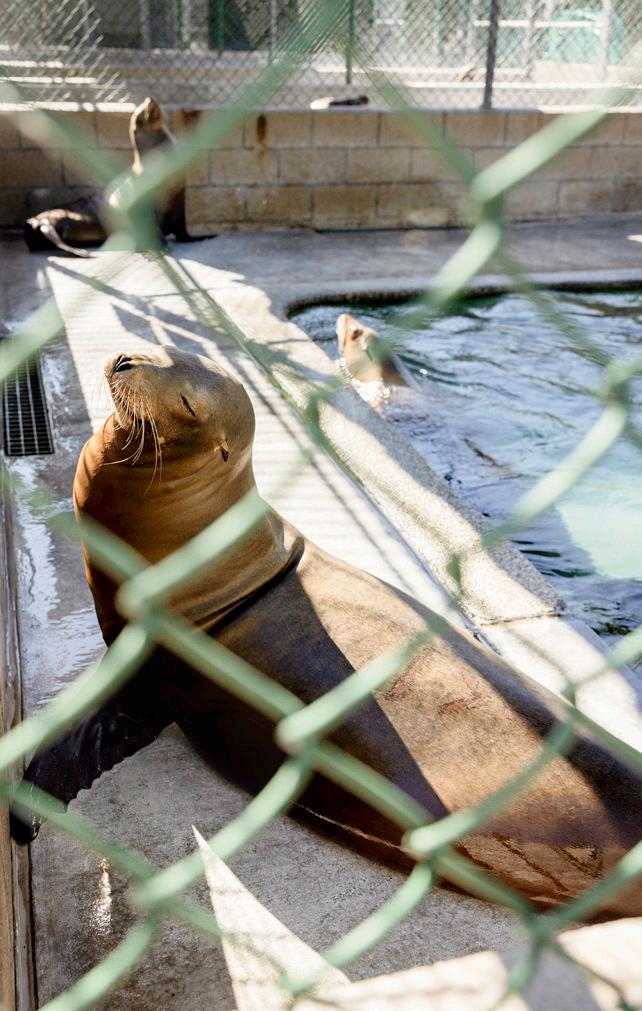
42 | Pulse Magazine Summer 2023 Helping Hands
food from their mothers. Due to early separation, the babies were washed ashore emaciated, stressed and malnourished—without the ability to hunt for food.

“We focus on giving them a stressfree environment and then teach them how to eat a fish,” explains Warner. This requires many volunteers, as seal pups don’t even recognize fish as food. Volunteers begin by putting fish into the mouths of pups so they recognize it as a yummy treat. Then they teach them how to hunt.
“We dangle fish in front of their face, or we dangle a fish on the ground so it looks like it’s alive,” says Warner. “It takes a couple of weeks, and it is a labor-intensive job. We’ve got great staff and volunteers.”
At press time, MMCC had received a challenge grant of $175,000 to purchase more food. The organization is challenged to raise another $175,000 by year-end to receive the full grant. “All donations made for the remainder of 2023 in support of fish will be matched dollar for dollar!” Warner says.
“Ninety percent of our operating revenue comes from individuals and foundations,” explains Warner. “We were blessed with a $1 million donation from Richard and Melanie Lundquist—the largest single donation in our history—in recognition of our 30th anniversary last fall.”
As summer vacationers hit Los Angeles beaches, Warner stresses the vital importance of keeping a safe distance (50 to 350 feet) away from grounded marine life and alerting a lifeguard. “Wildlife are not pets,” he says. “If they interact with humans, they can pose a real threat and may bite. When they do, authorities will euthanize them.”
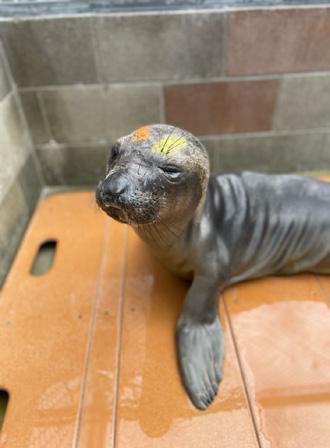
If a lifeguard isn’t present, call the MMCC hotline at 1-800-39-WHALE. And remember, attention distresses the animals. “You shouldn’t interact at all. These animals need rest, and when people are interacting, they can’t relax and get stressed.” • Visit
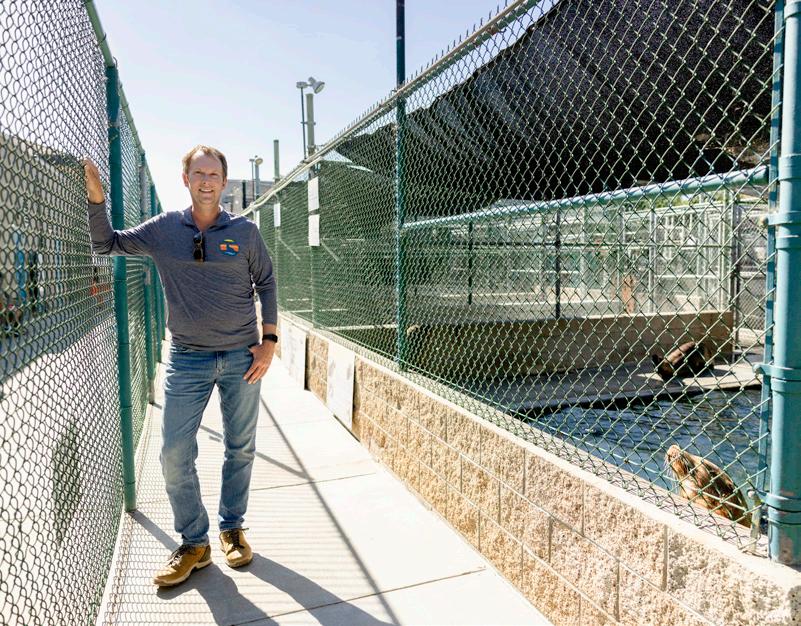
TorranceMemorial.org | 43
marinemammalcare.
to learn how to
org
donate or volunteer.
CEO John Warner oversees all hospital operations from fundraising and fish supply to training volunteers to nurse seal pups back to health and teach them how to hunt for food before going back to the ocean.
Telling Your Story
Children learn about family history and traditions through stories told by older generations.
Written by Jill Biggins Gerbracht
He spotted her from across a crowded room at a college fraternity party and said to his best friend, “I’m going to marry that girl!” This is one story I treasure, knowing about how my parents met. They recently celebrated their 63rd wedding anniversary, so I guess my dad knew what he was talking about in that moment more than six decades ago!
Family history is one of the most precious gifts in life, and it doesn’t cost anything to share. Taking time to ask a loved one important questions about what their life was like when they were growing up can be rewarding for both of you.
Plus, there are untold benefits in recognizing the value of life reflection. For seniors, the chance to tell their stories can improve cognition, lessen depression and improve behavioral functioning. It can also
build a sense of pride and respect. Did you know October is National Family History Month? What a great opportunity to talk about your family history and make sure your story is remembered for decades to come. If stories, traditions and history are not passed down from one generation to the next, eventually they will be lost and forgotten.
Although I have not been intentional about creating these stories in my own family, I want to begin to document what I can from my parents by way of asking them questions and looking at old photographs and personal memories. I know the story of how my parents met, but I would love to have more stories like that in my arsenal to share with my own kids and grandkids one day.
As we get older, we realize the importance of family—not just the people we grew up with or raised but
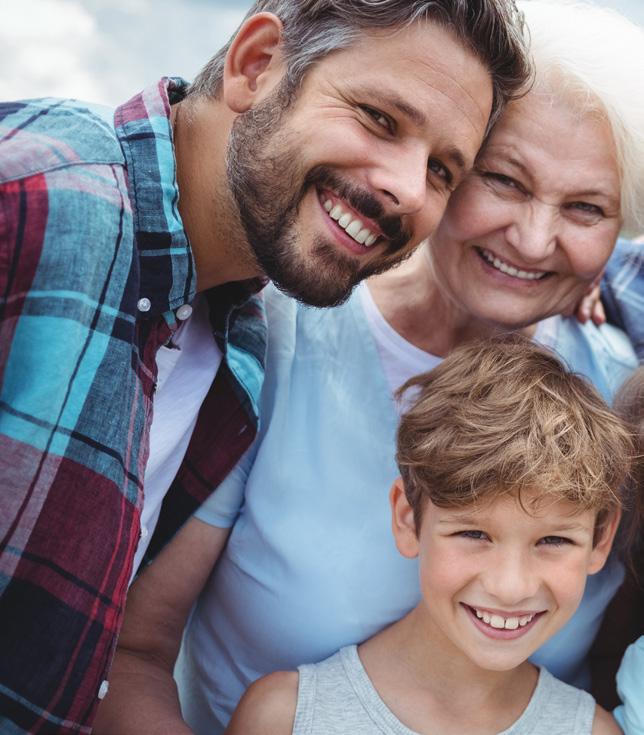
the broad, extended family of greataunts, third cousins twice removed and great-great-grandparents. Learning more about the generations that came before us and are no longer with us may teach us much about our families, our history and ourselves.
How does one begin the process of helping a family member reminisce about treasured life memories? Use the following tips to successfully prepare for the interview:
• Prepare the questions in advance.
• Set aside a quiet time and place free from interruptions.
• Use your phone or other digital recorder (tested in advance) to transcribe the dictation.
• Listen attentively and gently, and ask clarifying questions if something isn’t clear.
• Consider a video call if you don’t live near the family member. Record the call. •
44 | Pulse Magazine Summer 2023 Family Focus
NOW FOR SOME CONVERSATIONS STARTERS:
• Bring old family photos as a great way to get things started. Viewing old photos together can help identify relatives you might not know about and tell stories of their own.

• Use open-ended questions like “What do you remember about your grandparents?” or “What
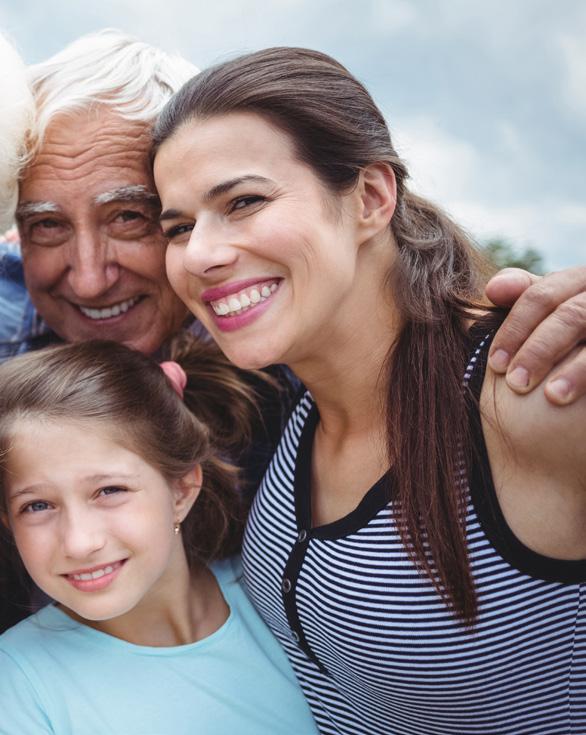
was life like when you were in grade school?” to allow for more free-thinking answers.
• Don’t forget closed questions like “What street did you grow up on?” or “Where was your mother born?” to provide concrete details about their history.
21 REMINISCING QUESTIONS FOR SENIORS
1. In what ways do you think I’m like you? And not like you?
2. Which person influenced your life the most?
3. Do you have a lost love?
4. Which new technology have you found most helpful in your life?
5. Which new technology do you find to be the most annoying?
6. Is there anything you have always wanted to tell me but never have?
7. Is there anything you regret not having asked your parents?
8. What was the happiest moment of your life?
9. What are you most proud of?
10. How did your experience in the military mold you as a person?
11. What are the most important lessons you’ve learned in life?
12. What is your earliest memory?
13. Did you receive an allowance as a child? How much? Did you save your money or spend it?
14. Who were your friends when you were growing up?
15. What was your favorite thing to do for fun?
16. What was school like for you as a child? What were your best and worst subjects? What did you eat for lunch?
17. What school activities and sports did you participate in?
18. Do you remember any fads from your youth? Popular hairstyles?
Clothing?
19. What world events had the most impact on you?
20. How would you like to be remembered?
21. Is there anything you would do over if you could?
TorranceMemorial.org | 45

46 | Pulse Magazine Summer 2023
Alex Abad, founder of the Tower60 Foundation
A Towering Drive to Give Back
Realtor ® Alex Abad’s foundation supports education and other causes.
Written by Nancy Sokoler Steiner | Photographed by Micheal Neveux
Born in Argentina, Alex Abad grew up dirt poor. “I had no toys, nothing. My mom had to sell her shoes to put food on our table,” he recalls. Abad vowed if he ever escaped poverty, he would use his means to help others.
Now the owner of a successful El Segundo-based real estate company, Abad is keeping his promise. His Tower60 Foundation has raised more than $250,000 for charitable causes thanks to the popularity of an image of the community’s lifeguard tower. It started with a photo he took of the city’s only lifeguard tower—Tower 60 at the foot of Grand Avenue—silhouetted against a stunning sunset. Abad posted it on social media and immediately received requests for copies of the image.
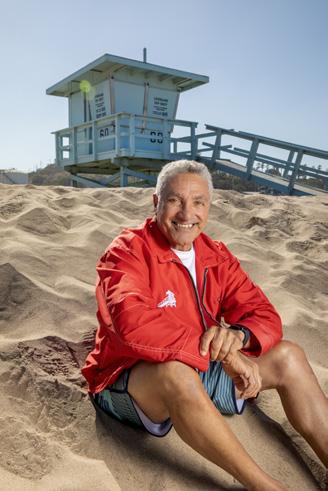
At holiday time, his wife suggested Abad print the photo on coffee mugs and use them as gifts for clients. When he posted images of the mugs, he was inundated with requests. “I gave away 2,500 mugs, shipping them to locations all over the country,” he reports.
Next came trucker hats with the image of the silhouetted tower. This time, Abad asked recipients for a donation to the El Segundo Education Foundation, a nonprofit providing funding to the El Segundo Unified School District. Now the logo appears on an array of apparel and merchandise including sweatshirts, beanies and beach bags. All profits are donated.
Most funds—about $166,000—have gone to the El Segundo Education Foundation. Other monies supported
breast cancer research. In 2019 Abad obtained permission to paint Tower 60 pink in honor of Breast Cancer Awareness Month. The campaign raised $50,000 that year and another $50,000 in 2021. Tower60 Foundation also donated food to support Torrance Memorial’s health care workers during the pandemic.
An El Segundo resident for 33 years, Abad initially chose the community for the caliber of its schools. That and other qualities have kept him there. “It’s a tight, small community and you get to know everybody,” he says. As a surfer, he appreciates the beach lifestyle.
He started his real estate career selling properties in Manhattan Beach and then expanded to El Segundo. Now eight agents work with Tower60 Real Estate Group.
Abad’s first foray into organized giving began in 2006 when, as a new real estate agent, he created Commissions for Education. He and other participating South Bay Realtors pledged to give at least 1% of their commissions to the education foundation of the city where the property was located. (Every South Bay city from El Segundo to Palos Verdes has its own education foundation.)
After about three years, the effort fizzled. But by then Abad had become involved in the El Segundo Education Foundation, eventually serving as its chair in 2015 and 2016. And he had found his calling.
“Your greatest achievements are the things you do for others,” he says. “I’m living my dream.” •
TorranceMemorial.org | 47 Community VIP
“Your greatest achievements are the things you do for others. I’m living my dream.”
There’s No Place Like Home
Carson Mayor Lula Davis-Holmes’ work reflects a love of her community.
Written by Nancy Sokoler Steiner | Photographed by Micheal Neveux
Lula Davis-Holmes chose Carson as the location to start her family in 1974. “It had close proximity to everything and had a family atmosphere,” she says. “I wanted to live in a place where children could run and play in the park.”
Five decades later, she still appreciates her choice. “I got to know all my neighbors and watched the kids grow up. Those neighborhood children and my kids are still friends,” says Davis-Holmes, whose two grown children also live in Carson.
As mayor, Davis-Holmes works to preserve Carson’s neighborhood feel while growing the city’s appeal more broadly. Elected in November 2020, her accomplishments include increasing the city’s housing supply, introducing a city sustainability and innovation department, and achieving an $88 million budget surplus. A new outlet mall will open next year, and the outdoor Carson Marketplace is planned for the near future. It will feature dining, shopping, a botanical garden and a performance pavilion, among other amenities. It is intended to become a regional draw.
Davis-Holmes says her proudest accomplishment as mayor is the Veterans Village of Carson. The 51unit complex, which provides housing and amenities for veterans, opened in 2021. She rails against the poor treatment of veterans and the prevalence of homelessness among this population.
“We put some ribbons on a pole, say ‘Welcome Home’ and then close our eyes. Shame on us,” she says. “I wanted to send a message that if Carson can build housing, then all cities should do so.” A second Veterans Village for the city is currently under consideration.
After COVID-19, Davis-Holmes wanted children who’d been sequestered in their homes “back outside in the parks, running and playing and doing the things my kids did when they were growing up.” She spearheaded efforts to eliminate registration fees for city youth sports programs. Children can now participate on teams for free.
Davis-Holmes also secured a corporate grant of $350,000 to provide sports uniforms. “The uniforms
are free, but parents must come and volunteer their time. I want parents back in the parks with their children,” she says.
Davis-Holmes began her career with the city as a recreation center supervisor in 1980. She advanced to a variety of positions including recreation superintendent, city council member and mayor pro tempore. As Carson’s first black female mayor, she chooses not to focus on the distinction. “I never use it as a crutch; I never use it as a strength. I was elected by the people to keep the city moving in a positive direction,” she says.
A breast cancer survivor, Davis-Holmes launched a women’s health conference and business expo nine years ago. “It’s entitled All About Me because women are so busy taking care of kids and husbands and families. We need a time and space to learn and address our own health concerns.” The October event, cosponsored by Torrance Memorial Medical Center since 2022, draws about 600 participants.
Davis-Holmes wants people to know Carson as she knows her city. “I want to rebrand Carson as a destination to live, work, play and pray.” •
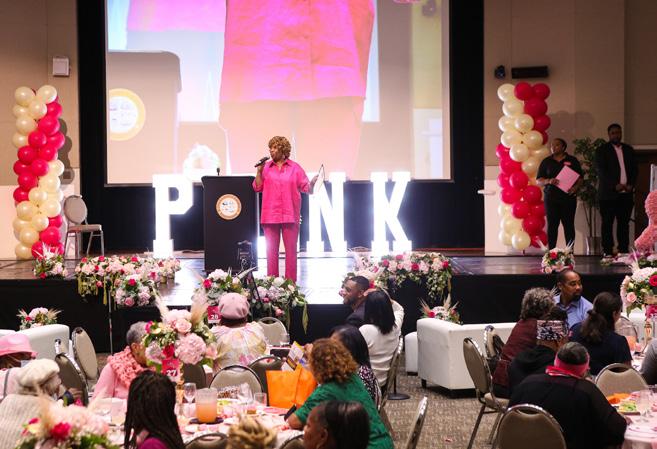
48 | Pulse Magazine Summer 2023 Community VIP
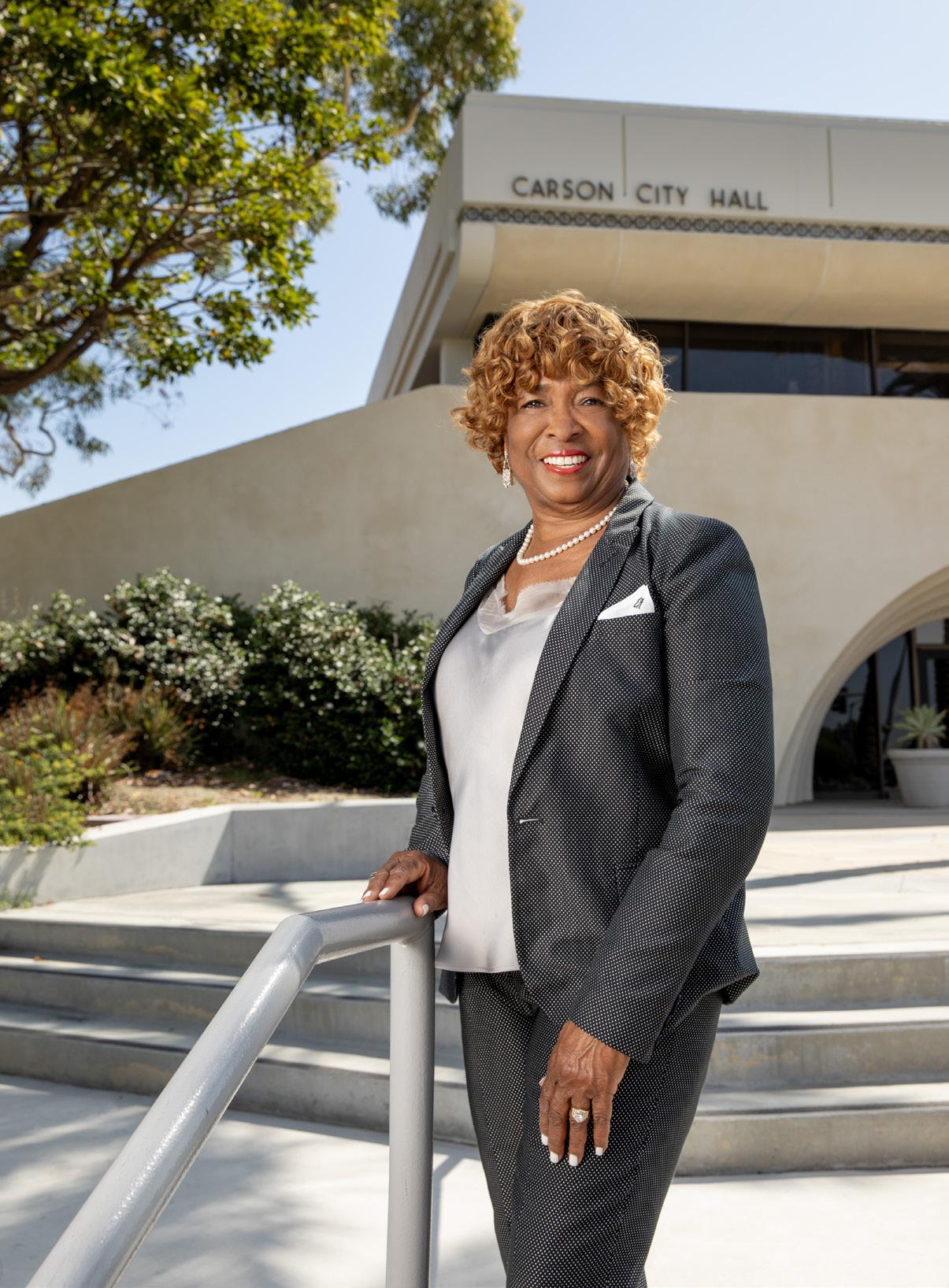 Carson Mayor Lula Davis-Holmes
Carson Mayor Lula Davis-Holmes
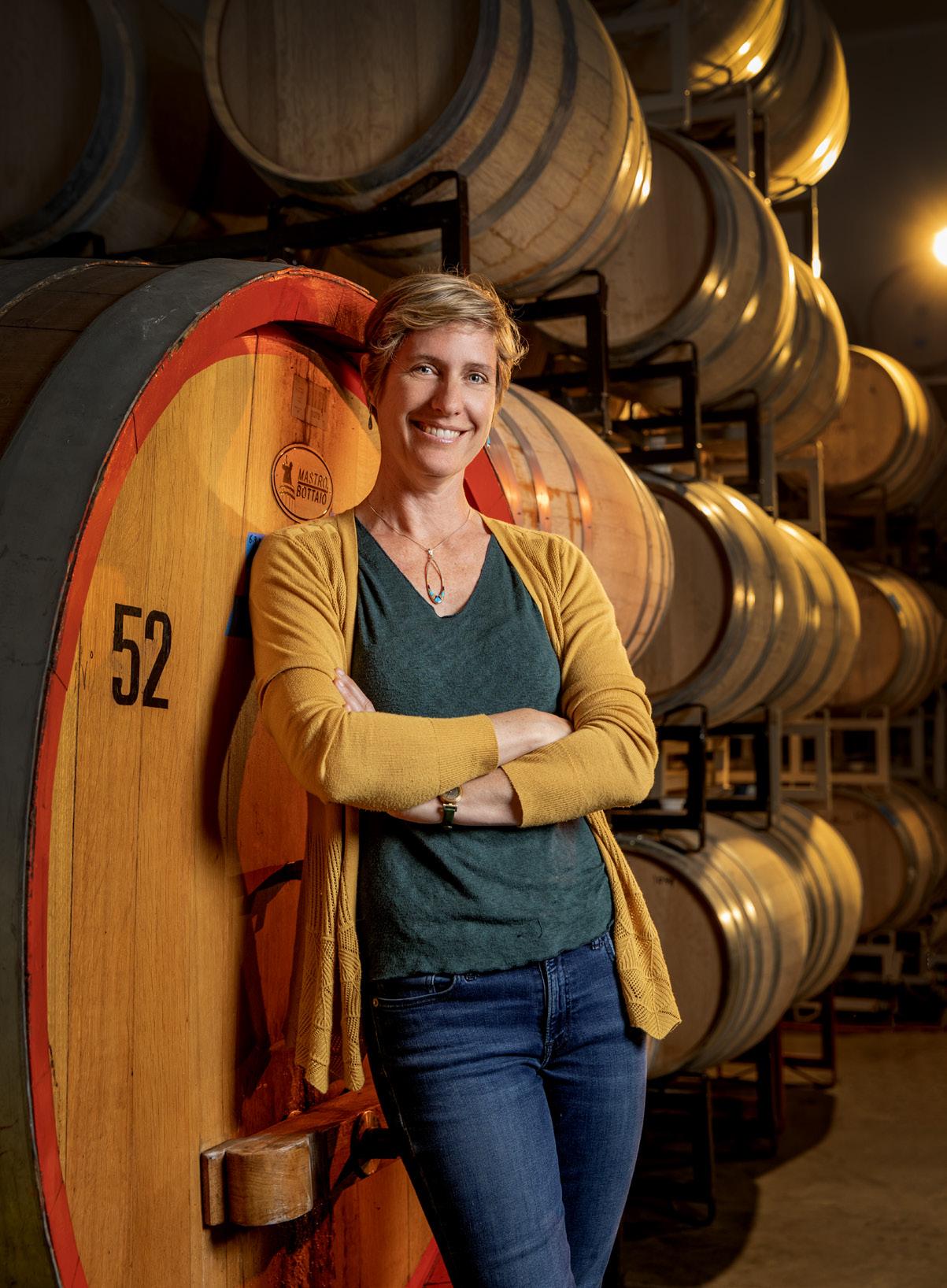
50 | Pulse Magazine Summer 2023
Laurie Porter at Smog City Brewing Co.
Brimming with Enthusiasm
Laurie Porter mixes craft beer-making, community involvement and industry leadership to create the perfect life blend.
Written by Nancy Sokoler Steiner | Photographed by Micheal Neveux
Animation and passion radiate from Laurie Porter when she talks about craft beer and Smog City Brewing Co., the business she founded with her husband, Jonathan, in 2011. Porter was still glowing from participating in L.A. Beer Week, a county-wide celebration of craft beer. The event took place the previous week for the first time since the pandemic.
“It was amazing and invigorating to see familiar faces after four years of isolation,” she says. “Our industry is all about collaboration and community. When we’re isolated, it changes the dynamic of the industry.”
The Porters opened Smog City Brewery & Taproom on Del Amo Boulevard in Torrance in 2013. Since then, they’ve added Smog City West on Hawthorne Boulevard and taprooms at SteelCraft in Long Beach and Public Market in Glendora.
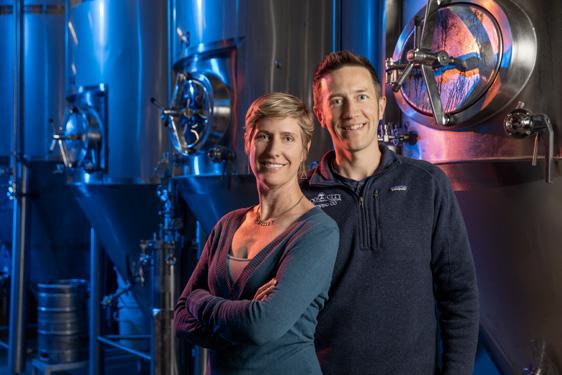
“We brew a wide array of creatively inspired quality beers—drawn from experiences in our own lives, whether tied to travel, food or a scent we encountered on a hike,” says Porter. Some of Smog City’s most popular beers include Sabre-Toothed Squirrel, Coffee Porter and Little Bo Pils. The Porters believe anyone who doesn’t like beer simply hasn't tasted the right one yet.
Porter says her job's most rewarding aspect involves building enduring customer relationships. “Many of our regulars who come in today, I served them back in 2013,” she says. When the taprooms hold anniversary parties, “it feels like a wedding—everybody hugs each other. There’s a lot of emotional investment.”
Porter believes in positively impacting her community and found a way to do so through involvement in Food Forward, a nonprofit organization that collects surplus fruits and vegetables and delivers them to hunger relief agencies. One of Smog City’s first activities with the organization involved creating a craft beer using excess kumquats and donating the profits to Food Forward.
The brewery belongs to 1% for the Planet, donating 1% of gross annual sales to environmental causes. Each year the Porters designate four environmental organizations to receive funds, creating a new beer in
collaboration with each group.
A member of the Torrance Chamber of Commerce, Porter received the chamber’s Community Catalyst Award in March. “I’m honored by the award and have always said my personal superpower is being a catalyst. I believe the world is a better place when you put good people together, and I love connecting very different people to make something new.”
Porter previously served as the president of the Los Angeles County Brewers Guild, which promotes craft beers, educates consumers and fosters camaraderie in the industry. The group’s membership grew substantially during her tenure.
Currently, Porter serves as chair of the California Craft Brewers Association, an advocacy organization. “I love talking to legislators and understanding the complexities of the government,” she says. She enjoys explaining what’s involved in craft brewing to legislators and helping them understand the impact of their decisions on the industry. At the same time, she says, she’s come to appreciate how they must balance a variety of interests and priorities.
Whether talking to her employees, customers, colleagues or lawmakers, Porter thrives on forming and maintaining relationships. “I feel very lucky,” she says. That’s a sentiment worth toasting. •
TorranceMemorial.org | 51 Community VIP
Torrance Memorial is excited to announce our return to in-person exercise classes! To accommodate the preferences of all participants, we will offer LIVE classes at our newly renovated Malaga Cove facility, and HYBRID classes at 3105 Lomita Boulevard, which are available in-person or at home on Zoom. Decide which option suits you best, and join in!
Class Schedule
3105 Lomita Blvd., Torrance
SEPTEMBER 11–OCTOBER 30
SEPTEMBER 14–NOVEMBER 2
NOVEMBER 13–DECEMBER 4
NOVEMBER 16–DECEMBER 14
CHAIR YOGA FOR STRENGTH AND BALANCES WITH SHARMONE
Monday or Thursday, 2 to 3 p.m.
This class uses a chair in seated and standing poses. Perfect for those with injuries or the need to get stronger overall.
SEPTEMBER 12–OCTOBER 31
NOVEMBER 14–DECEMBER 5
BEGINNING TAI CHI WITH RICHARD (Zoom only)
Tuesday, 2 to 3 p.m.
A sophisticated Chinese exercise that inspires physical and mental well-being. This class is an introduction to the form.
SEPTEMBER 12–OCTOBER 31
NOVEMBER 14–DECEMBER 5
MAT/FLOOR PILATES WITH KAREN (In-person only)
Tuesday, 4 to 4:50 p.m.
An all-levels class that focuses on strengthening your core muscles to help improve balance and provide support for your spine. Participants should have a moderate fitness and flexibility level. Please bring a mat to class.
SEPTEMBER 12–OCTOBER 31
NOVEMBER 14–DECEMBER 5
TRANSCENDANCE™ WITH DIDI (In-person only)
Tuesday, 6:30 to 7:30 p.m. TranscenDance™ takes the mindfulness of yoga off the mat and infuses it with freeform joyful movement. All fitness and mobility levels are welcome. Bring a yoga mat.
SEPTEMBER 13–NOVEMBER 1
NOVEMBER 15–DECEMBER 6
YOGA FOR WELLNESS WITH DEBBIE
Wednesday, 9:30 to 10:45 a.m. This class focuses on correct posture alignment, increasing strength, flexibility and range of motion.
SEPTEMBER 13–NOVEMBER 1
NOVEMBER 15–DECEMBER 6
CHAIR YOGA FOR OSTEOPOROSIS
Wednesday, 11:00 a.m. to noon Designed for those with osteopenia or osteoporosis who can’t get up and down off the floor. All levels welcome, and modifications will be offered.
SEPTEMBER 13–NOVEMBER 1
NOVEMBER 15–DECEMBER 6
PRENATAL YOGA
Wednesday, 5:45 to 6:45 p.m. Stay in shape during your pregnancy. Learn to breathe deeply, relax and strengthen your body in preparation for the demands of labor, birth and motherhood.
SEPTEMBER 13–NOVEMBER 1
NOVEMBER 15–DECEMBER 6
INTERMEDIATE TAI CHI WITH RICHARD (Zoom only)
Wednesday, 2 to 3 p.m. As students become more familiar with the techniques of balancing and relaxation, they will learn more of the movements to complete the form.
SEPTEMBER 13–NOVEMBER 1
NOVEMBER 15–DECEMBER 6
ADVANCED TAI CHI WITH RICHARD (Zoom only)
Wednesday, 3:15 to 4:15 p.m. Once the form is learned, students will go deeper into the fine points.
SEPTEMBER 13–NOVEMBER 1
NOVEMBER 15–DECEMBER 6
LINE DANCING WITH SHARON
Wednesday, 4:30 to 5:30 p.m. Learn Country Western favorites and other rhythmic moves (cha-cha, mambo, tango, samba) all done in line dance style to a variety of music genres.
SEPTEMBER 13–NOVEMBER 1
NOVEMBER 15–DECEMBER 6
INTEGRATED YOGA WITH ROBIN Wednesday, 7 to 8 p.m.
A yoga class integrating pranayama (breath work), asana (postures) and deeply relaxing meditation, such as yoga nidra, which can be the equivalent of four hours of sleep.
52 | Pulse Magazine Summer 2023 Calendar
Class Schedule
Malaga Cove, 2550 Via Tejon, Palos Verdes Estates
*All classes at this location are in person only unless otherwise noted.
SEPTEMBER 11–OCTOBER 30
NOVEMBER 13–DECEMBER 4
ALIGN THE SPINE WITH JOY
Monday, 9 to 10 a.m.
This class uses Feldenkrais Method lessons, without pain or strain, to restore or to avoid deterioration of your posture. Bring an exercise mat, hand towel and bath towel.
SEPTEMBER 11–OCTOBER 30
SEPTEMBER 14–NOVEMBER 2
NOVEMBER 13–DECEMBER 4
NOVEMBER 16–DECEMBER 14
STRETCHING FOR BETTER BALANCE WITH RANDY
Monday or Thursday, 10:30 to 11:15 a.m.
This fun workout done in a chair is designed to help increase flexibility and mobility to help prevent injuries.
SEPTEMBER 11–OCTOBER 30
SEPTEMBER 14–NOVEMBER 2
NOVEMBER 14–DECEMBER 6
NOVEMBER 16–DECEMBER 14
BEGINNING & INTERMEDIATE MUSCLE STRENGTHENING WITH RANDY
Tuesday or Thursday, 11:30 a.m. to 12:15 p.m.
Learn correct, safe techniques for strengthening your upper and lower body using a chair and flexible exercise bands.
SEPTEMBER 11–OCTOBER 30
NOVEMBER 13–DECEMBER 4
YOGA BASICS WITH LAURA (Zoom only)
Monday, 4 to 5 p.m. Harmonize body, mind and spirit through gentle stretching exercises, traditional yoga poses, and breathing techniques.
SEPTEMBER 19–NOVEMBER 7
SEPTEMBER 14–NOVEMBER 2
(In-person only)
NOVEMBER 14–DECEMBER 5
NOVEMBER 16–DECEMBER 14 (Zoom only)
QI GONG WITH GAYLA
Thursday, 9 to 10:15 a.m. A powerful but gentle practice of movement and meditation, helping the body release stored negative emotions. You can participate seated.
NOVEMBER 14–DECEMBER 5
NOVEMBER 16–DECEMBER 14
CHAIR EXERCISE: BEGINNING & INTERMEDIATE WITH PAM
Tuesday, 2 to 3 p.m. or Thursday 11 a.m. to noon
Using a chair as a support prop, we will perform exercises to improve strength and endurance without using a mat or going to the floor. Wear comfortable clothes and supportive shoes and bring an exercise band.
SEPTEMBER 13–NOVEMBER 1
NOVEMBER 15–DECEMBER 6
STRETCH AND SOUND BATH MEDITATION WITH AI
Wednesday, 9:30 to 10:20 a.m. Beginning with gentle stretch and breath work, you will be introduced to different sounds and vibrations from various sound bath instruments which reduce stress. Bring a yoga mat, a blanket and a pillow. An eye mask is optional.
NOVEMBER 14–DECEMBER 5
NOVEMBER 15–DECEMBER 6
BE KIND TO YOUR JOINTS WITH PAM
Tuesday, 3:30 to 4:30 or Wednesday, 12:30 to 1:30 p.m.
A slow and gentle class using long stretches to promote joint movement. Wear comfortable clothes to move in. Bring a towel and mat.
SEPTEMBER 16–NOVEMBER 4
NOVEMBER 18–DECEMBER 16
YOGA FOR STRESS REDUCTION WITH DEBI
Saturday, 9:30 to 10:45 a.m. The class focus is on gentle yoga poses on the floor, seated and standing, breath work and meditation. Yoga relieves stress by encouraging a calmer mind.
Please call 310-517-4711 to register for all paid classes or register at TorranceMemorial.org/classes. Pricing is $80 for each 8-week series, and $40 for each 4-week series. Not all classes are listed here, so check the website for more.
TorranceMemorial.org | 53
Don’t see what you’re looking for? Check TorranceMemorial.org/classes for more information or call 310-517-4666.
Breathlessly Bookish
Written by Diane Krieger
Photographed by Siri Berting
If he isn’t holding a stethoscope, chances are Deren Sinkowitz, MD, has a book in his hands. The Torrance Memorial pulmonologist is an unapologetic bibliomaniac. On weekends you’ll likely find him flipping through dusty volumes at the Rose Bowl Flea Market or the Long Beach Antique Market. →
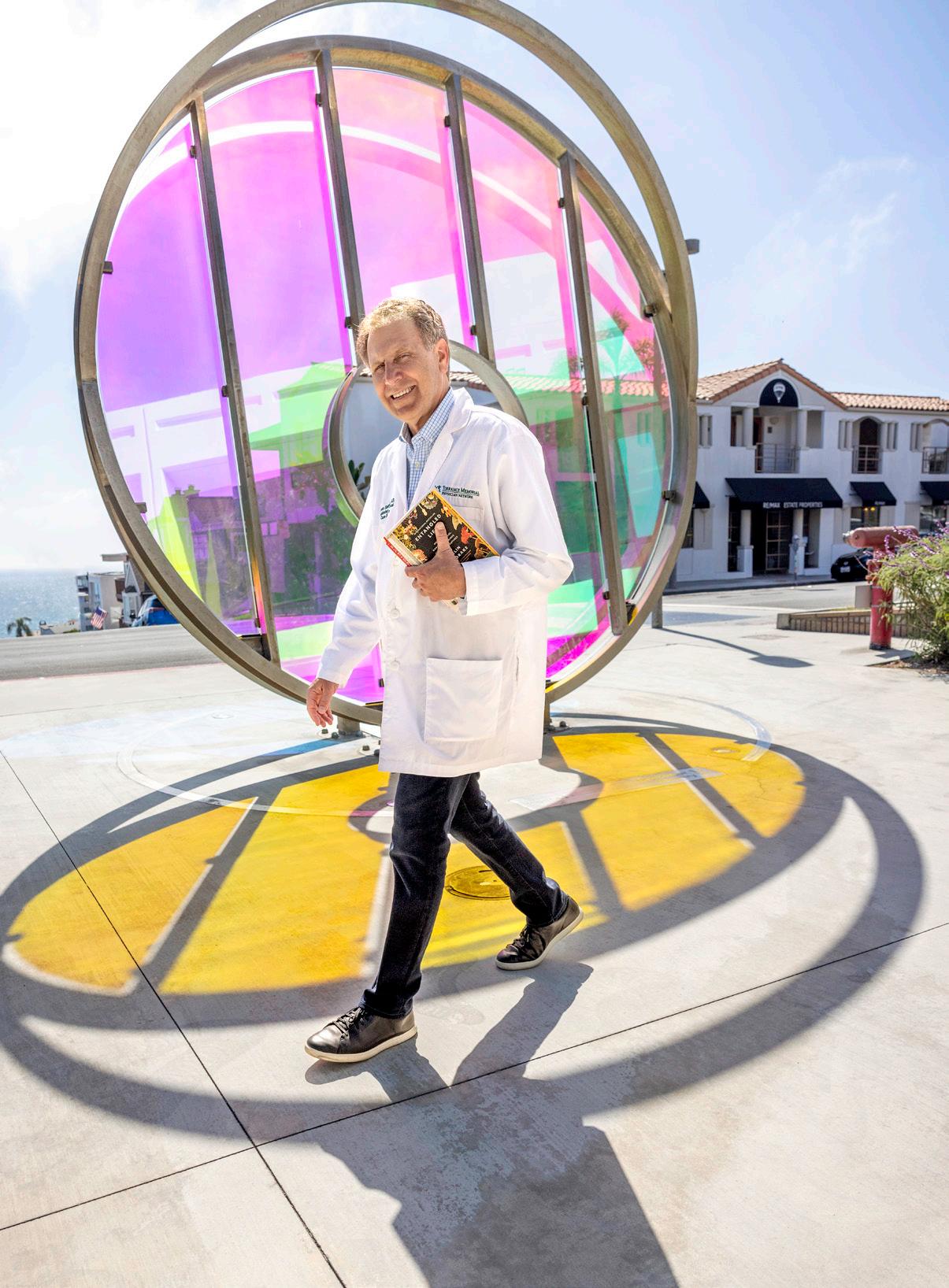
54 | Pulse Magazine Summer 2023
MD LOCAL Manh a ttan BE A CH 90266
Deren Sinkowitz,MD
Deren Sinkowitz, MD, a Torrance Memorial Physician Network pulmonologist and avid reader, checks out the Manhattan Beach Library.
“I collect books,” he says. “The house is overflowing with them.”
There’s no overarching theme to his collecting. He and his wife, Mae, “just buy what we want to read, which is really everything.” Biographies, science, American history, literature—“whatever catches our eye.”
For a special treat, they’ll trek to Ojai, home of Bart’s Books, touted as the largest outdoor independent bookstore in America. “There’s almost a mile of books, and we just get lost in them,” Dr. Sinkowitz says.
It all started in early childhood with visits to his great uncle’s Manhattan apartment. The Lower East Side neighborhood was teeming with used bookstores. Those visits also exposed young Deren to his uncle’s medical practice on the first floor.
By middle school, he knew he wanted to be a doctor. He attended Johns Hopkins University, earned his MD at New York Medical College, and completed his residency and pulmonary/ critical care fellowships at UCLA. His first job was in the respiratory unit at St. Mary Medical Center in Long Beach, where he later helmed the teaching program.
Curious about management, Dr. Sinkowitz signed up for a health care leadership certificate program at Cal State Long Beach and went on to get an MBA from USC in 1997. But he ultimately decided against a career in hospital administration.
Instead, Dr. Sinkowitz entered private practice in Torrance, teaching part time at UCLA and leading numerous clinical trials on emerging drugs. He’s been affiliated with Torrance Memorial since 2003, including 15 years as medical director of the critical care and respiratory care units. In 2018 he joined the Torrance Memorial Physician Network, practicing general pulmonary critical care.
Along with these professional pursuits, family life has filled Dr. Sinkowitz’s days. He’s been married for 27
years to Mae, whom he met on a blind date. They have two adult sons, Jake and Ian.
When the boys were younger, Dr. Sinkowitz spent many hours on the sidelines of soccer fields. Both sons played club soccer, and Ian went on to compete in college. His Tufts University team won the NCAA Division III title during Ian’s freshman year.
When they aren’t book-hunting, you’ll find the Sinkowitzes at gallery openings and art shows around Los Angeles. “We’re definitely museum fanatics—mainly art museums but also history and science museums,” he says.
Mae is an artist. She makes and sells fine jewelry. She also paints. The dining room of their Manhattan Beach home has been converted into a jewelry-making workspace and art gallery.
On a recent trip to Spain—their third—the Sinkowitzes spent days inside Madrid’s big-three art museums: the Prado, Reina Sofia and the Thyssen-Bornemisza. The trip also provided opportunities for Dr. Sinkowitz to speak Spanish. It’s his lifelong goal to become fluent.
“I’ve been trying on and off since fifth grade,” he notes sheepishly. He’d achieved some fluency as a pulmonary fellow during a rotation in Costa Rica, but “then it sort of went away.” Before the pandemic, he’d travel to a coastal town in Honduras on annual medical missions. His then-teenage son Jake sometimes tagged along. Today Jake is starting his second year of medical school at Georgetown University.
As for Dr. Sinkowitz, when he isn’t seeing patients, he’s usually reading. Lately he has been dipping into medical tomes, gearing up for his critical-care recertification exam.
“This will be my fourth and last time,” says the 65-year-old pulmonologist, anticipating a stage of life when he can finally let loose his unbridled bibliomania. •
Vital Stats
Age: 65
Hometown: Manhattan Beach
Books on His Nightstand:
Entangled Life: How Fungi Make Our Worlds, Change Our Minds & Shape Our Futures (2020) by Merlin Sheldrake
Narrative of the Life of Frederick Douglass (1845) by Frederick Douglass
The Fellowship: The Untold Story of Frank Lloyd Wright and the Taliesin Fellowship, (2007) by Roger Friedland and Harold Zellman
Health Care Will Not Reform Itself: A User's Guide to Refocusing and Reforming American Health Care (2009) by George C. Halvorson
The Philosophical Breakfast Club: Four Remarkable Friends Who Transformed Science and Changed the World (2011) by Laura J. Snyder
Sapiens: A Brief History of Humankind (2011) by Yuval Noah Harari
The Namesake: A Novel (2007) by Jhumpa Lahiri
The Survival of Charles Darwin (1984) by Ronald W. Clark
Several issues of The Economist magazine
TorranceMemorial.org | 55
Flash Events
FOUNDATION EMERGENCY DEPARTMENT FUNDRAISING EVENTS
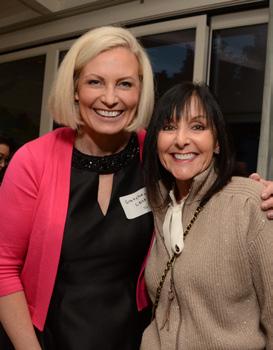

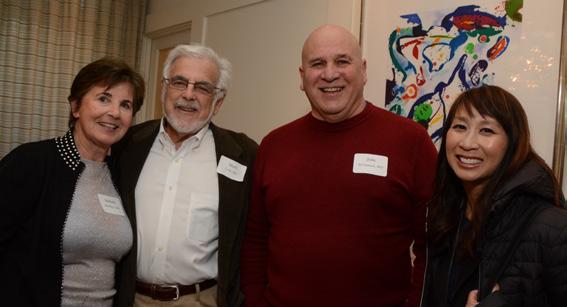
March 30 and April 18, 2023
Torrance Memorial is launching a seven-year, $40 million Emergency Department (ED) expansion project to increase capacity, efficiency and access to emergency care. The Melanie and Richard Lundquist Emergency Department will expand to a two-story facility to accommodate the increasing number of patient visits.

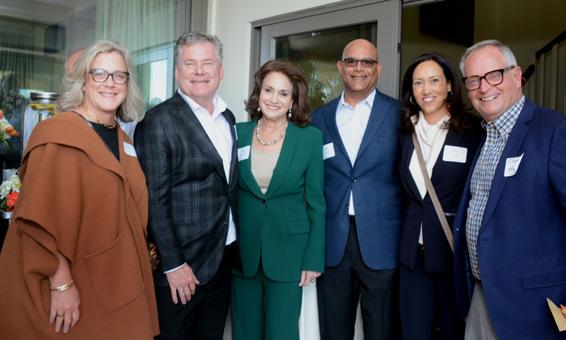
Torrance Memorial Foundation’s campaign goal is to raise $30 million to support the expansion. To raise awareness in the community, guests gathered in local homes to hear from ED doctors and nurses about the critical need for this expansion. On March 30, Laurie and Tom McCarthy hosted in their Manhattan Beach home with comments from Gretchen Lent, MD, and Angela Shvartsman, RN. On April 18, Meg and Anthony Walker hosted in their Palos Verdes home where Dana Kennedy, MD, and Cynthia Libertini, RN, shared with guests. To learn more or donate to the emergency department expansion fund, visit TorranceMemorialFoundation. org/donate.
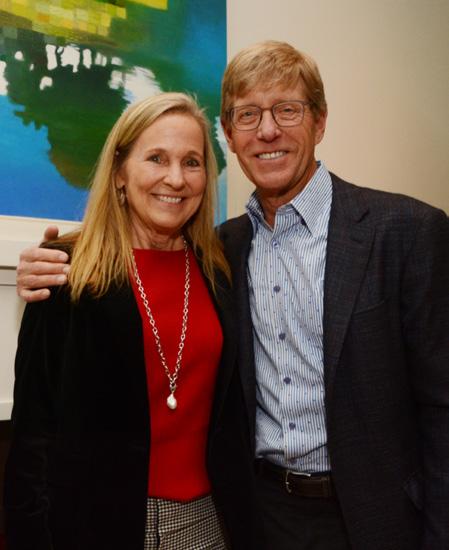
56 | Pulse Magazine Summer 2023
3 4 5 6 1 2
Photos by Deidre Davidson
MCCARTHY HOME MARCH 30
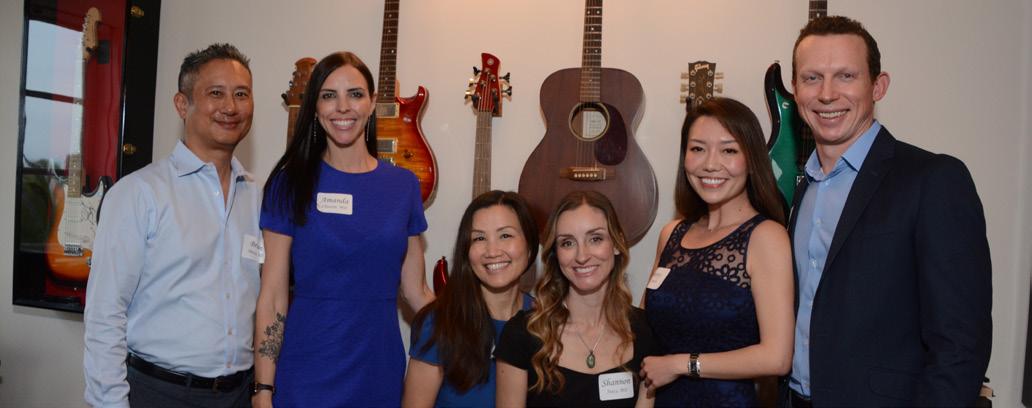
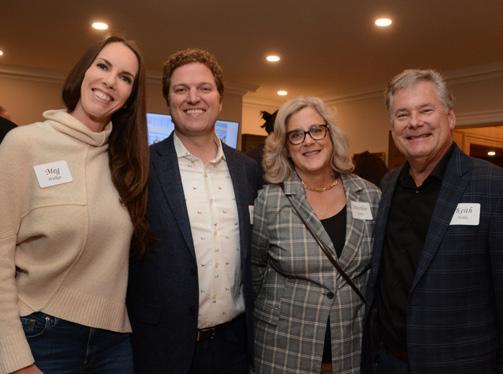
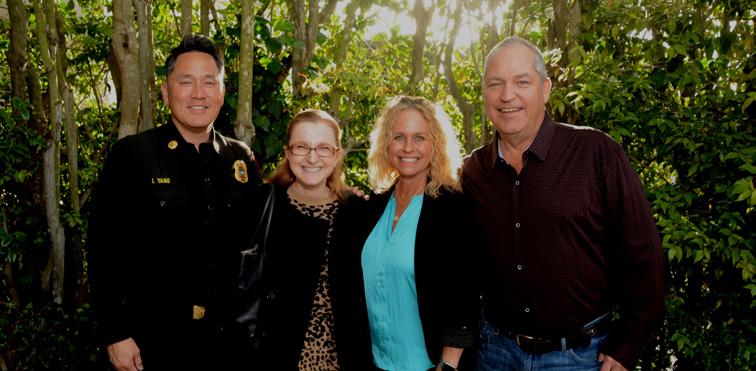
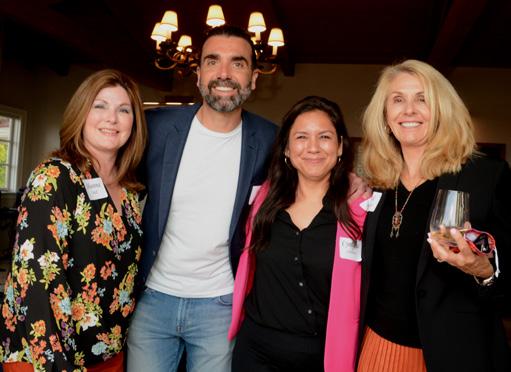
TorranceMemorial.org | 57
1. Laurie McCarthy, Tom McCarthy
2. Diana Brandt, Barbara Bentley, Timme Gunderlock, Laurie McCarthy, Gretchen Lent, MD
3. Merilee Hobbs, Keith Hobbs, Judith Gassner, Sam Sheth, Kay Sheth, Charlie Steinmetz
4. Barbara Demming Lurie, Mark Lurie, MD, John McNamara, MD, Angela Shvartsman
5. Gretchen Lent, MD, Janice Tecimer
6. Gina Kirkpatrick, Gregg Kirkpatrick
WALKER HOME APRIL 18
7. Brian Miura, MD, Amanda Clauson, MD, Stephanie Tang, DO, Shannon Stacy, MD, Jenny Luo, MD, Dana Kennedy, MD
8. Shanna Hall, Federico Libertini, Cynthia Libertini, Heidi Mackenbach
9. Meg Walker, Anthony Walker, Merilee Hobbs, Keith Hobbs
7 8 9 10
10. Issac Yang, Stephanie Bezner, Kathy Levy, Eric Nakkim, MD
2.
37TH ANNUAL GOLF TOURNAMENT
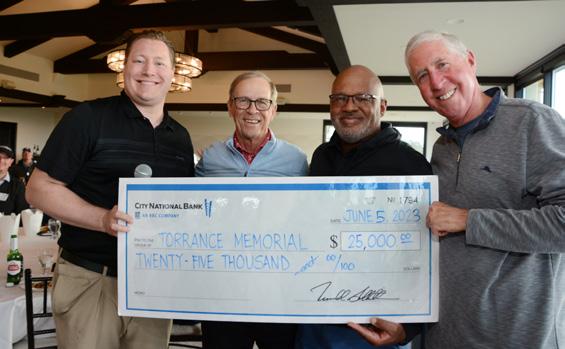
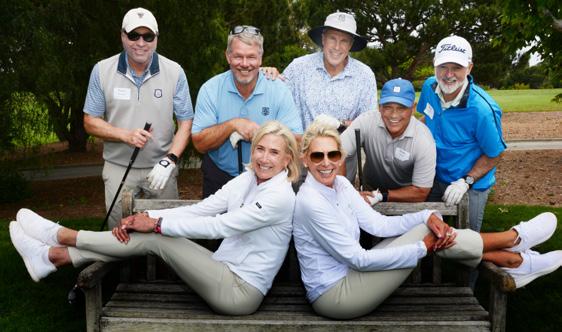
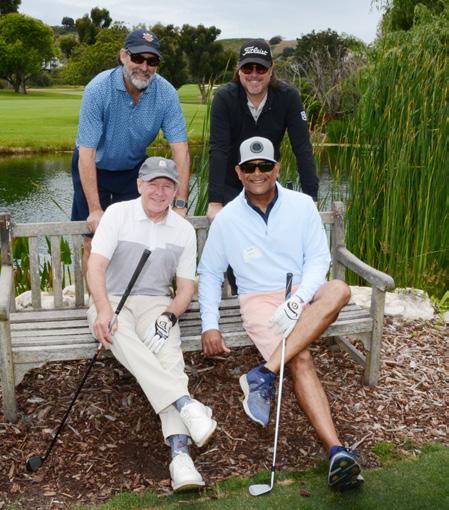
June 5, 2023
Palos Verdes Golf Club was the setting for the 37th annual Torrance Memorial Golf Tournament sponsored by City National Bank. Before the shotgun start for the scrambleformat tournament, all 141 golfers competed in a stampede miracle putt with one winning ball landing in the cup! After playing 18 holes, golfers returned to the Clubhouse for a silent auction, reception and awards ceremony. The 2023 Golf Committee, chaired by Rick Higgins, also deserves thanks for their diligence and participation in making the event successful. All proceeds support the hospital’s emergency department expansion campaign.
Tracy Bracken, Steve Lopes, Dan Finnegan, Dave Klein, Brian Huben, Front: Randy Dauchot, Allison Mayer
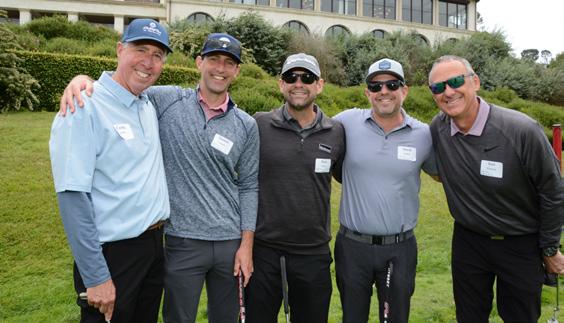
3. Craig Leach, Daniel Leach, Paul Leach, David Leach, Eric DuPont
4. Back; Jeff Miller, Levi Lupercio, Front: Greg Davis, Sam Sheth
5. Back: Alex Shen, MD, Gretchen Lent, MD, Jenny Luo, MD, Brian Miura, MD, Brandy Van Zitter, Kurt Hansen, MD, Front: Adam Goodman, MD, Elisa Anhalt, MD, Michael Fiore PA, Dana Kennedy, MD, Erisa Pooee

58 | Pulse Magazine Summer 2023
Flash Events
Photos by Deidre Davidson
1. Mike Emenhiser, Rick Higgins, Brent Williams, Craig Leach
Back:
1 2 3 4
5
AMBASSADORS AT THE COMEDY & MAGIC CLUB
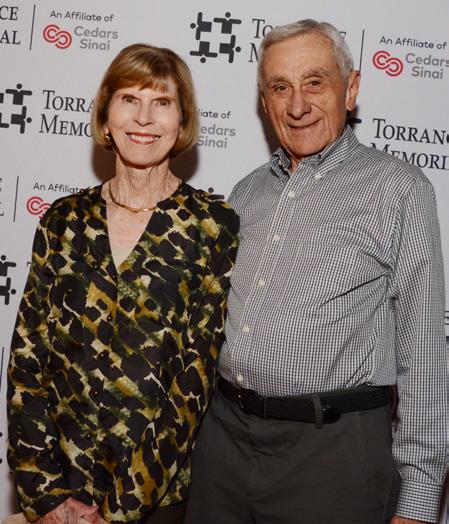
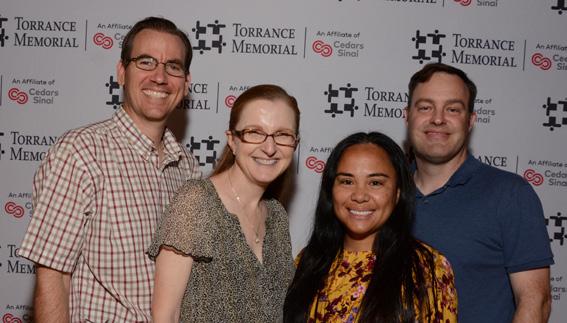
July 12, 2023
The Torrance Memorial Ambassadors enjoyed an entertaining evening at Mike Lacey’s Comedy & Magic Club, the premier venue for stand-up comedy in Hermosa Beach. They were joined by the hospital’s Foundation board members, trustees, VIPs, physicians and employees. The evening’s line-up offered up plenty of laughs. Surprise guest comedian Paul Reiser—actor, writer, author and well-known master of observational comedy— headlined the night with 45 minutes of hilarious and relatable observations about the aging process that resonated with everyone. Reiser says he became addicted to comedy the first time he made someone laugh.
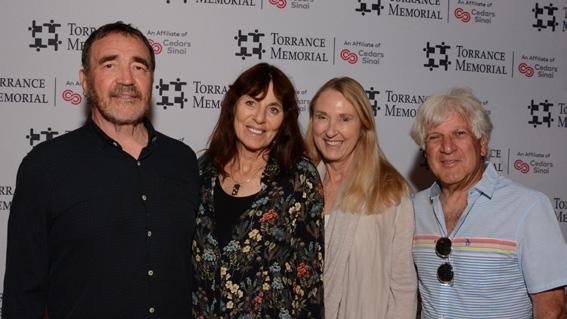
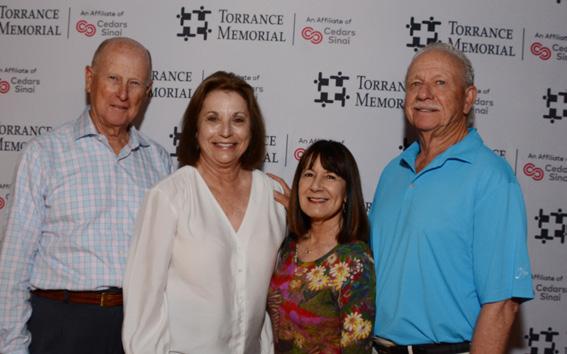
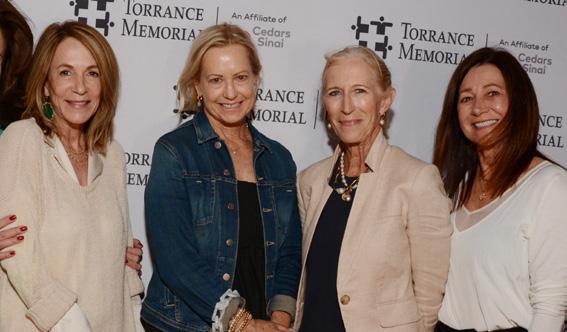
TorranceMemorial.org | 59
Photos by Deidre Davidson
1. Sandra Jackson, Karl Jackson
2. Joe Hohm, Terry Hohm, Lori Marfield, Joel Marfield
3. Elaine McRae, Judy Matsunaga, Mary Ingram Roksolana Vecerek
4. Brian Bezner, Stephanie Bezner, Anh Stenzel, Greg Stenzel
1 2 3 4 5
5. Moe Gelbart, PhD, Debbi Gelbart, Kathy Borgida, Bernie Borgida, MD
Flash Events
HERITAGE SOCIETY LUNCHEON
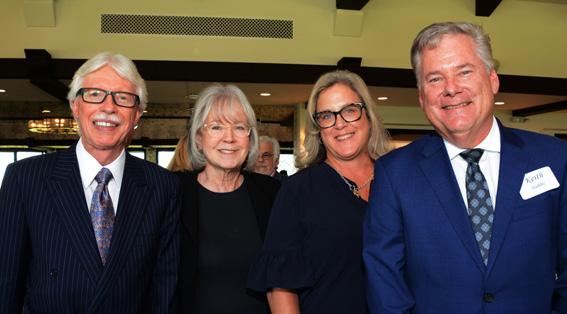

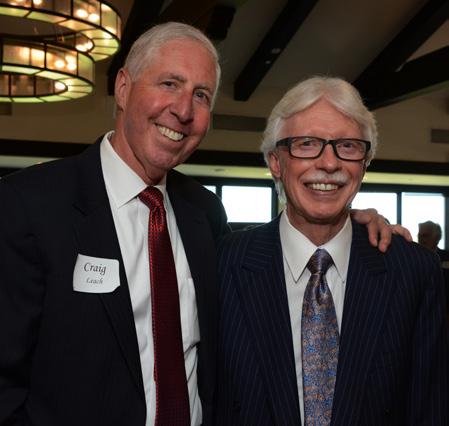

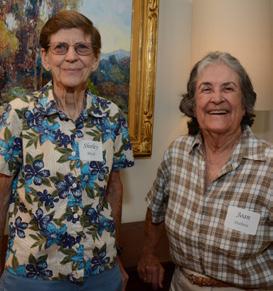
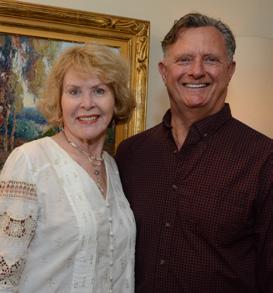
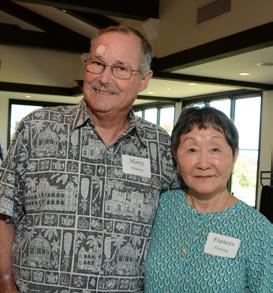
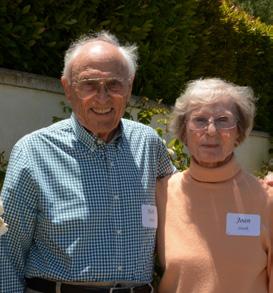
July 19, 2023
Torrance Memorial Heritage Society members were appreciated and acknowledged at the annual luncheon at Palos Verdes Golf Club. They were joined by donors who have contributed annually for 10 or more consecutive years. Guests heard from retiring CEO Craig Leach as he delivered his final State of the Medical Center after nearly four decades with the hospital. Heritage Society members are those who have designated a gift to Torrance Memorial in their estate plan. For more information, please contact Sandy VandenBerge, director of planned giving, at 310-784-4843 or sandy.vandenberge@tmmc.com. You may also visit TorranceMemorialFoundation.org/planned-giving.
60 | Pulse Magazine Summer 2023
Photos by Deidre Davidson
1. Craig Leach, Richard Lundquist
2. Mimi Brody, Sandy VandenBerge, Jill Brody
3. Herb Stark, Joan Stark
4. Judith Opdahl, Daniel Hovenstine, MD
5. Richard Lundquist, Melanie Lundquist, Merilee Hobbs, Keith Hobbs
6. Harry Fleming, Frances Fleming
7. Shirley Blush, Joanie Stahura
1 2 3 5 6 8 4 7
8. Sheri Dodge, Casey Dodge
YPPA SUMMER PARTY

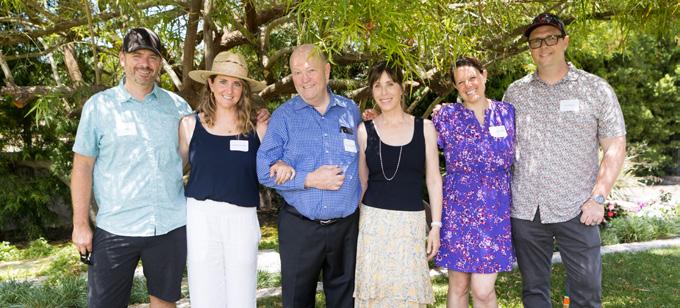
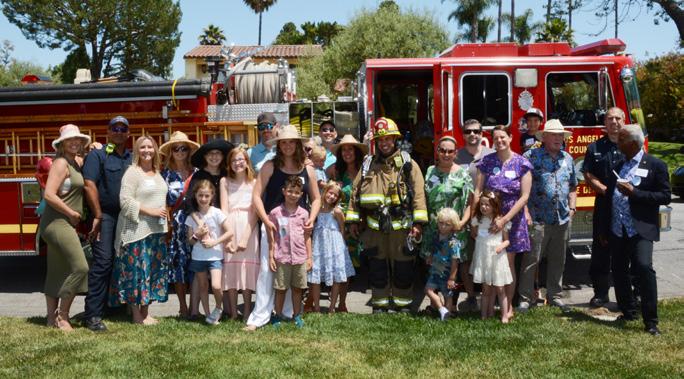
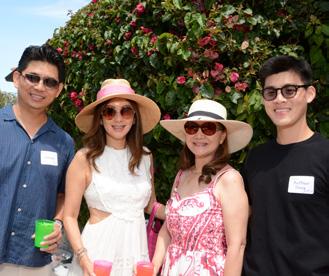
July 22, 2023
Young Physicians and Professionals Alliance (YPPA) held its first Summer Party at the home of Phyllis and Steven Spierer. Families enjoyed Mexican fare, along with Handel’s ice cream sundaes and a bounce house. YPPA membership supports Torrance Memorial Foundation’s campaign to raise $30 million to support the emergency department expansion. Stephanie Tang, MD, shared how the expansion will ensure our local community will have continued access to the advanced care and services they have grown to trust at Torrance Memorial. For more information on membership and upcoming events visit TorranceMemorial.org/YPPA.
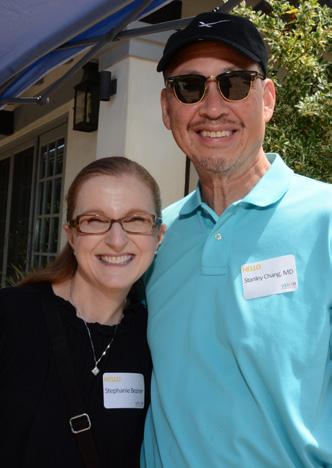
TorranceMemorial.org | 61
Photos by Deidre Davidson
1. Los Angeles County Fire Department and guests
2. Stephanie Bezner, Stanley Chang, MD
3. Frank Yang, Sandy Yang, Joanne Chang, Matthew Chang
4. Ben Archer, Melanie Archer, Steven Spierer, Phyllis Spierer, Cynthia Spierer, Joseph Spierer
1 2 3 4 5
5. Sophia Neveu, Brandon Hohm, Stephanie Tang, DO, Angela Park Sheldon, Brandy Van Zitter, Nadia Antii, Sejal Penkar, Stephanie Bezner, Matthew Marshall
After nearly four decades, Torrance Memorial CEO Craig Leach will retire on October 31, 2023. Born and raised in Torrance, California, he has served his community well. This timeline is a look back at his many accomplishments over the past 40 years.
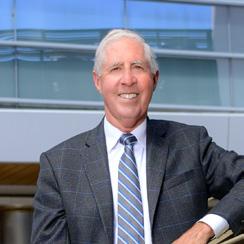
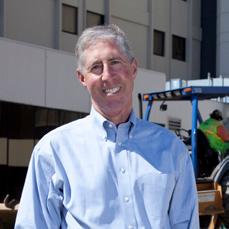
Craig joined Torrance Memorial as director of the finance department.
Breast Diagnostic Center opened. Hoffman Health Conference Center inaugurated.
Became a Top 100 Hospital for the first time.
Transitional Care Unit opened.
Craig announces his retirement effective October 31.
Became one of the largest four hospitals in L.A. County.

Led Torrance Memorial through the unprecedented COVID-19 pandemic.
Hunt Cancer Center opened.
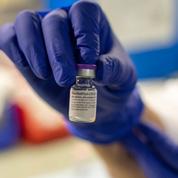
Cedars-Sinai affiliation established.
Craig became senior vice president of finance. Carson medical offices opened.
Manhattan Beach medical offices opened (expanding ambulatory care).
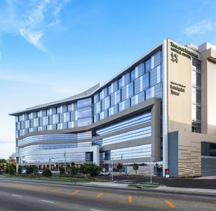
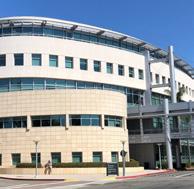
Craig became executive vice president/COO. Torrance Memorial purchased Cigna Building at 3333 Skypark.
The Thelma McMillen Recovery Center opened.
West Tower opened.
George Graham retired, and Craig became president/CEO.
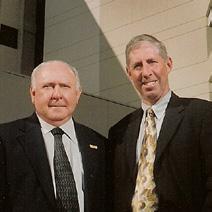
Lundquist Neuroscience Institute and Lundquist Orthopedic Institute established.
Lundquist Tower opened. New state-of-the-art radiation/ oncology center opened.
Torrance Memorial Physician Network and Torrance Memorial IPA established. Specialty Center opened. Awarded as a Nursing Magnet Hospital.
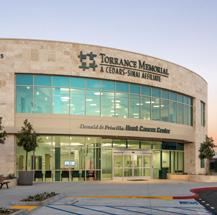
Lemkin Oncology and Palliative Care Pavilion opened. 5 new surgical suites opened.
Emergency department expansion completed.
62 | Pulse Magazine Summer 2023
A Look Back
1984 1996 2004 2012 2019 1993 2001 2007 2017 2021 1986 2006 1997 2014 2020 1994 2008 2003 2018 2023 START FINISH
OUR HOSPITAL
Torrance Memorial
TorranceMemorial.org
3330 Lomita Blvd., Torrance
310-325-9110
TORRANCE MEMORIAL LOCATION DIRECTORY
PRIMARY CARE
Torrance Memorial Physician Network TMPhysicianNetwork.org
Torrance
• 2900 Lomita Blvd
• 3400 Lomita Blvd, Suite 104
• 3640 Lomita Blvd. Suite 200
• 3333 Skypark Dr, Suites 100, 160, 320*
• 3701 Skypark Dr, Suites 100, 220*
• 2841 Lomita Blvd, Suite 315
Carson
• 824 E. Carson St, Suite 101
El Segundo
• 2110 E. El Segundo Blvd, Suite 200
Hermosa Beach
• 705 Pier Ave, Suites A, B*
Manhattan Beach
• 855 Manhattan Beach Blvd, Suites 102, 201, 204, 206*
Palos Verdes
• 602 Deep Valley Dr, Suite 300*
Rancho Palos Verdes
• 29409 S. Western Ave
El Segundo:
• Multispecialty Medical Office Center

PEDIATRIC OFFICES
• 3440 Lomita Blvd, Suite 429, Torrance
• 3400 Lomita Blvd, Suite 301, Torrance
• 824 E. Carson St, Suite 202, Carson
• 705 Pier Ave, Suite C, Hermosa Beach
• 855 Manhattan Beach Blvd, Suite 103, Manhattan Beach
• 2110 E. El Segundo Blvd, Suite 210, El Segundo
Call our Physician Referral Coordinators for assistance in finding a doctor and making an appointment: 310-891-6717.
SPECIALTY CARE
Hunt Cancer Center • Cardiology • Ear, Nose & Throat • Endocrinology • Neurology • OBGYN • Lundquist Orthopedic Institute • Pain Management • Palliative Care • Pediatrics • Physical Therapy & Rehabilitation • Primary Care • Pulmonary Disease, Critical Care & Sleep Medicine • Rheumatology • Urgent Care • Infectious Disease • Care Coordination Center/ Coumadin Clinic
For a referral to a specialist, contact Torrance Memorial at 310-517-4700.
URGENT CARE
• Urgent Care – Torrance
Weekdays 9 a.m. to 8 p.m.
Weekends 8 a.m. to 6 p.m. 2900 Lomita Blvd., Torrance • 310-784-3740
• Urgent Care – Manhattan Beach
Weekdays 4 to 9 p.m.;
Weekends 8 a.m. to 5 p.m. 855 Manhattan Beach Blvd, Suite 101, Manhattan Beach • 310-939-7873
• Urgent Care – El Segundo
Weekdays 9 a.m. to 8 p.m.;
Weekends 8 a.m. to 6 p.m. 2110 E. El Segundo Blvd, Suite 100 El Segundo • 310-517-7010
BREAST DIAGNOSTIC CENTERS
• Torrance 3275 Skypark Dr
• Carson 824 E. Carson St, Suite 208
• Manhattan Beach 855 Manhattan Beach Blvd, Suite 208
• Palos Verdes 65 Peninsula Center, Rolling Hills Estates
To make an appointment call 310-517-4709.
RECOVERY CENTER
• Thelma McMillen Recovery Center 3333 Skypark Park Dr, Suite 200, Torrance 310-784-4879
*Laboratory Draw Station
A LEGACY OF CARE











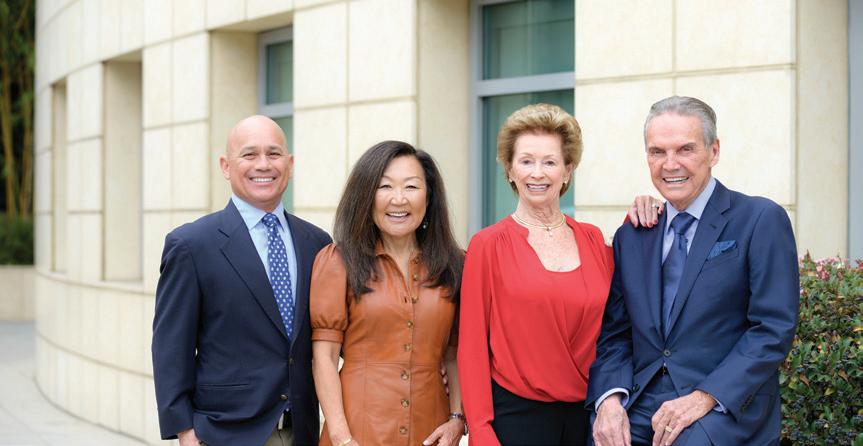
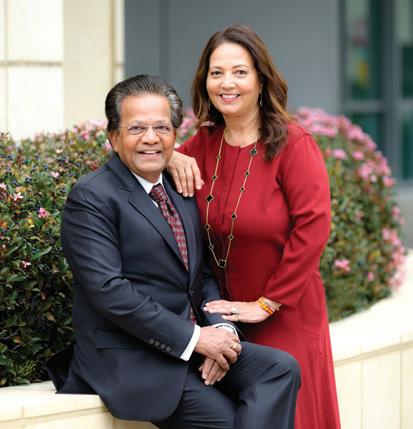
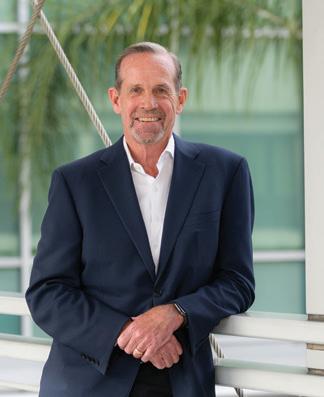

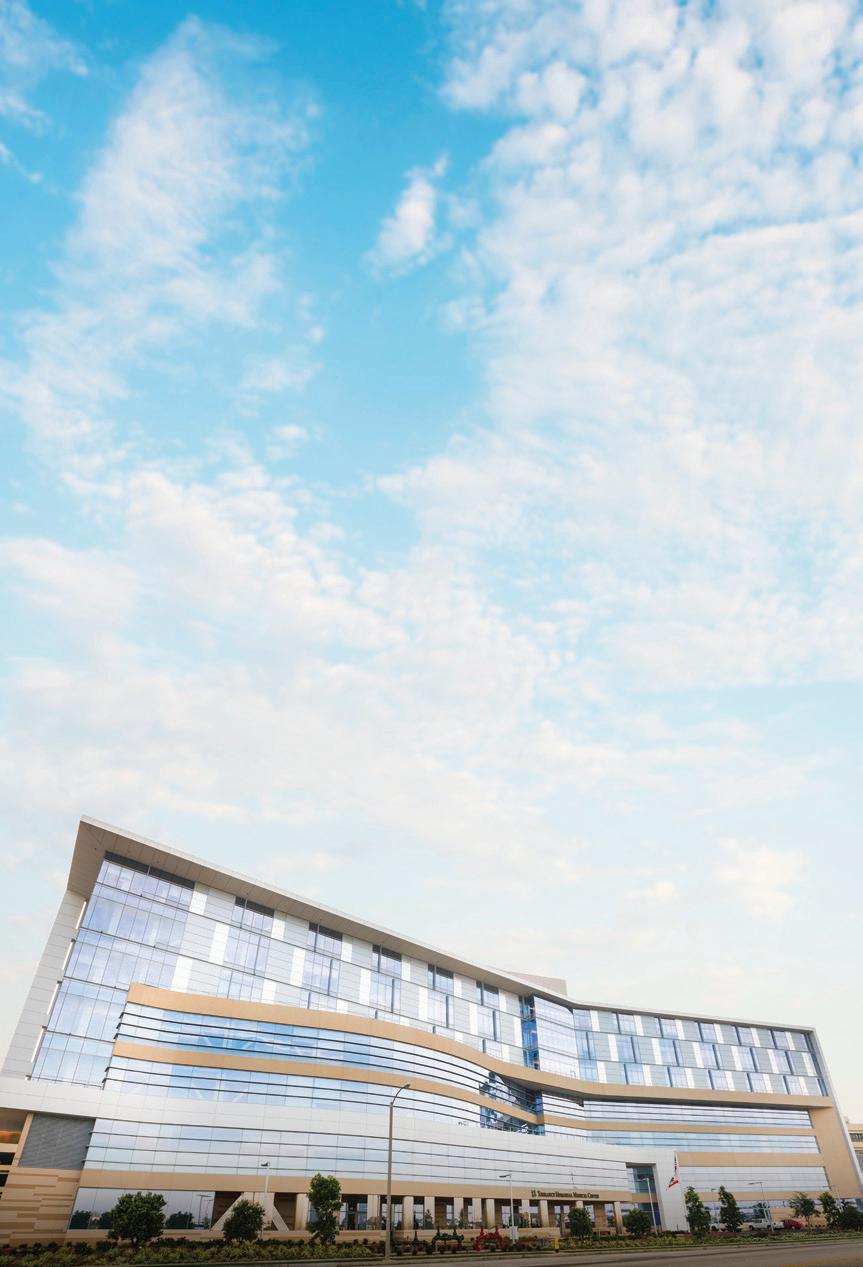
Our lives are defined in many ways, some which reflect the level of our accomplishments. But for those with a deeper interest, few qualities endure longer than the expression of our love—whether it’s aimed toward our family, our community or the thousands of lives we help transform along the way. Your support and contributions, of any amount, help expert community care thrive for years to come. Learn more about starting your own legacy at TMLegacy.org
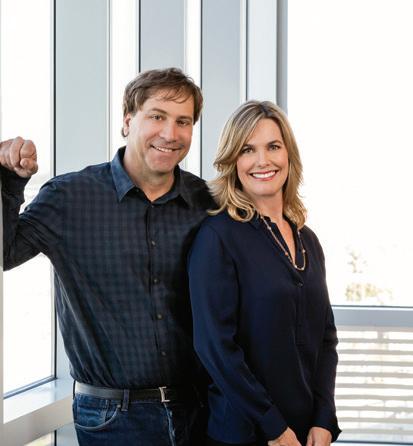






























 The Torrance Memorial Eating Disorders Unit is located in Torrance at 3330 Lomita Blvd 3rd Floor, Hunt Tower. They can be reached at 310-325-4353.
The Torrance Memorial Eating Disorders Unit is located in Torrance at 3330 Lomita Blvd 3rd Floor, Hunt Tower. They can be reached at 310-325-4353.
 Written by Laura Roe Stevens
Written by Laura Roe Stevens


 Written by Lisa Buffington
Written by Lisa Buffington














 Written by John Ferrari
Written by John Ferrari

































 Carson Mayor Lula Davis-Holmes
Carson Mayor Lula Davis-Holmes





























































